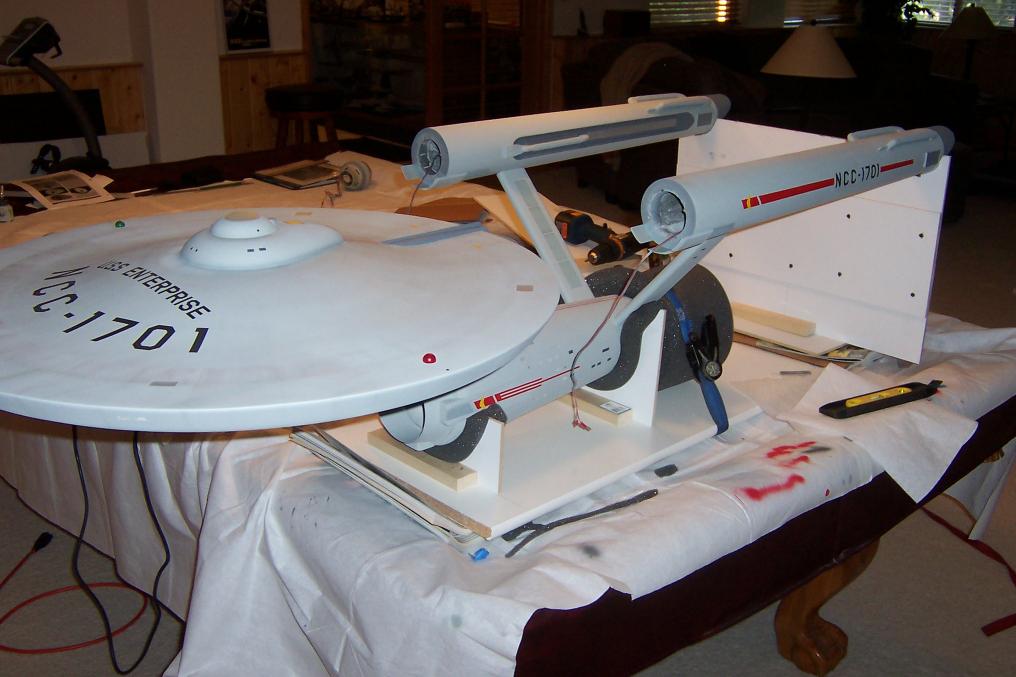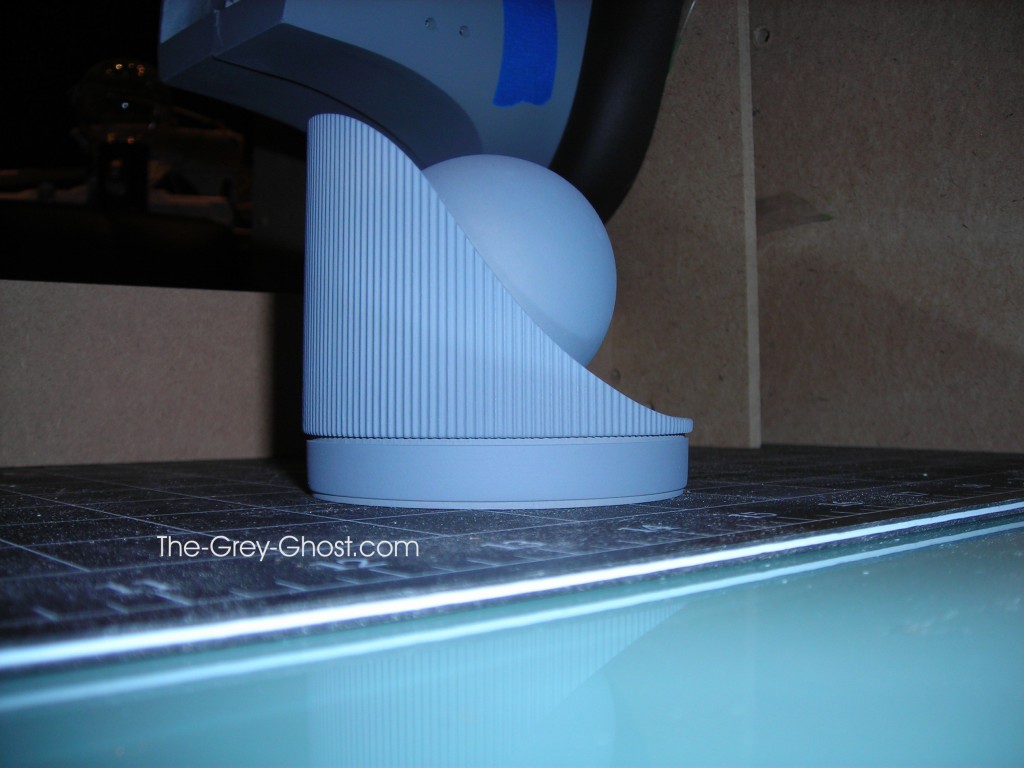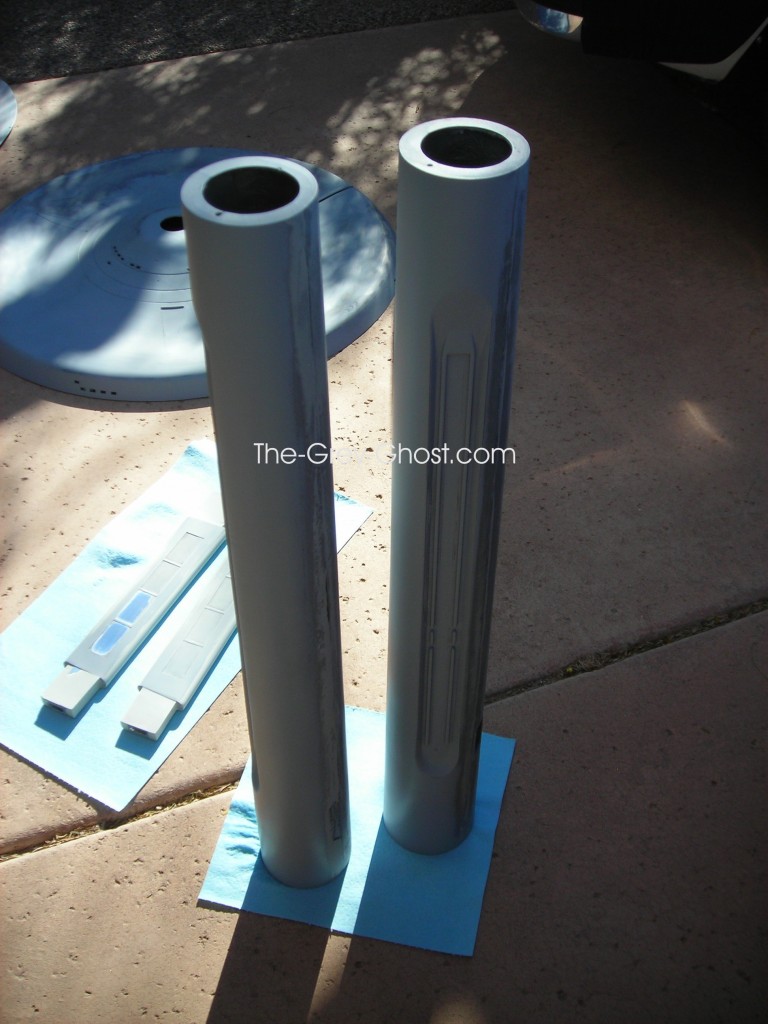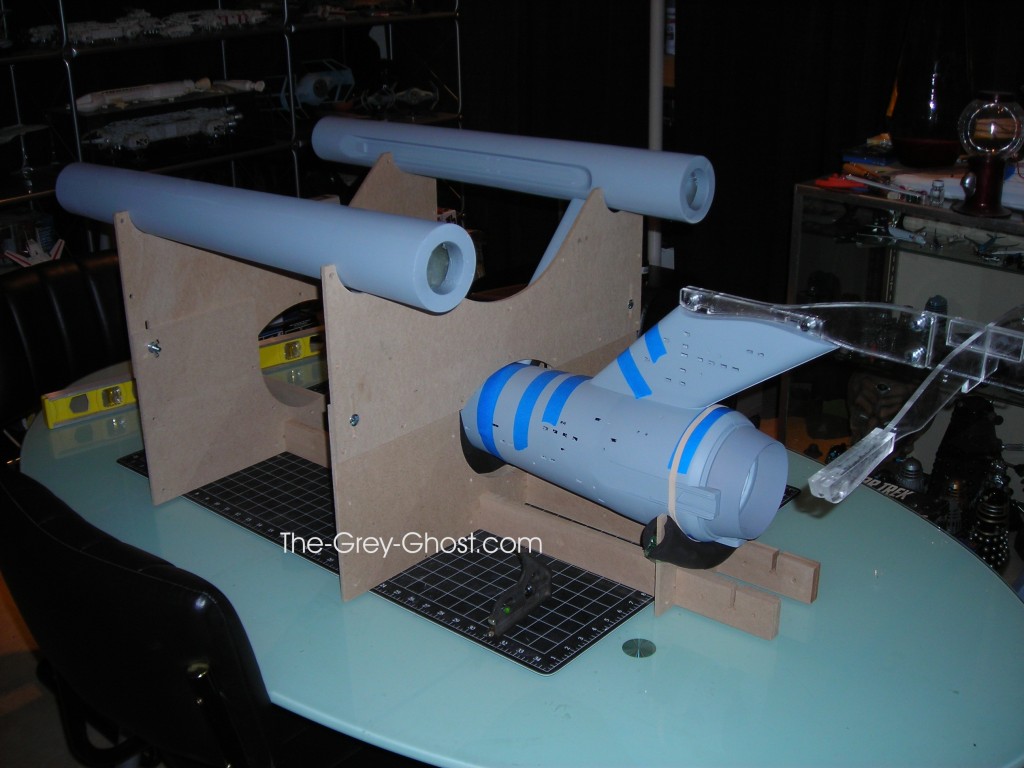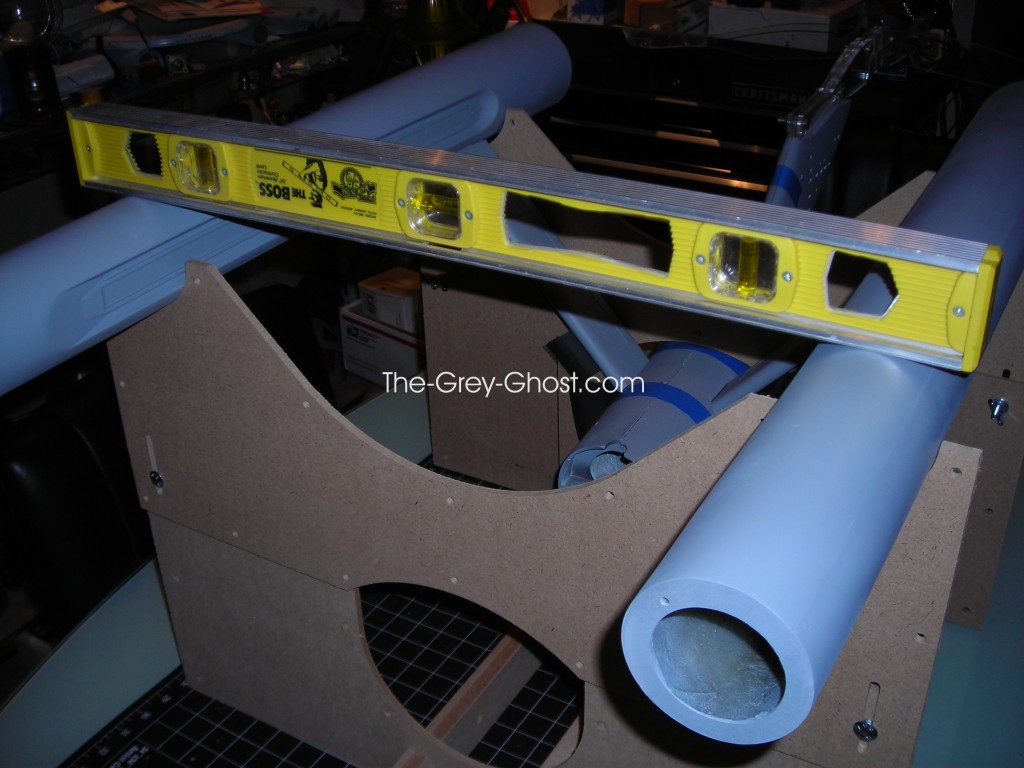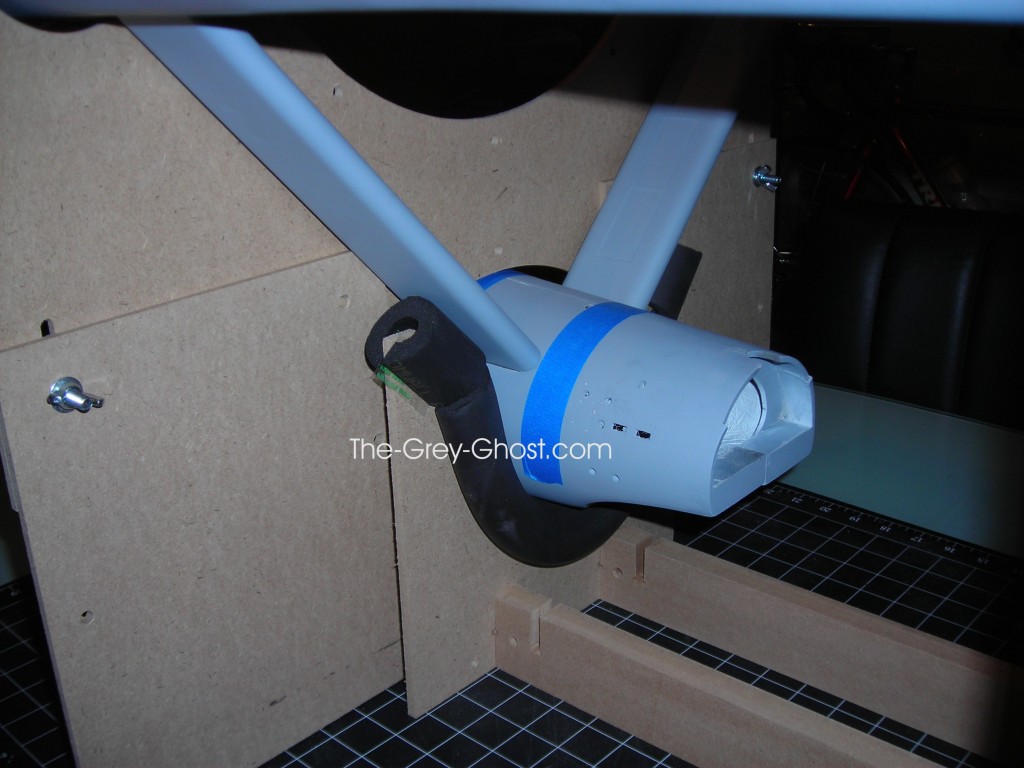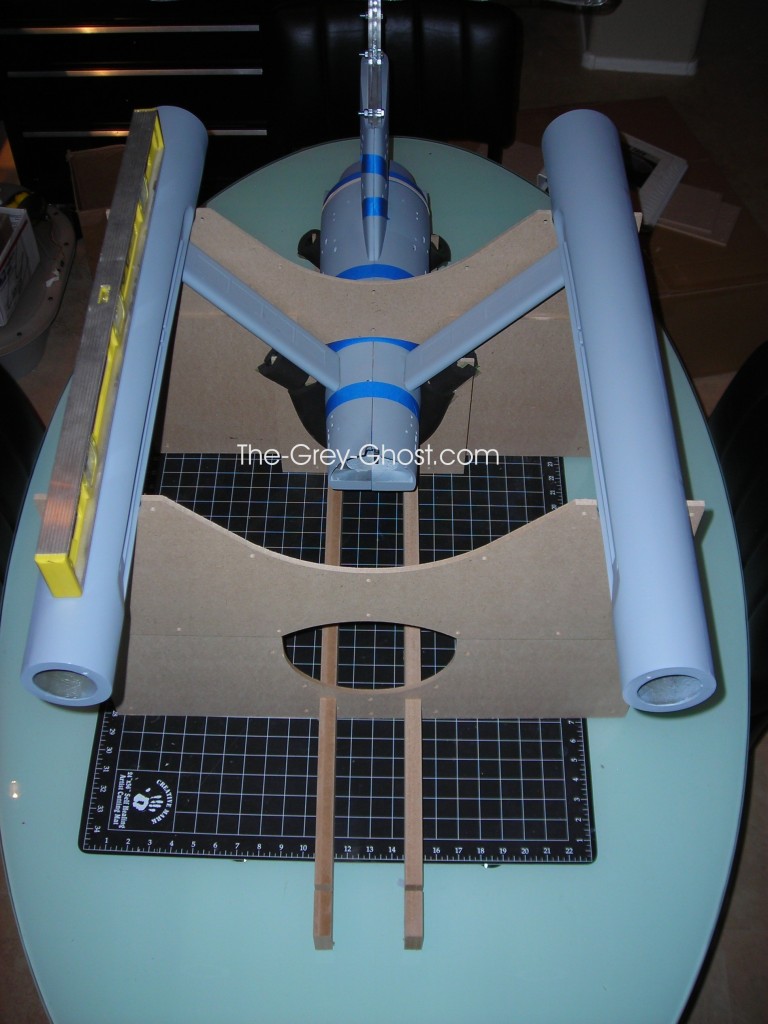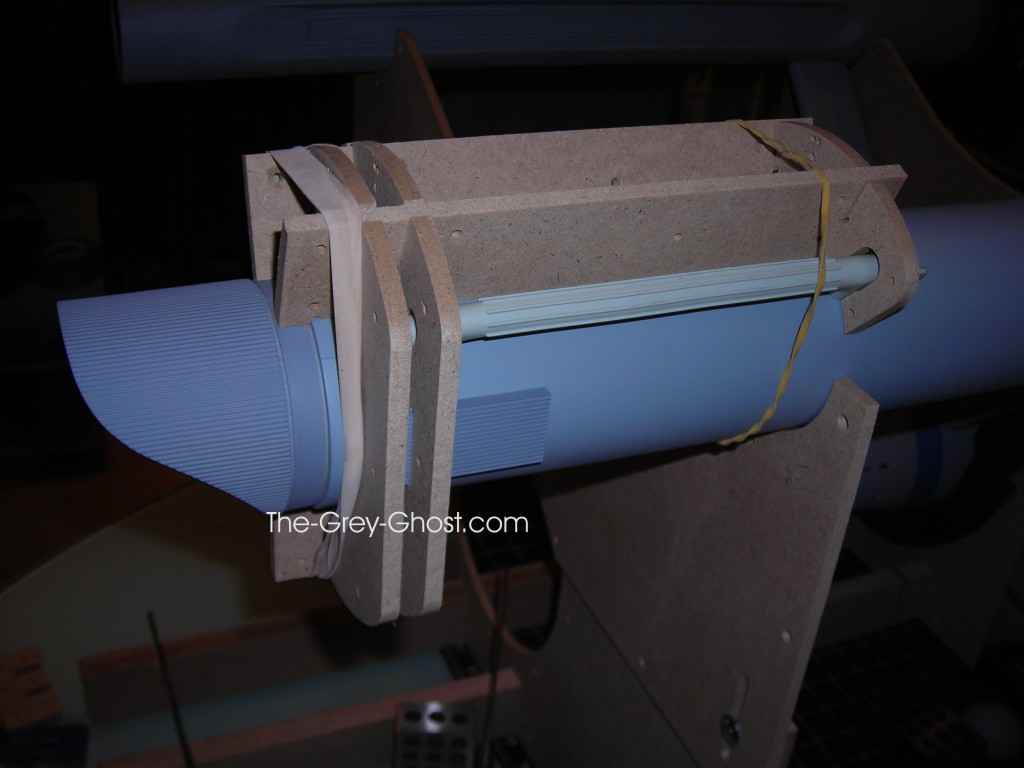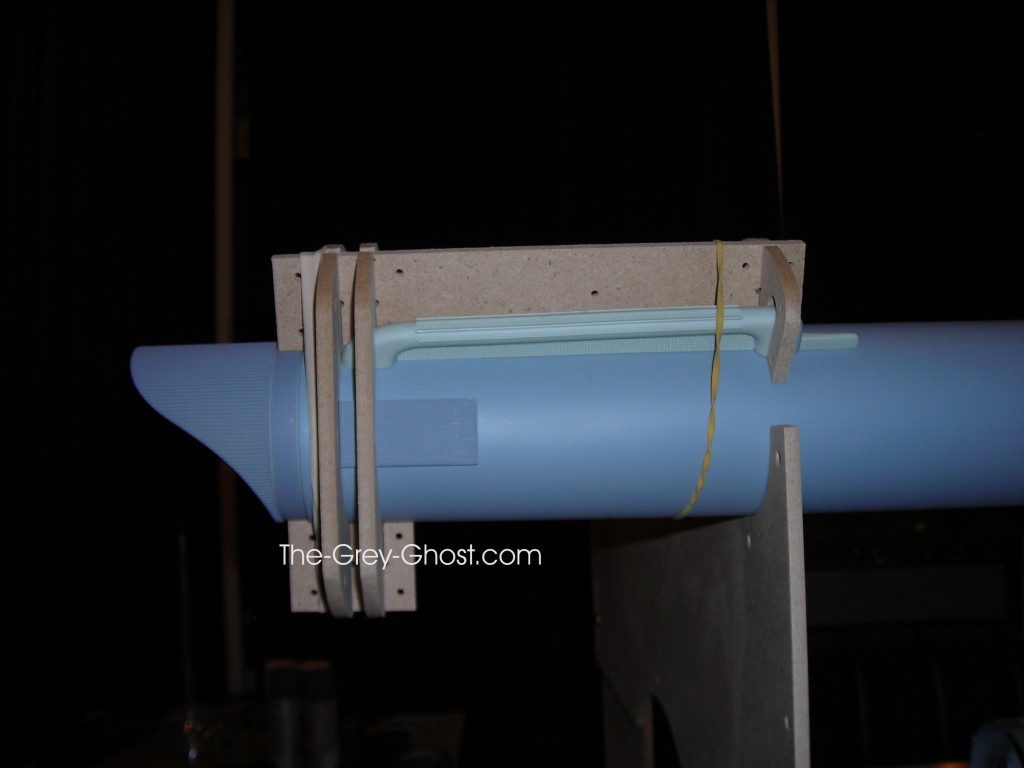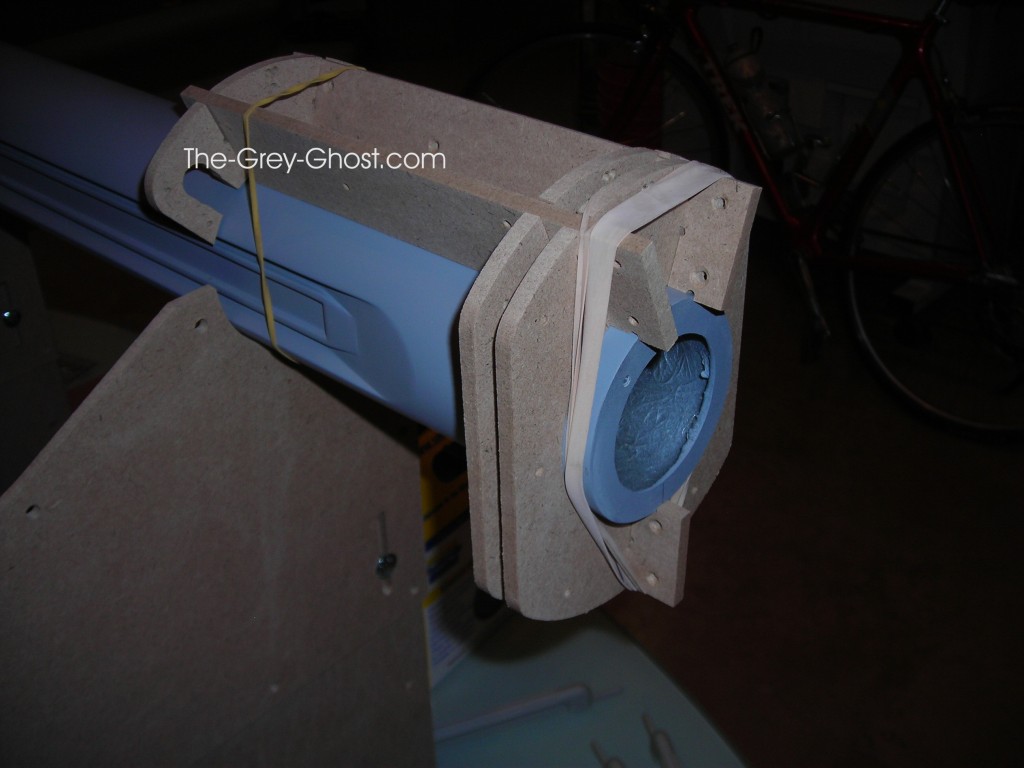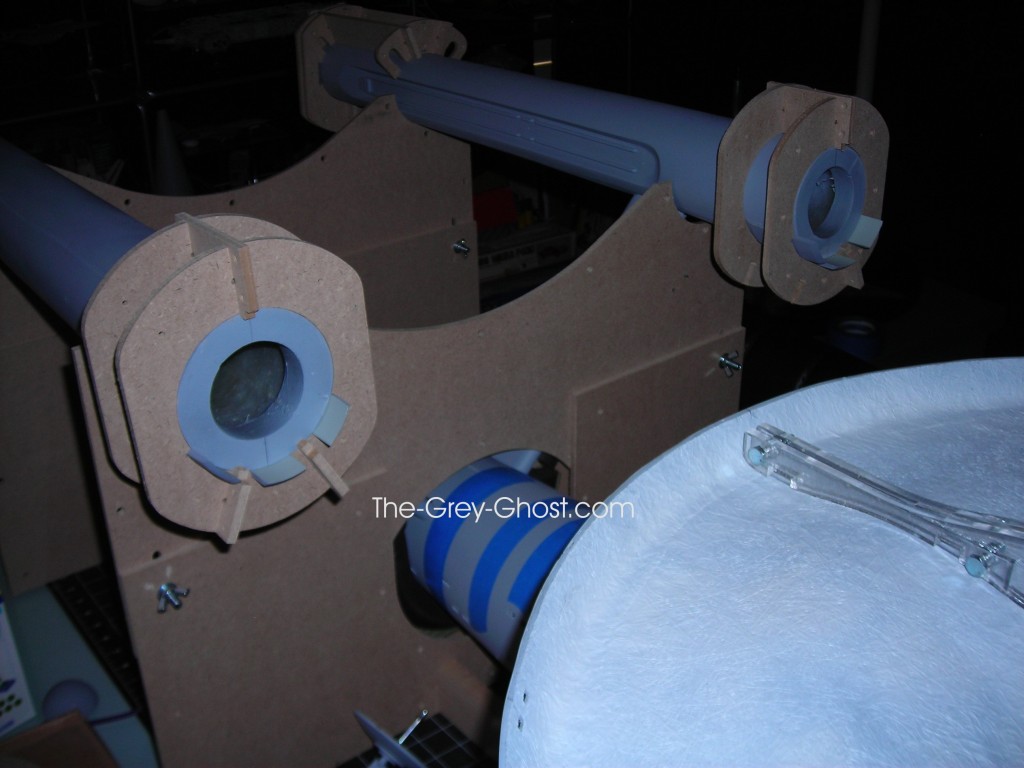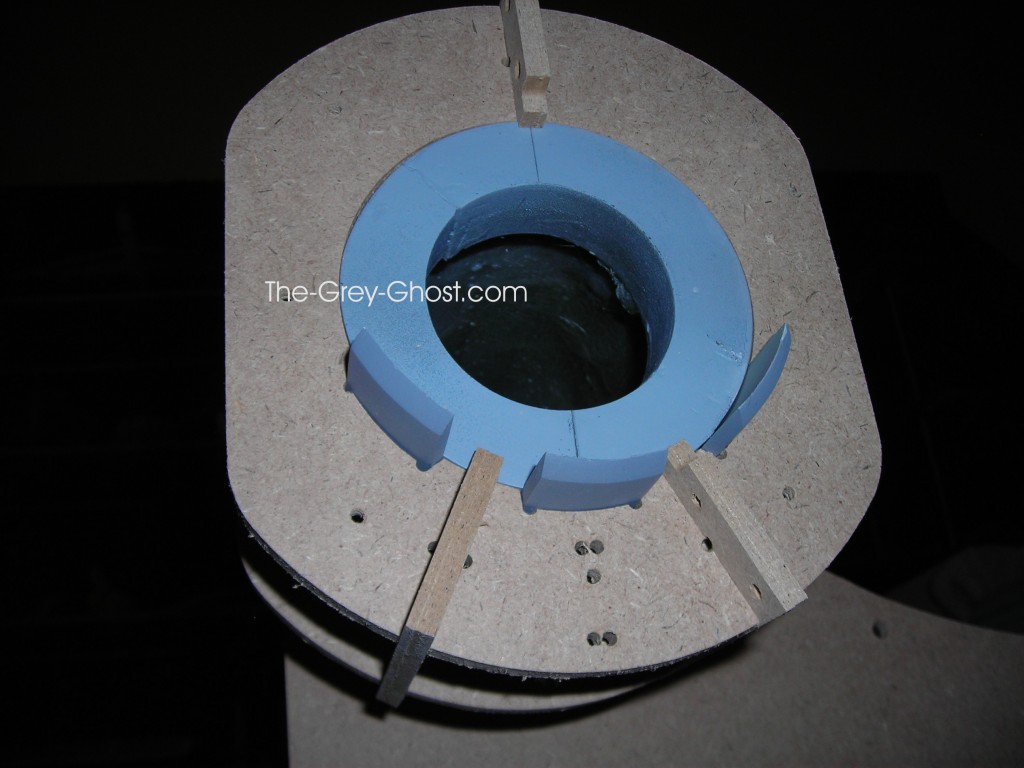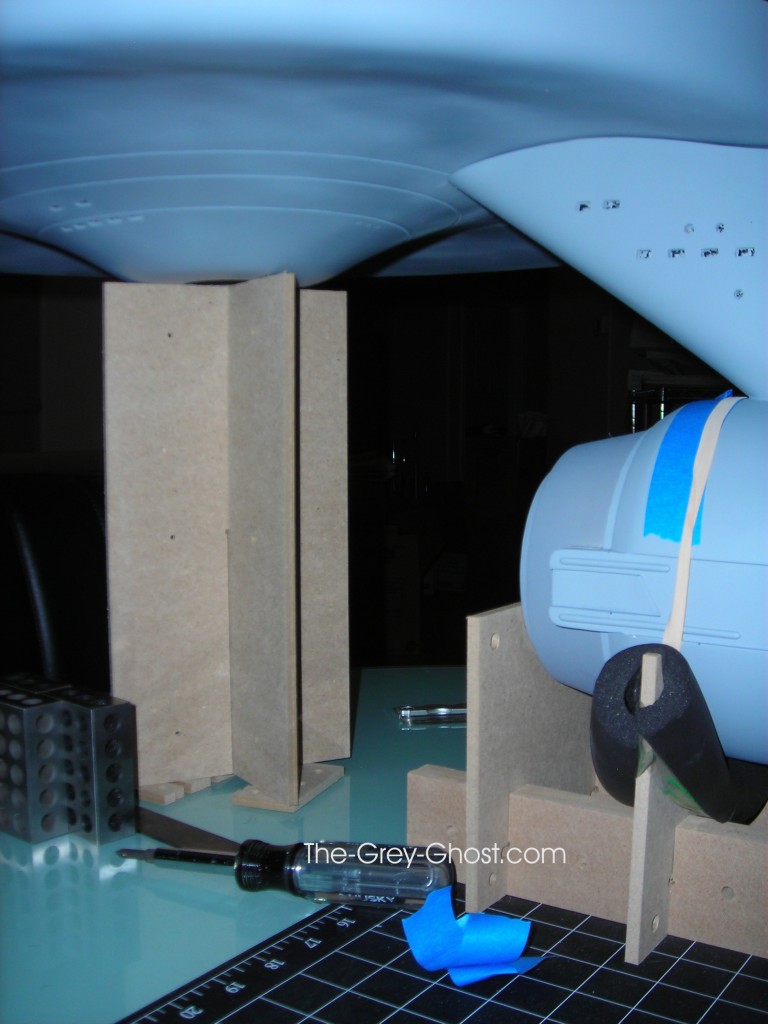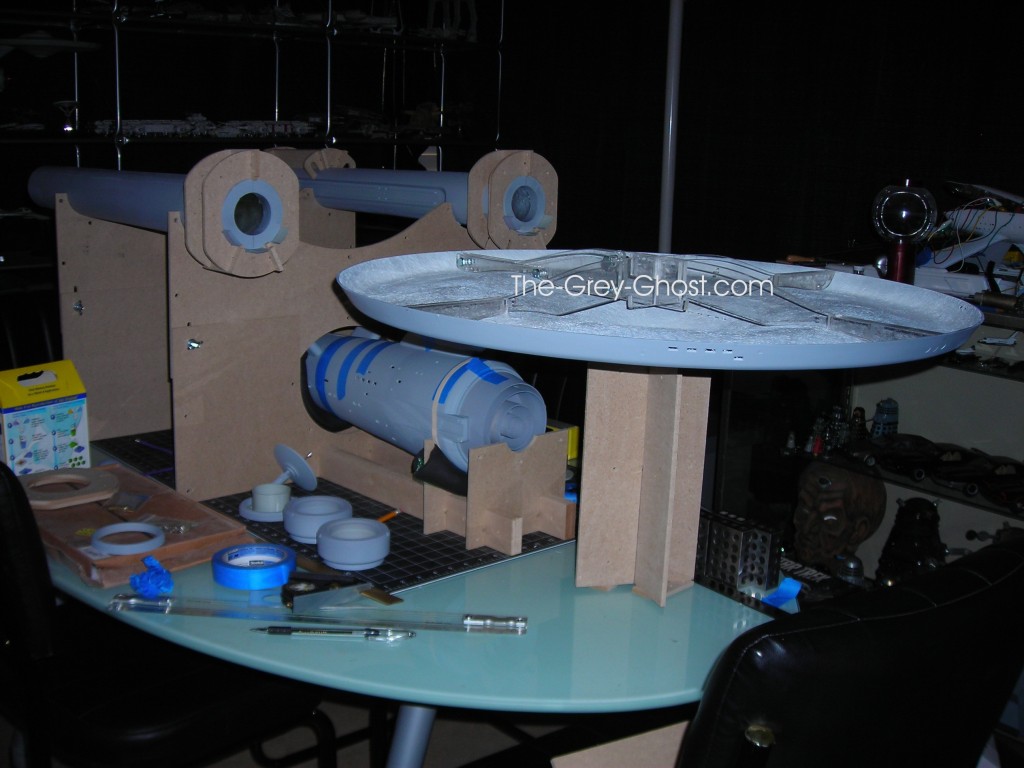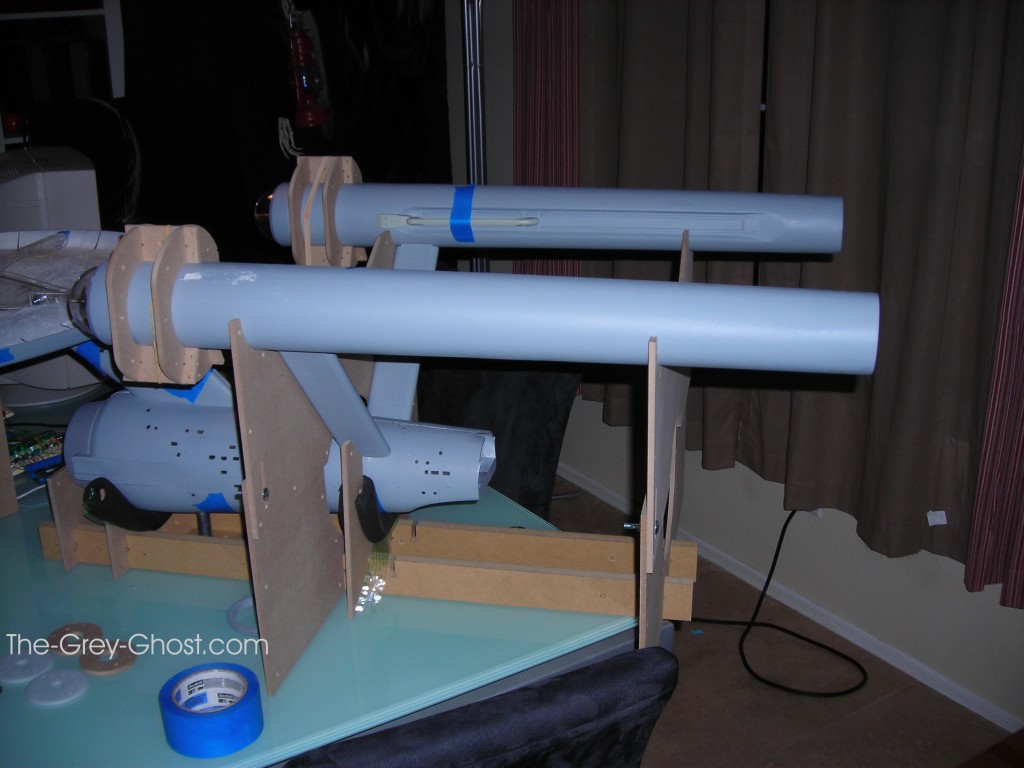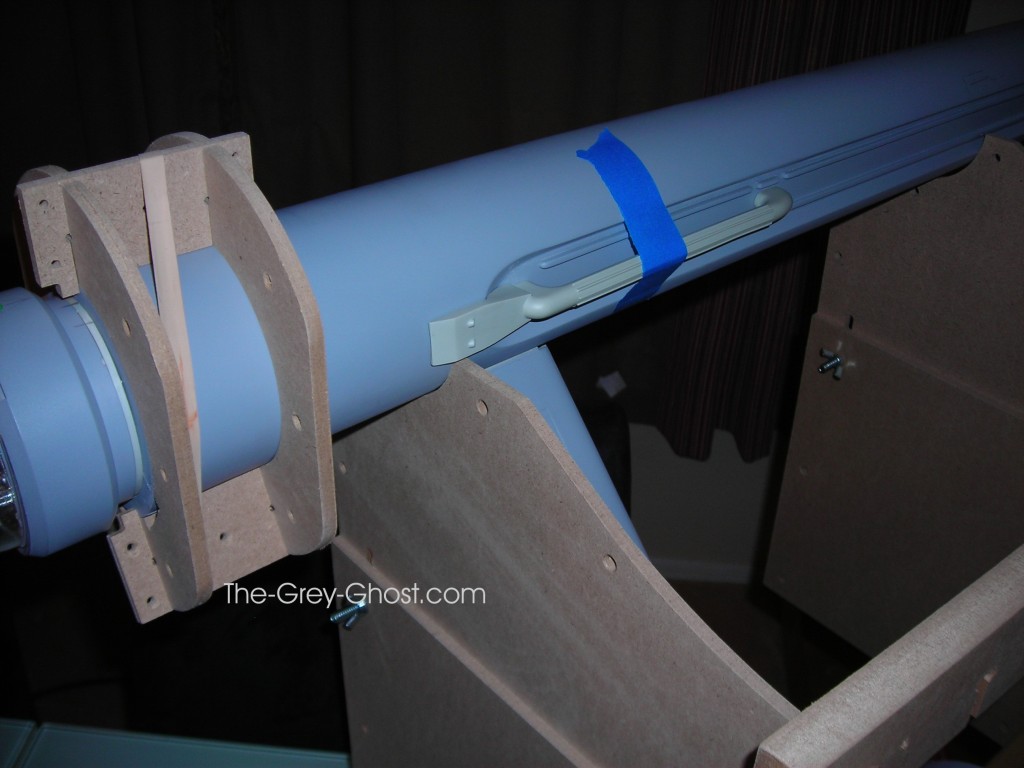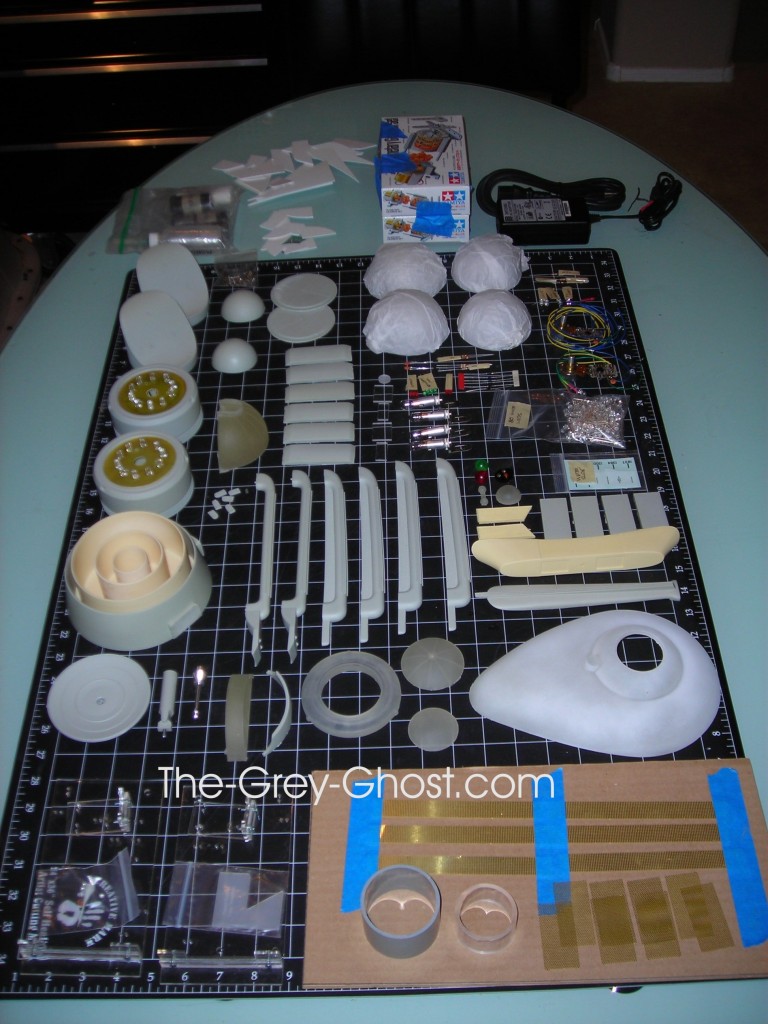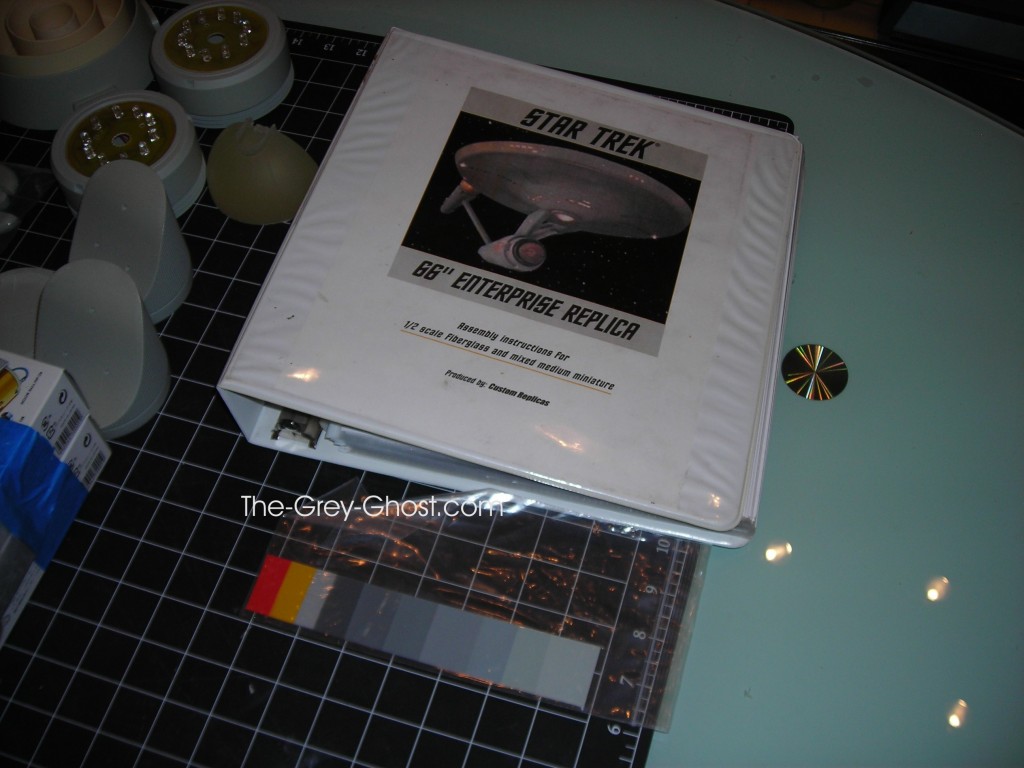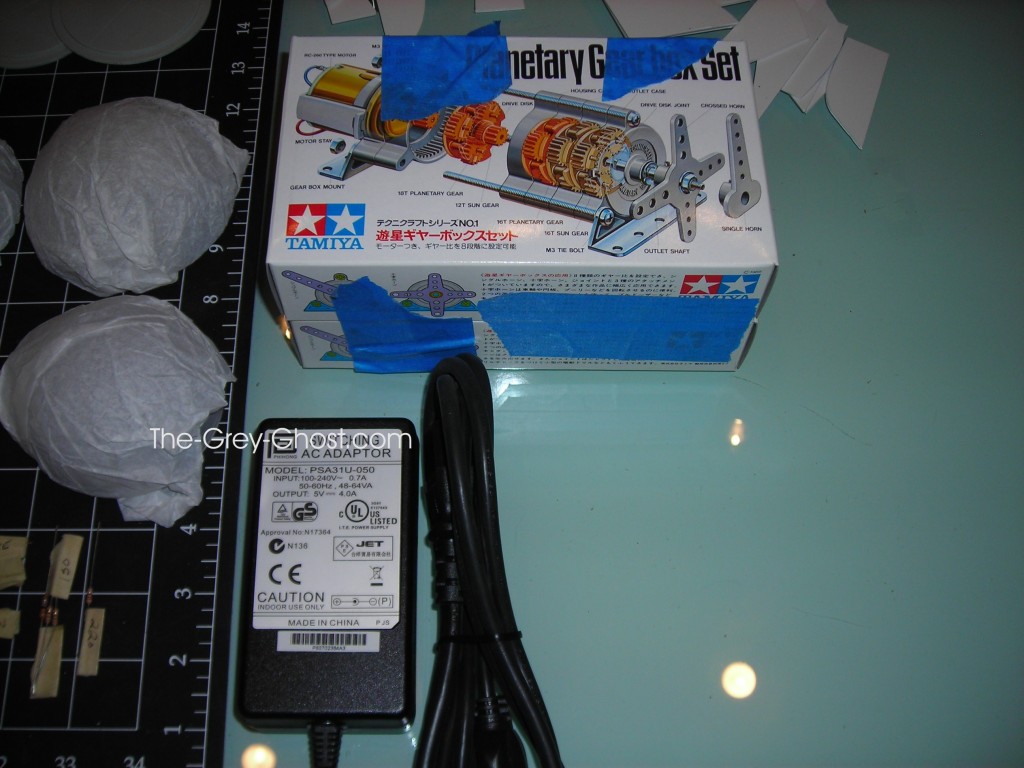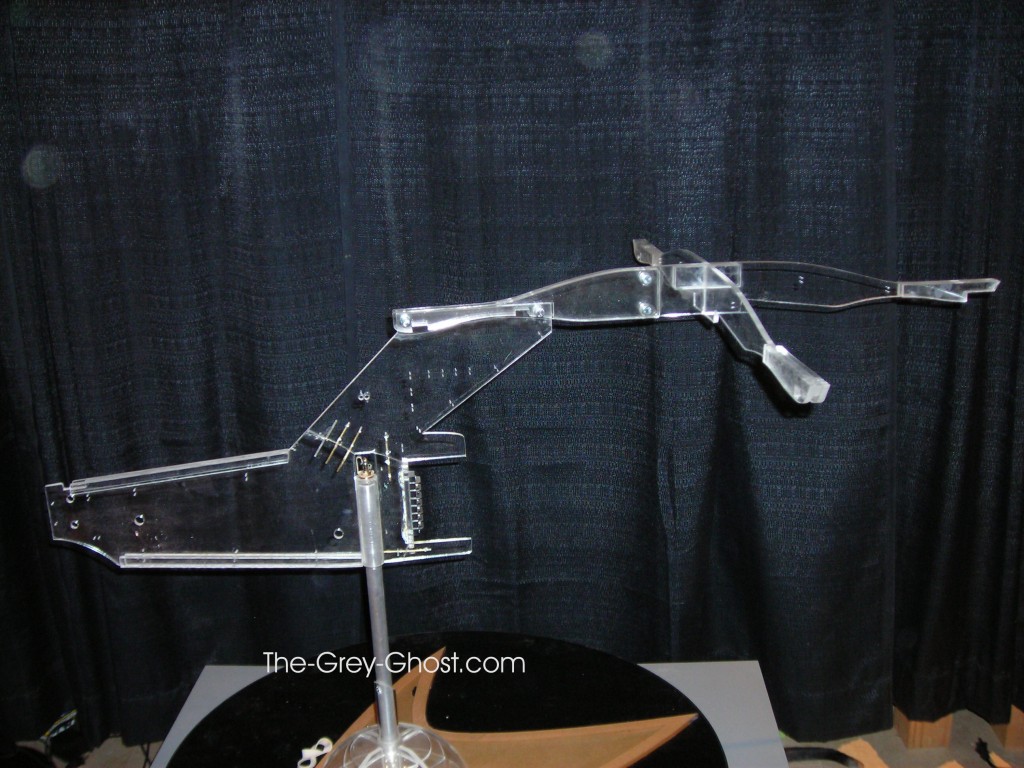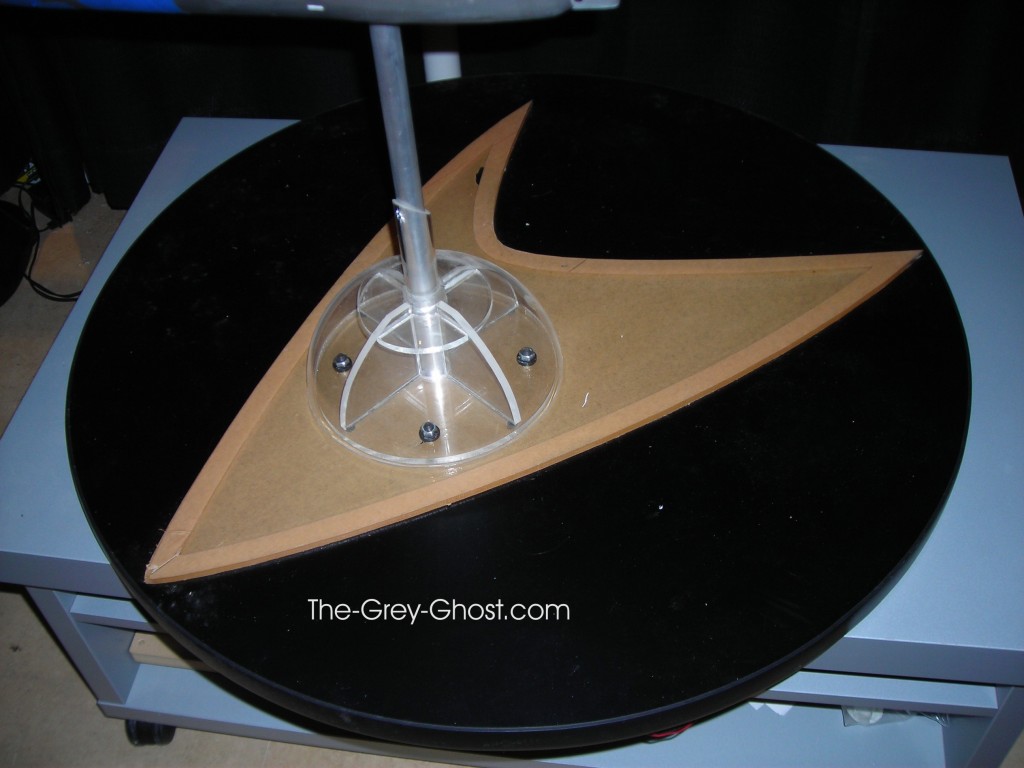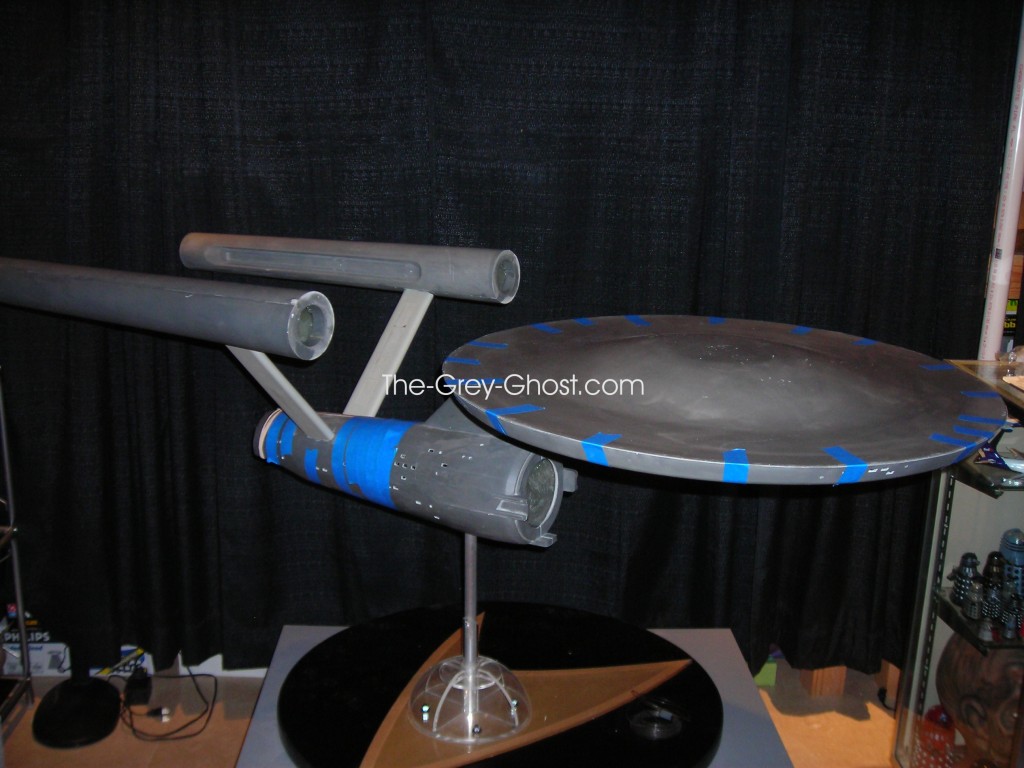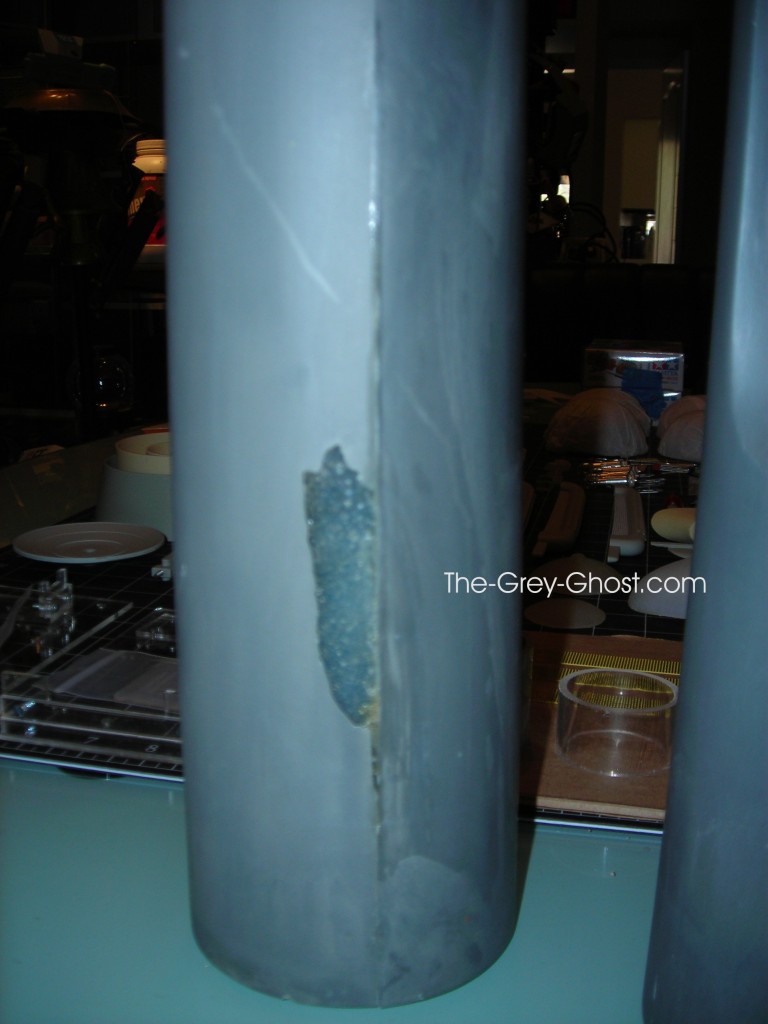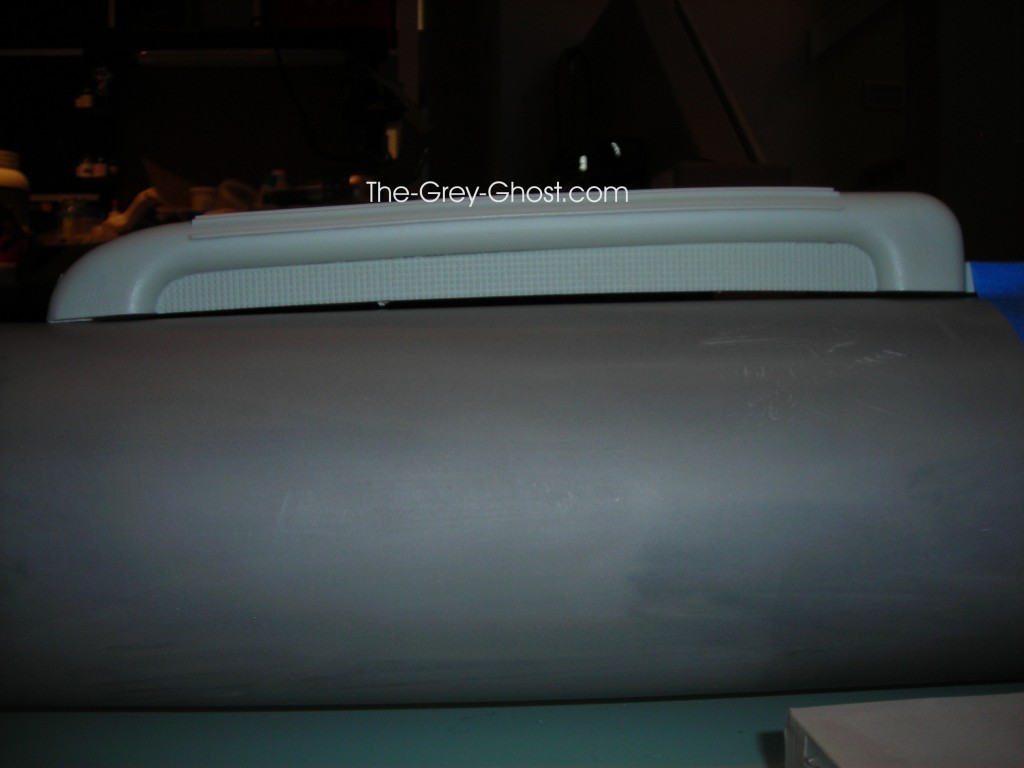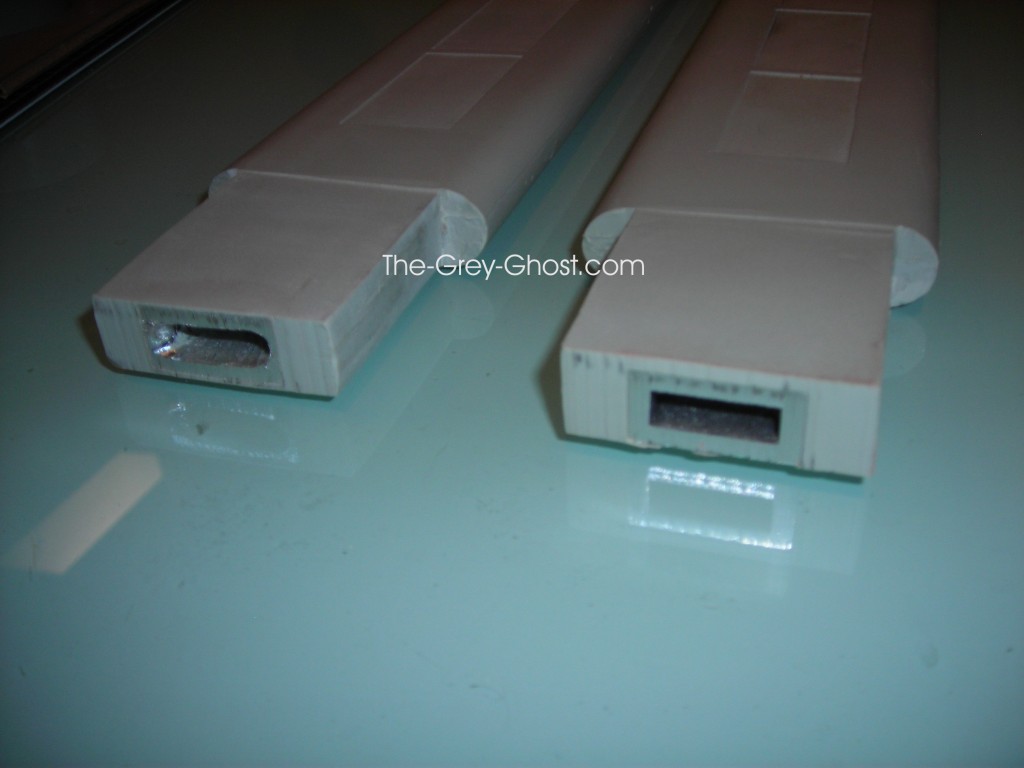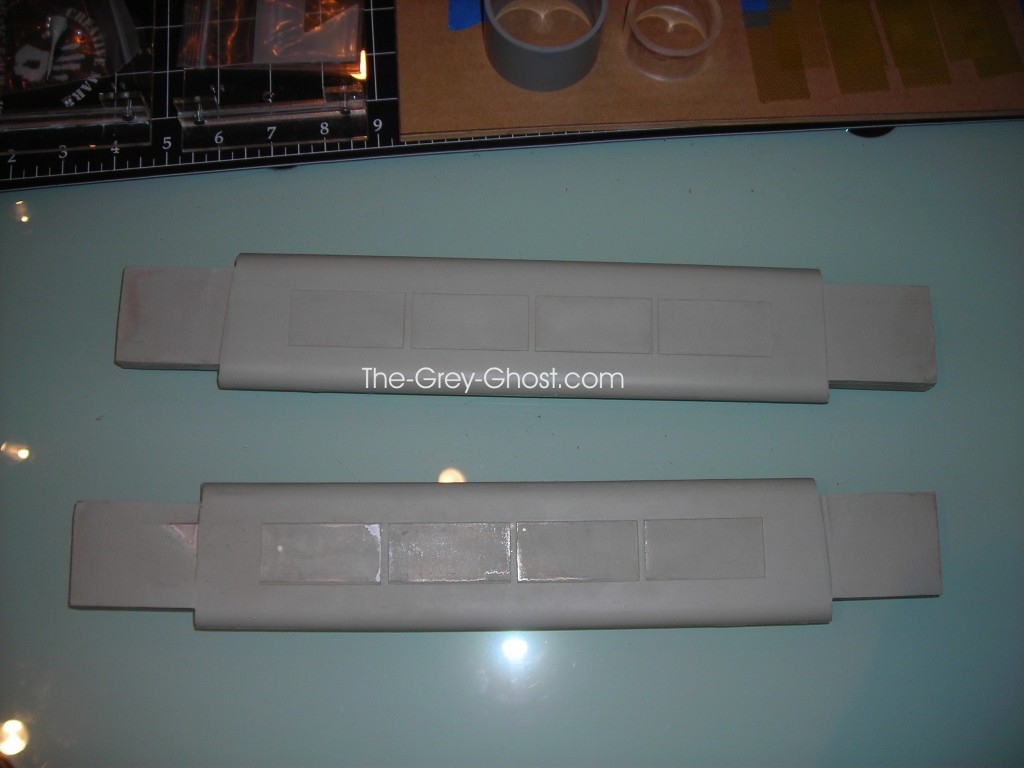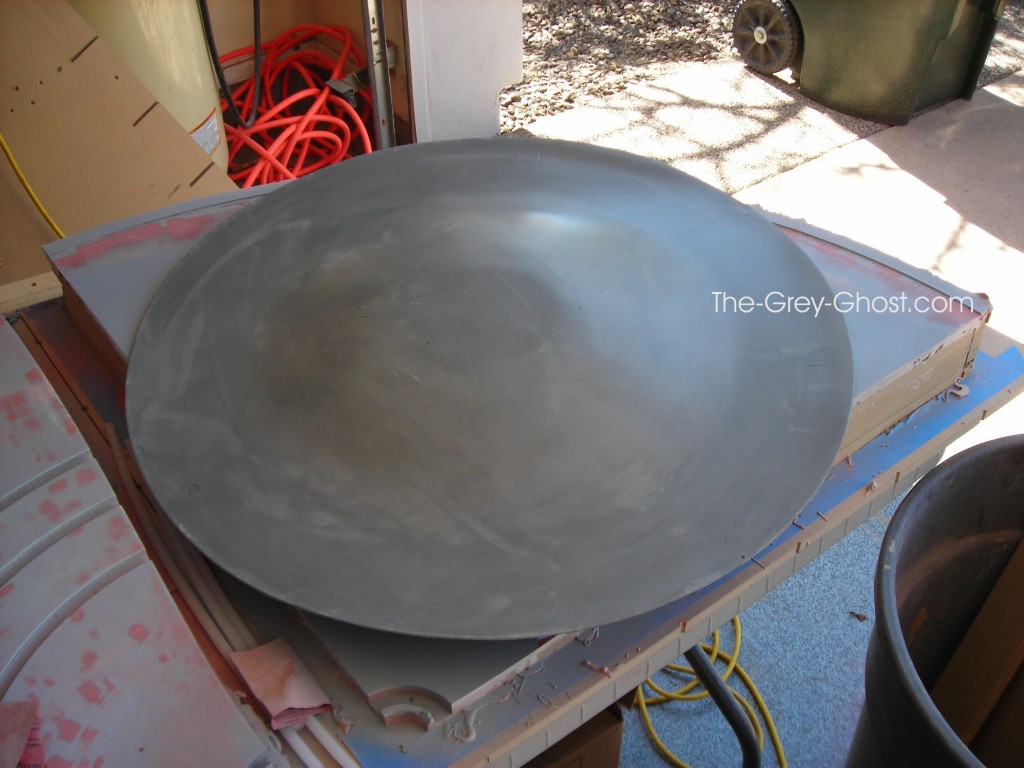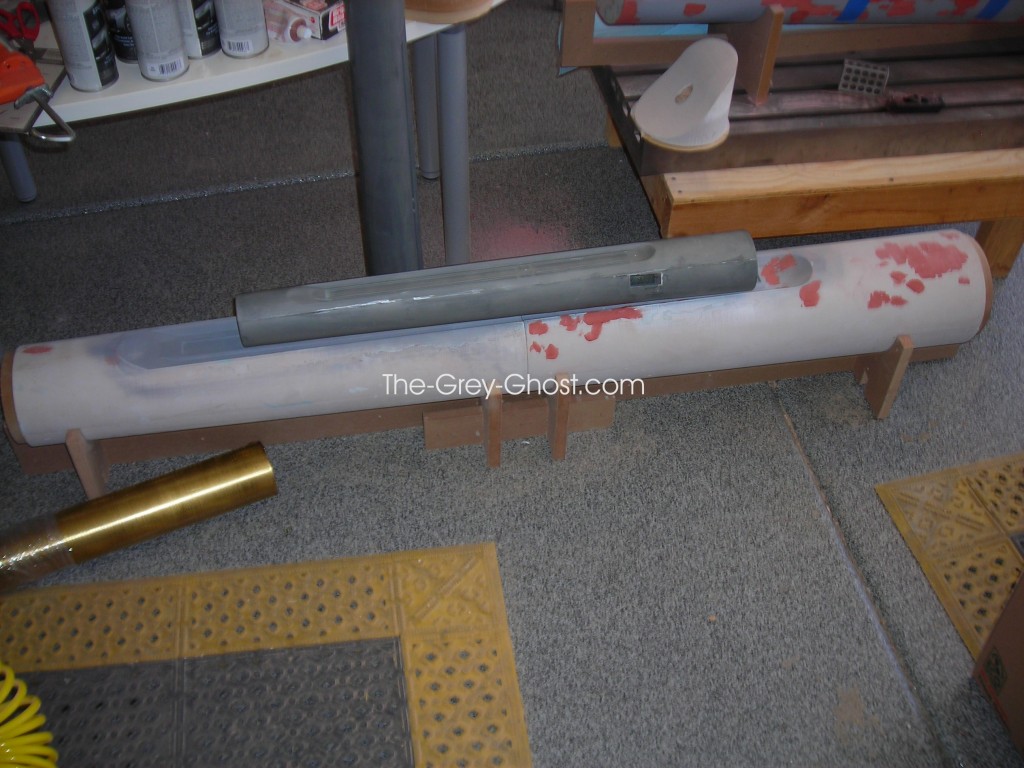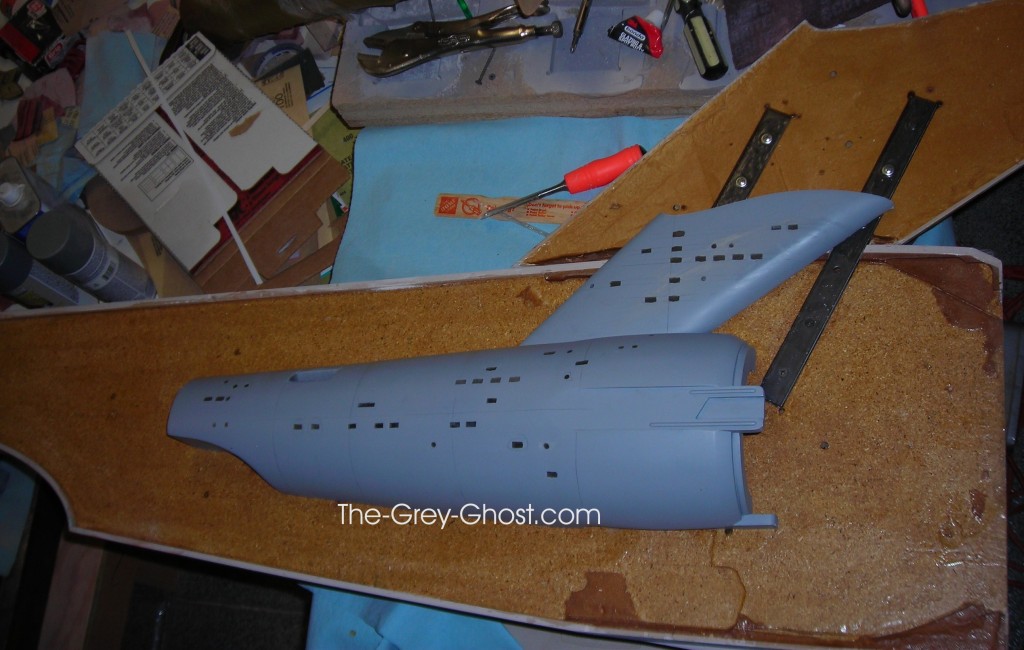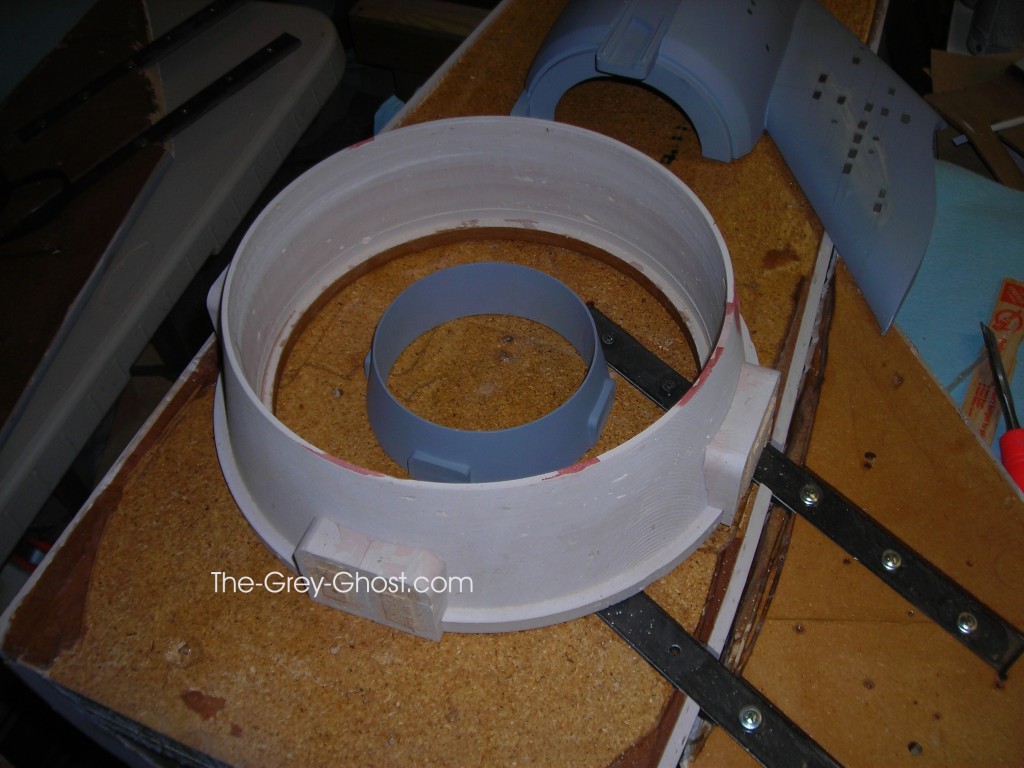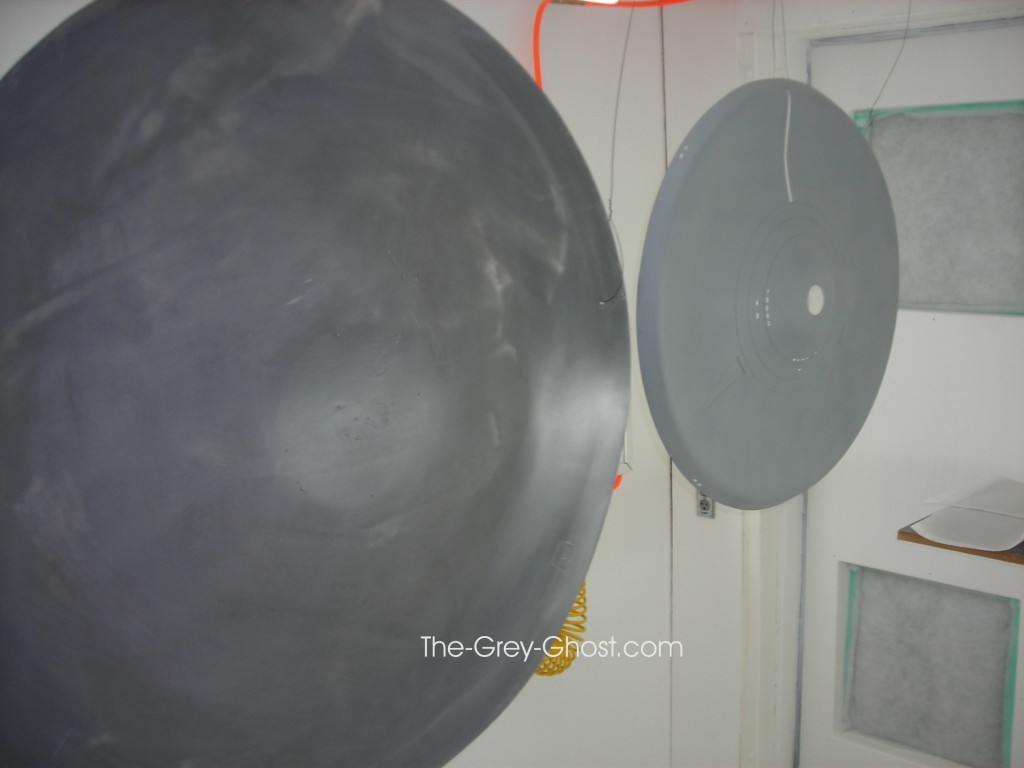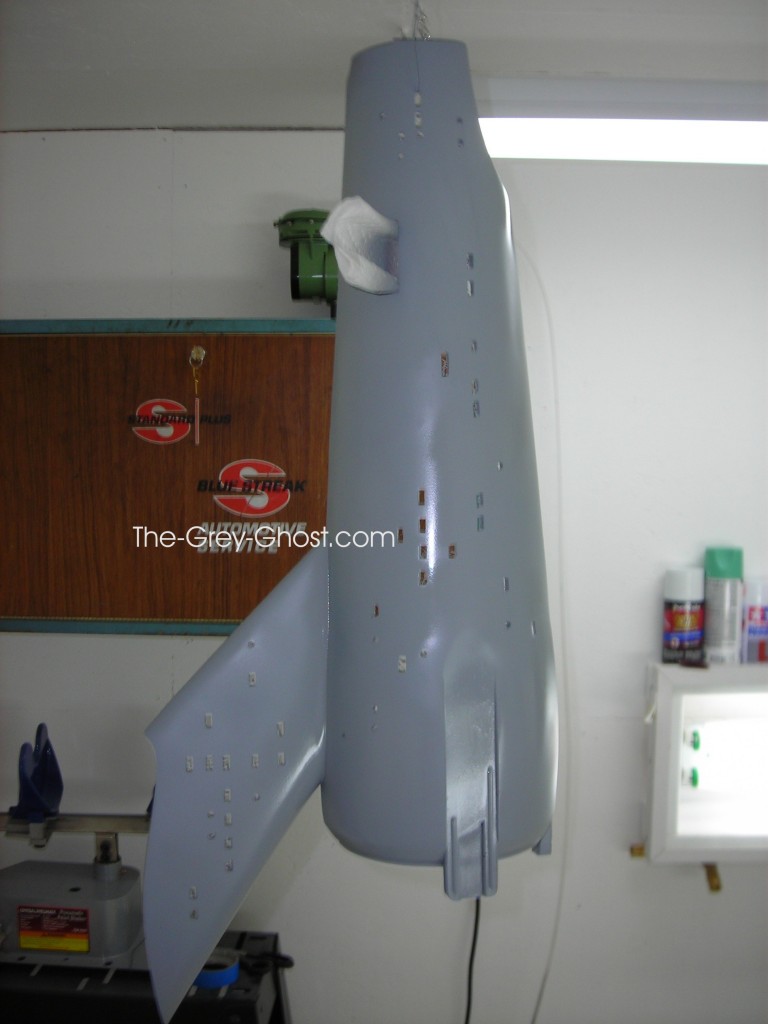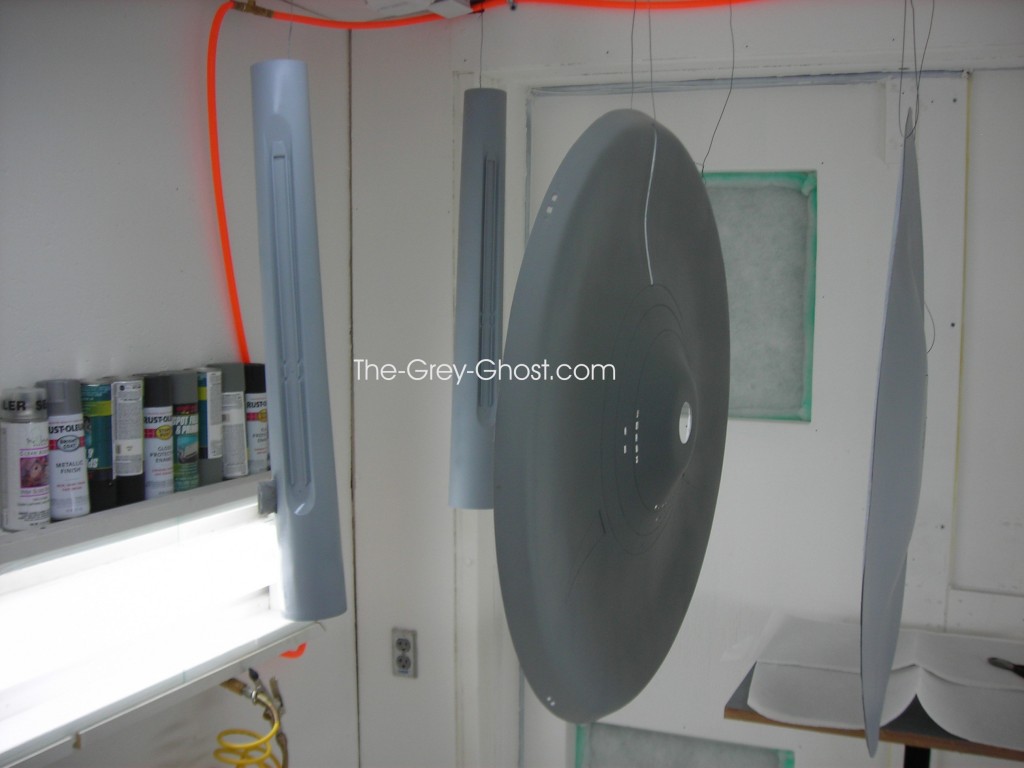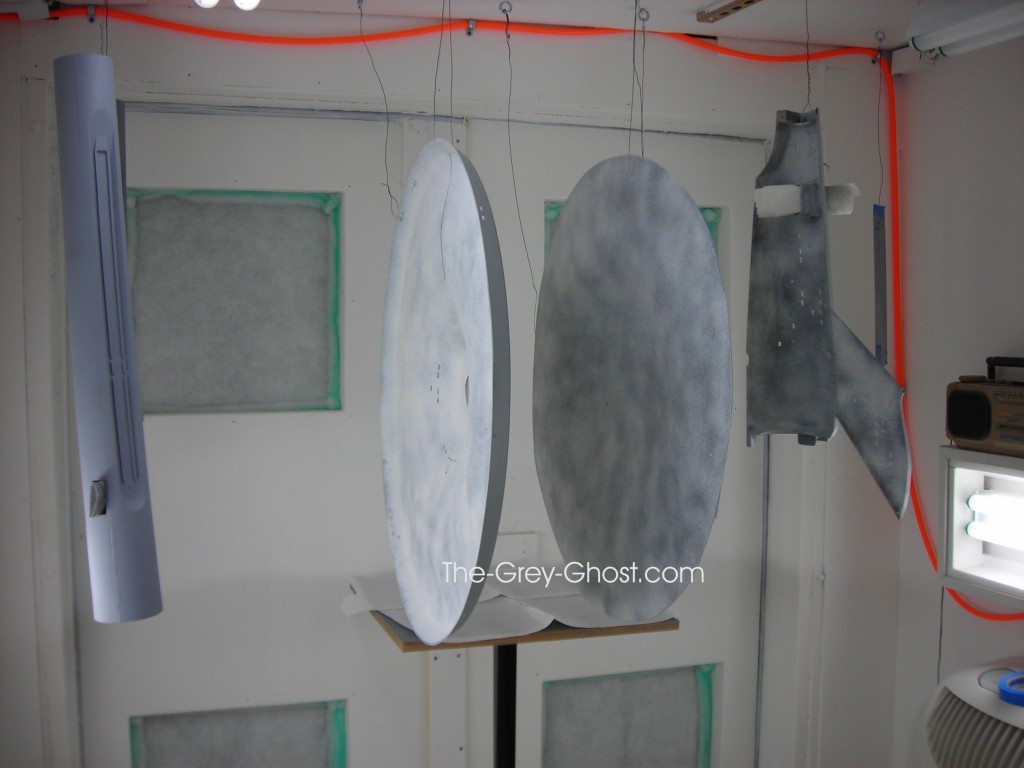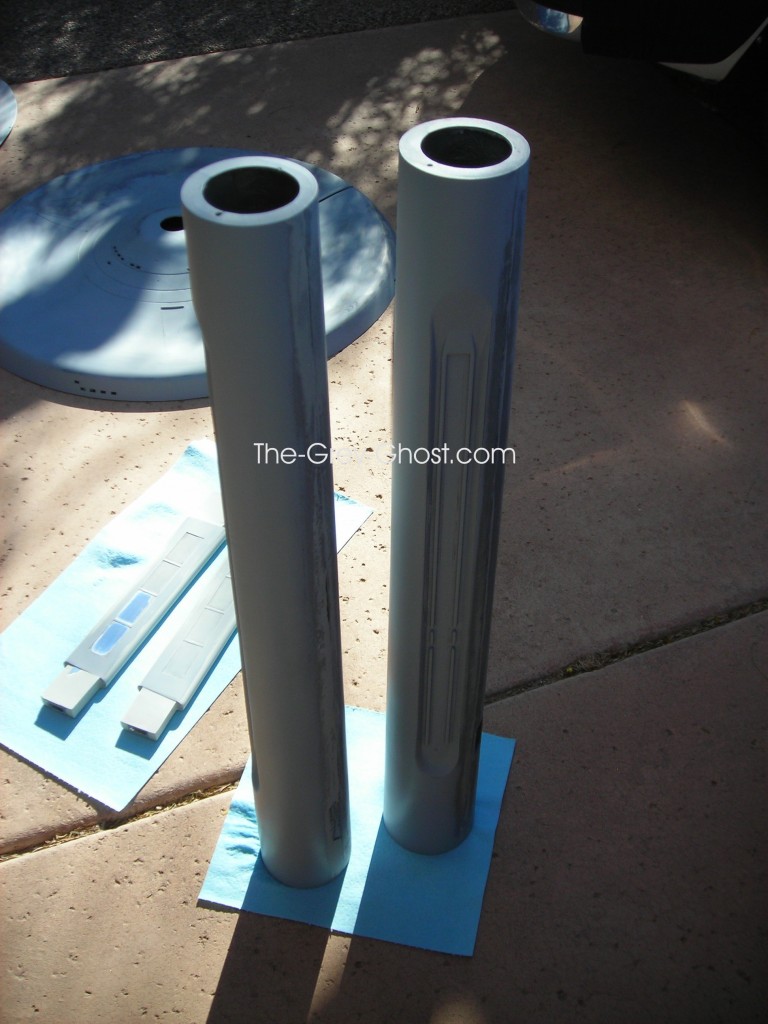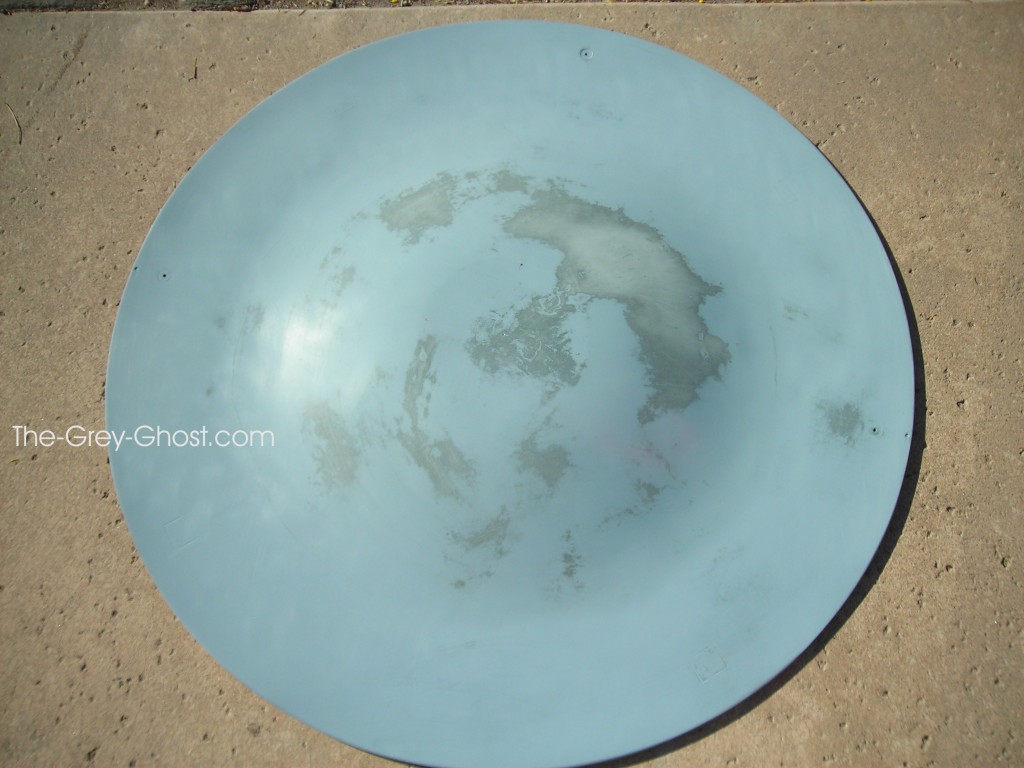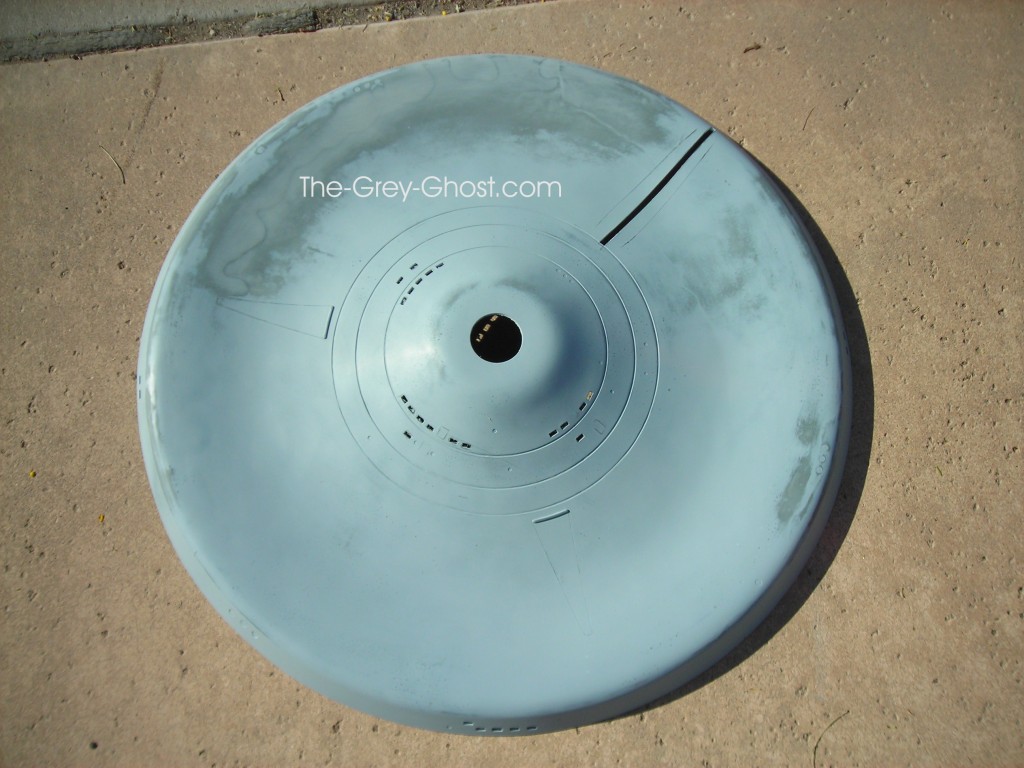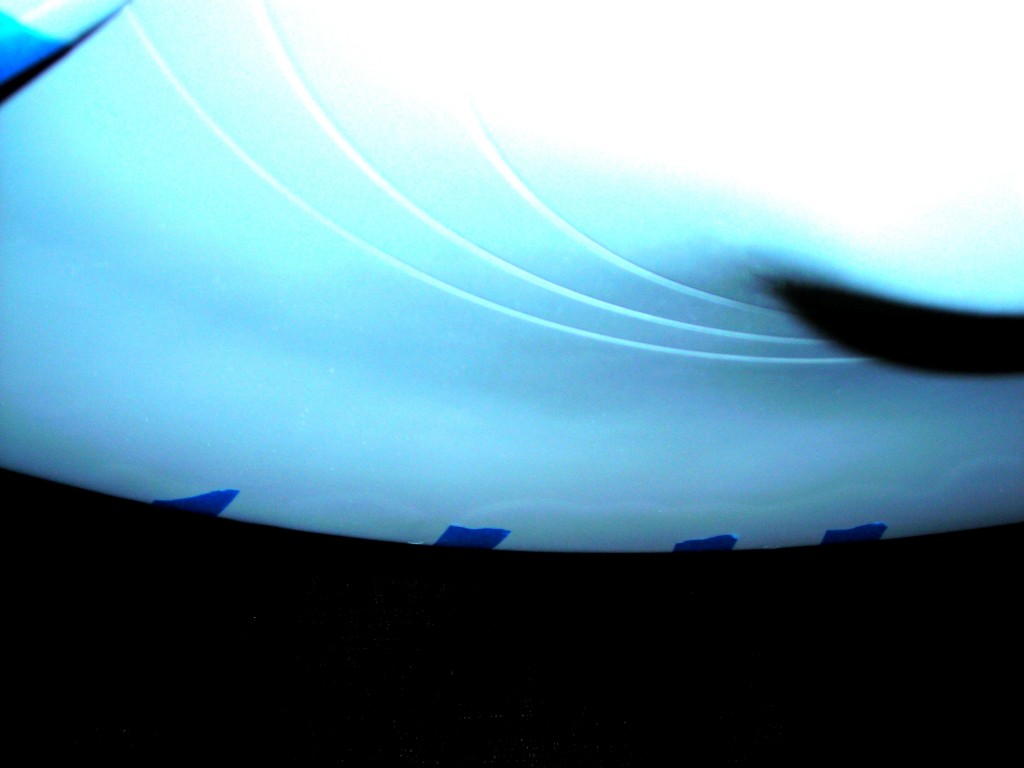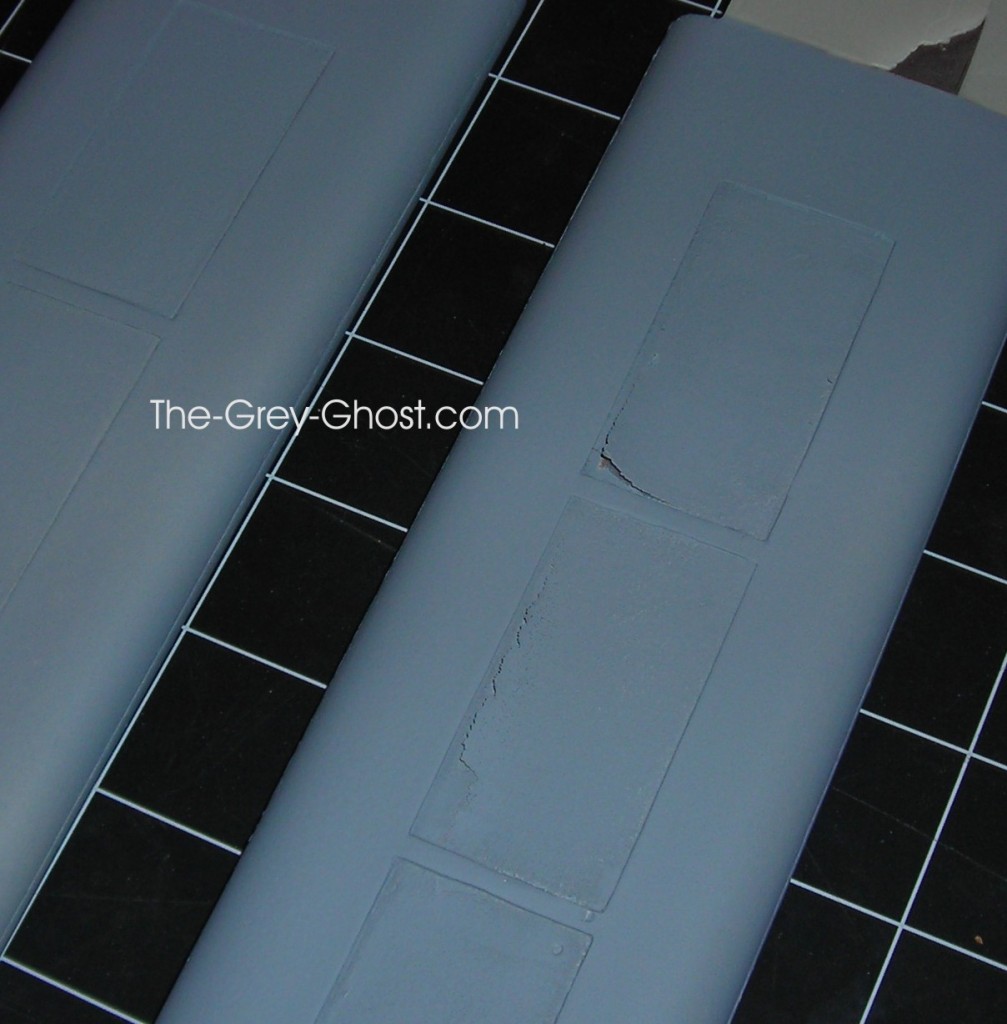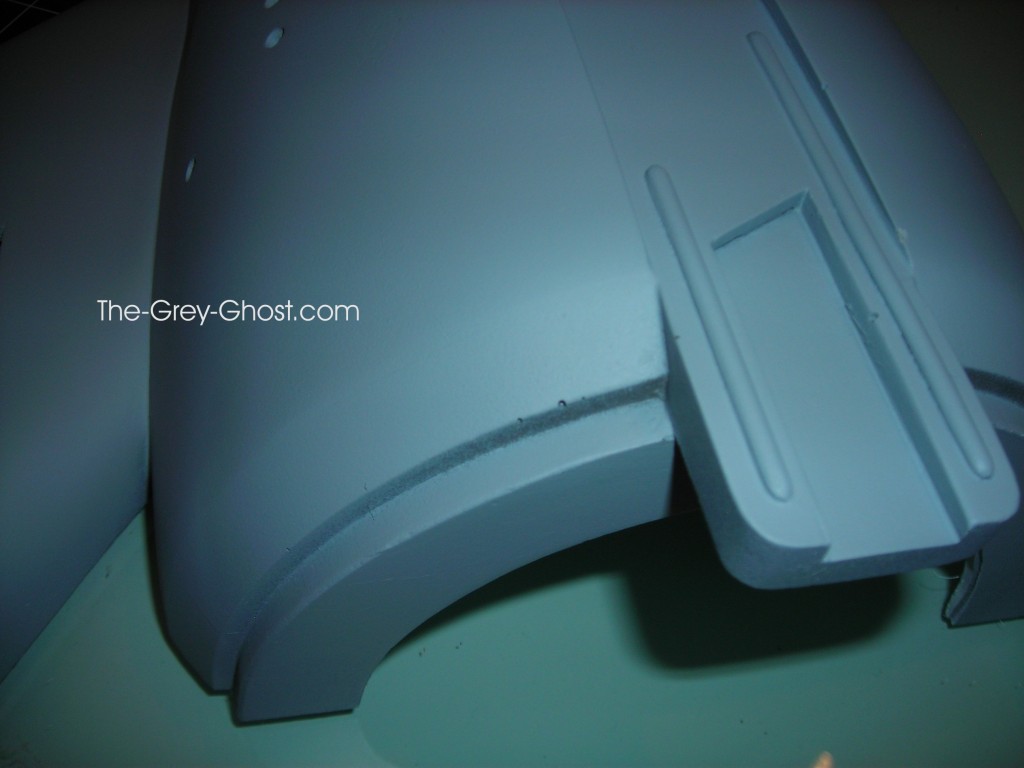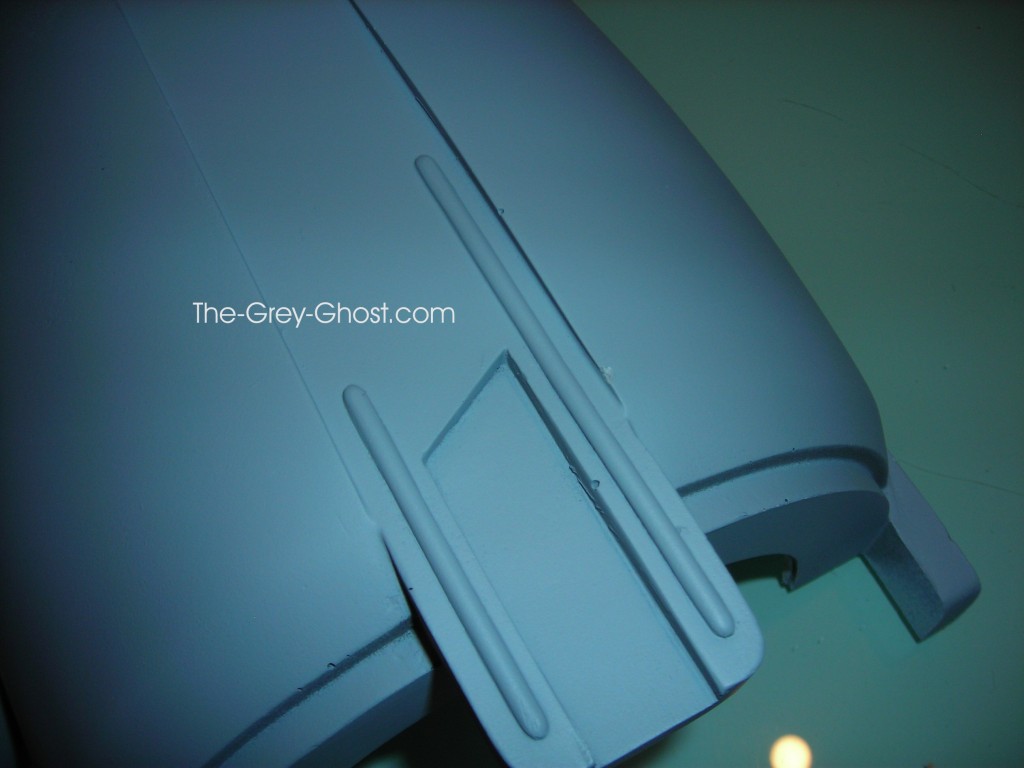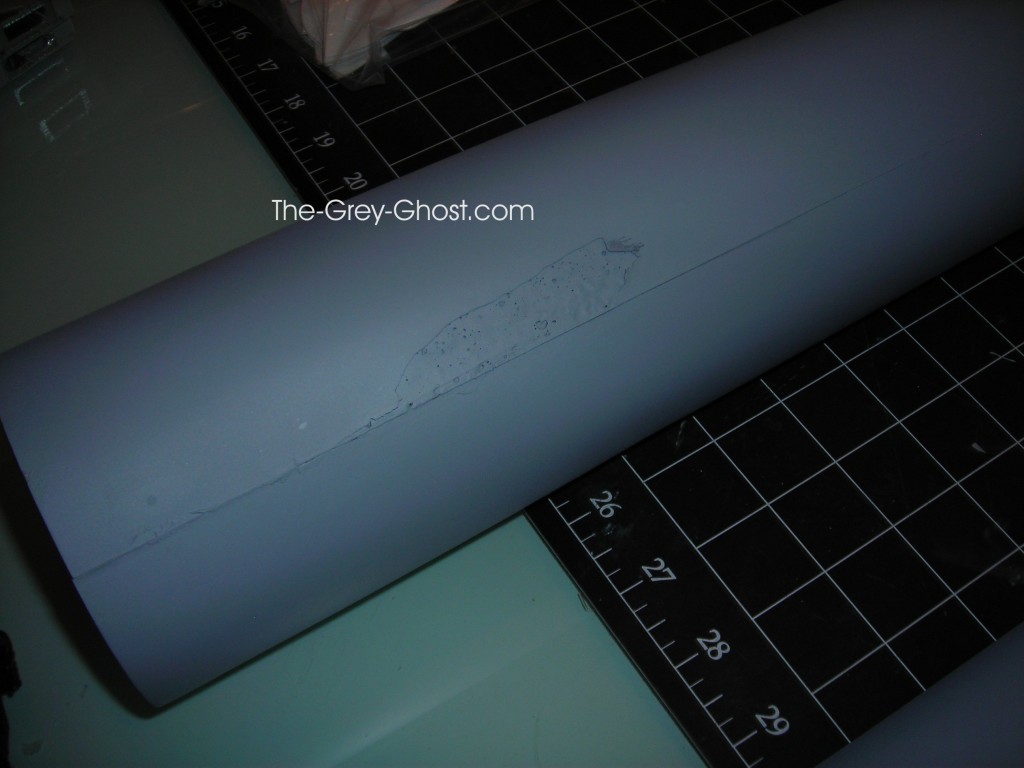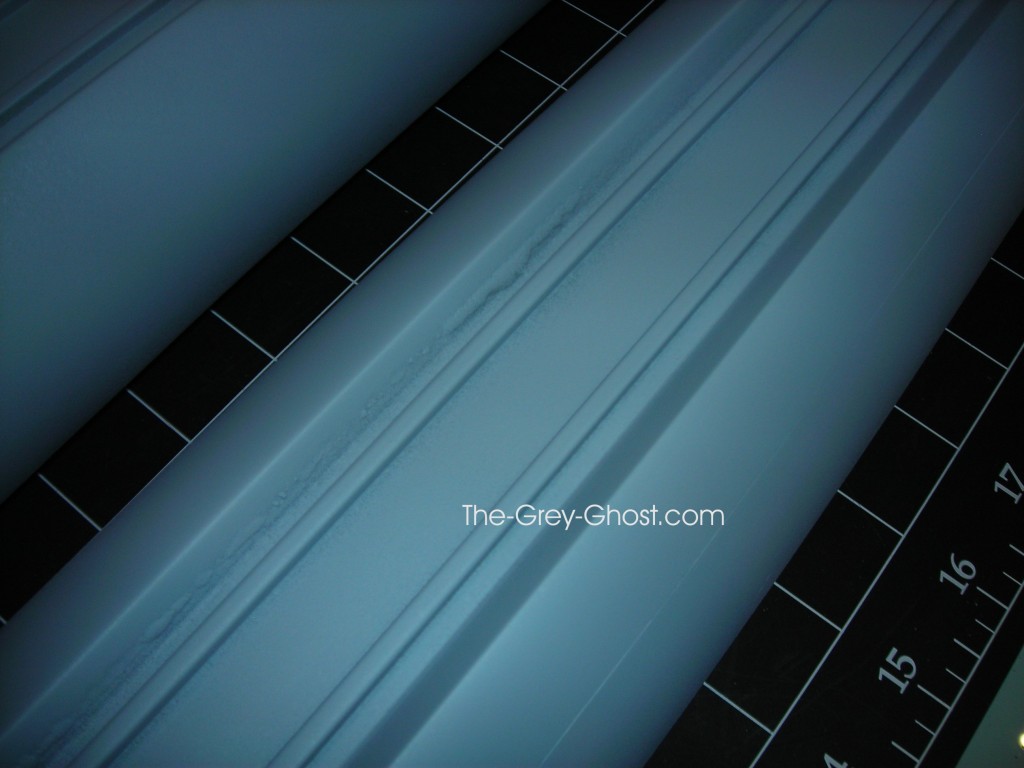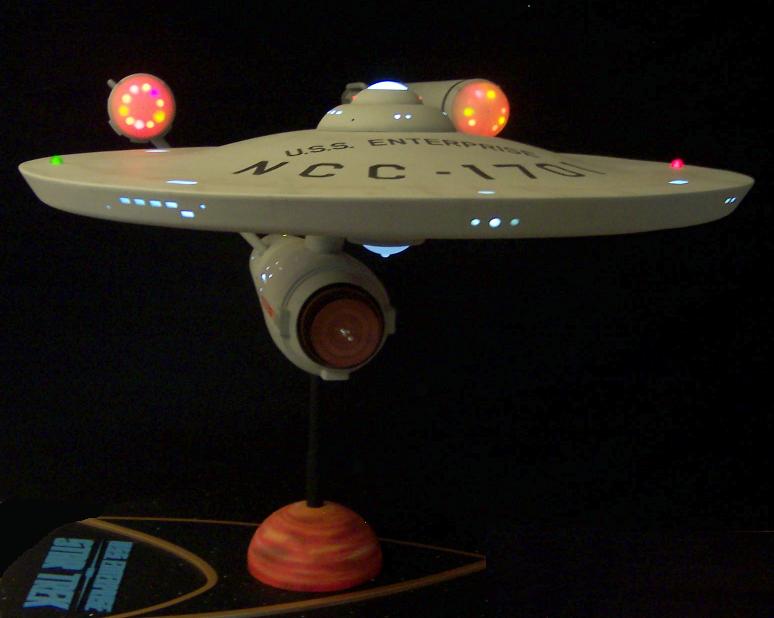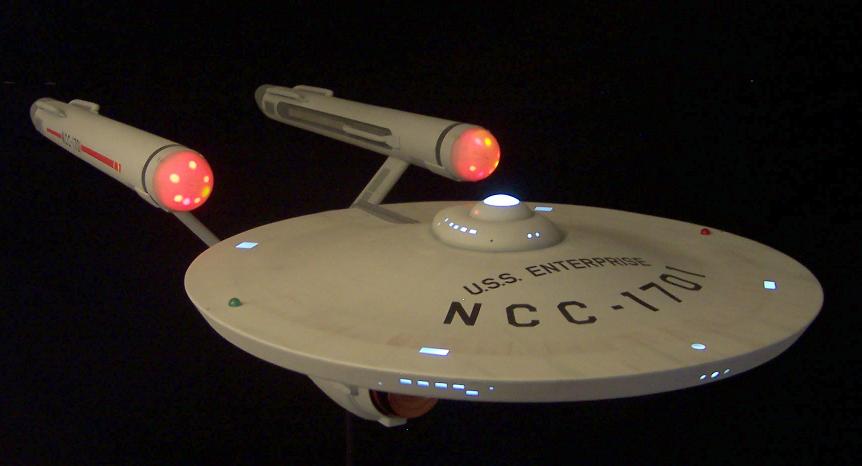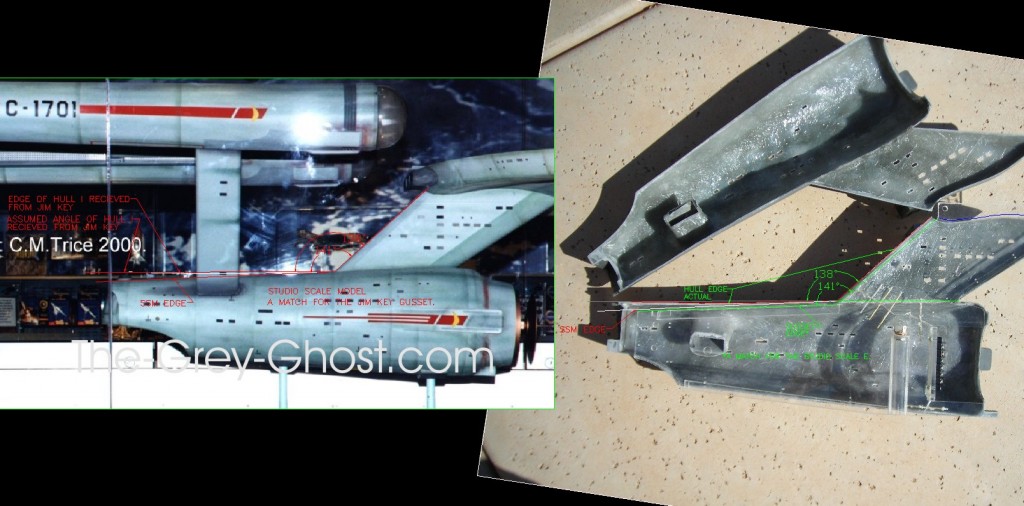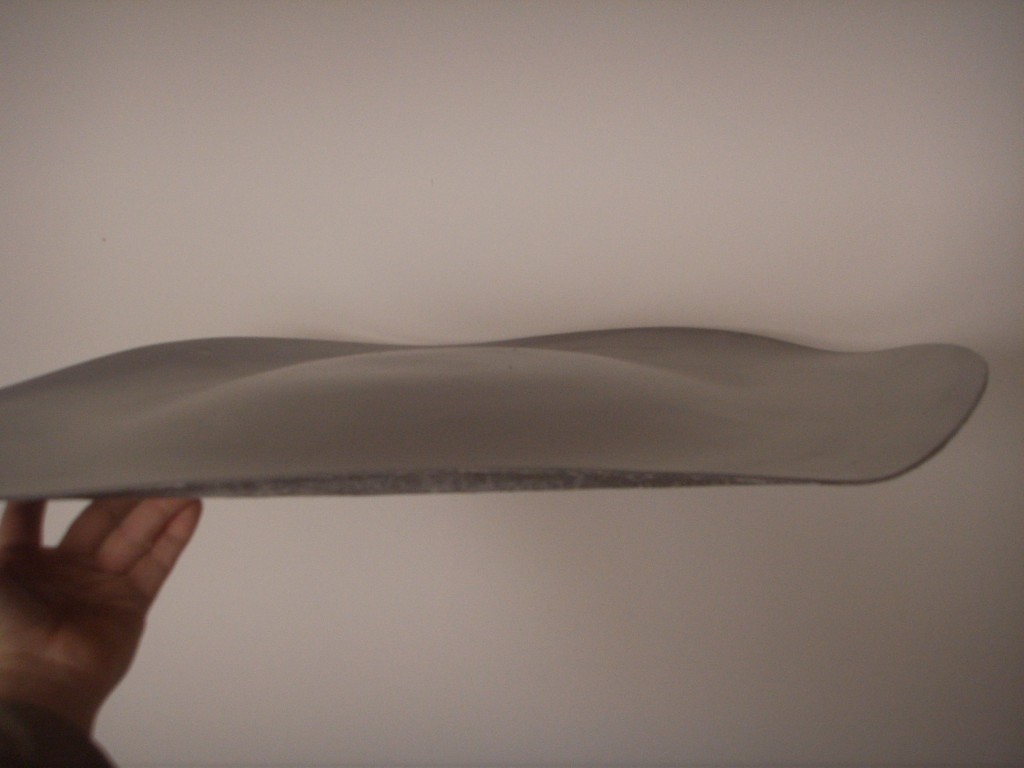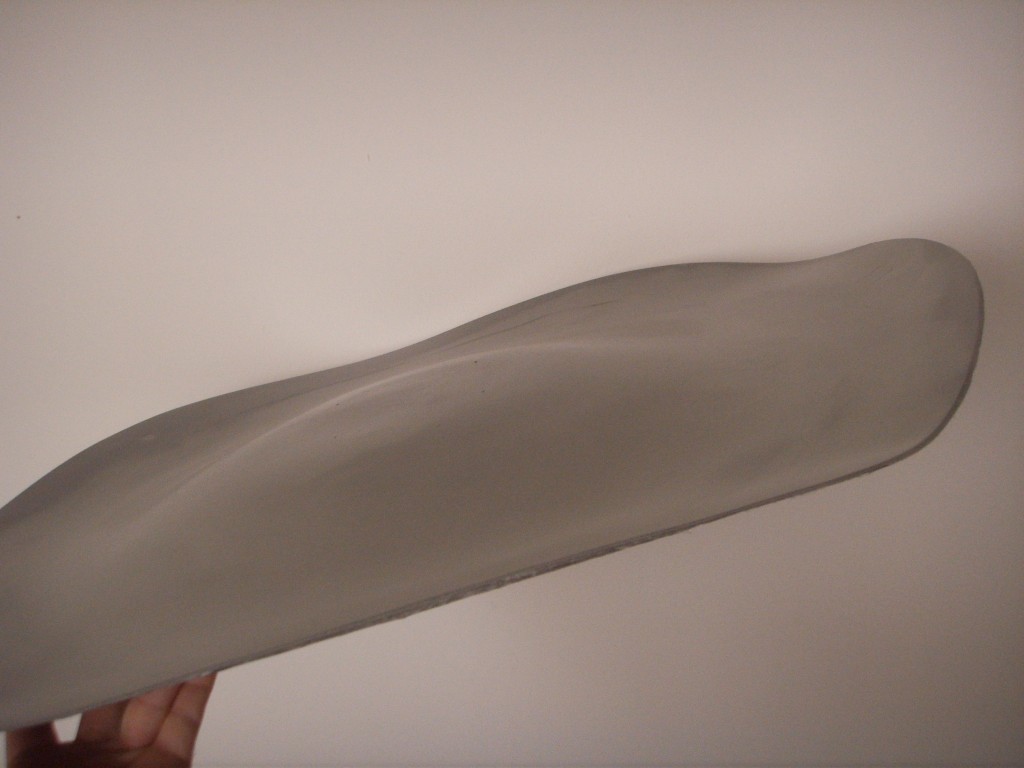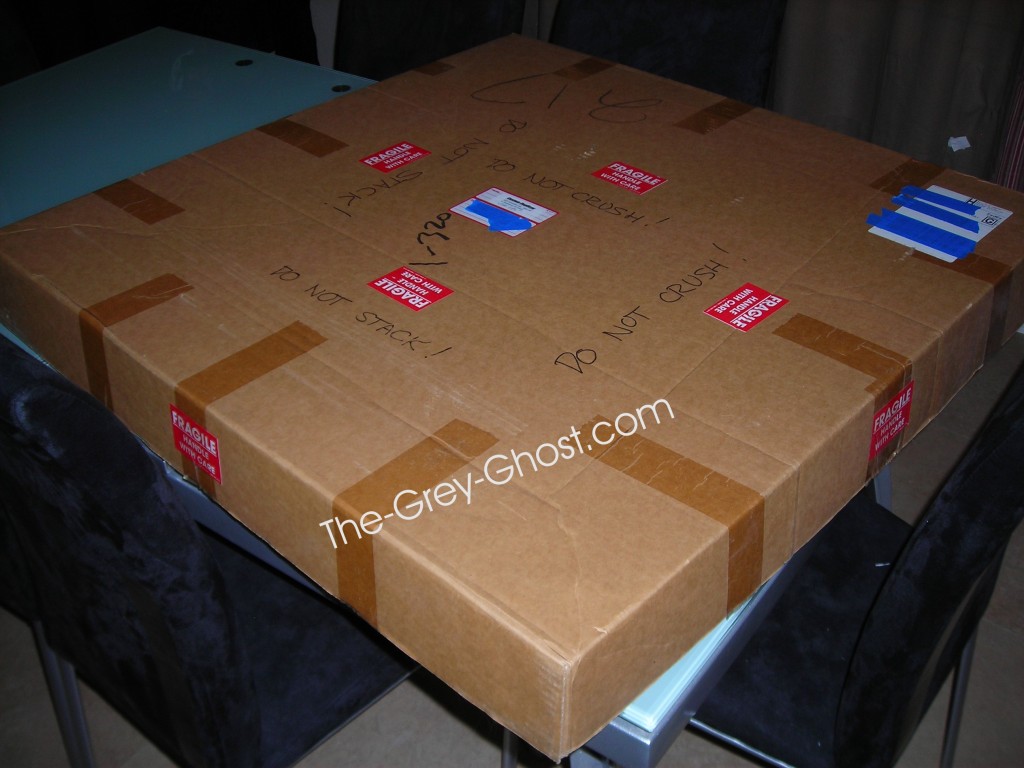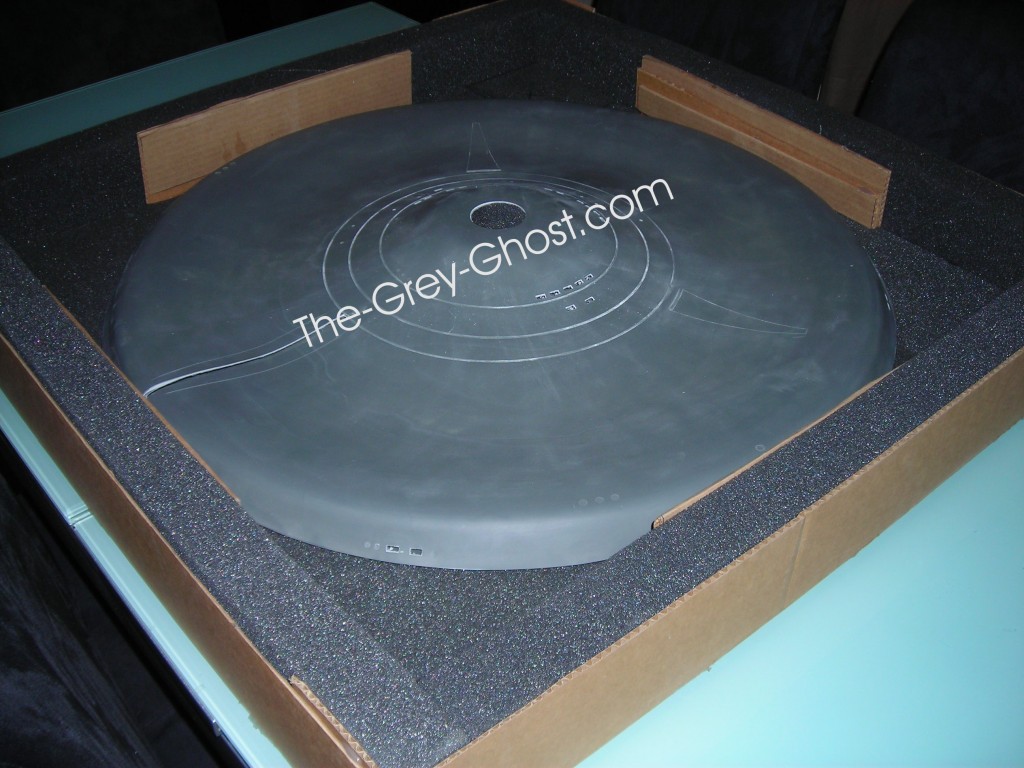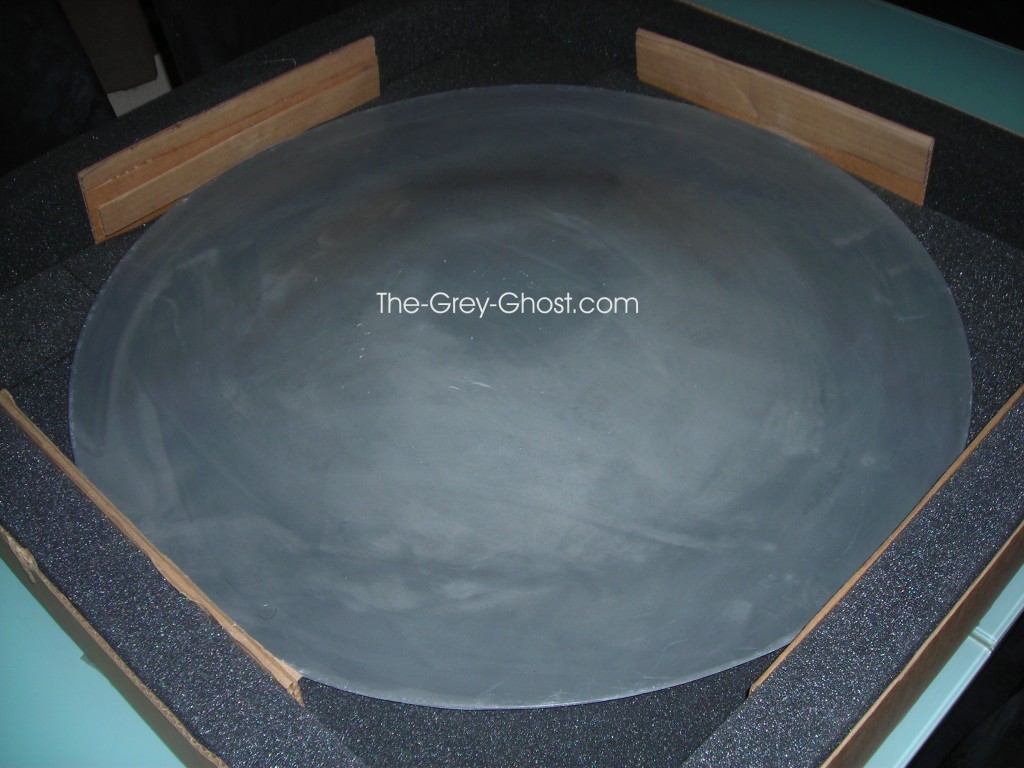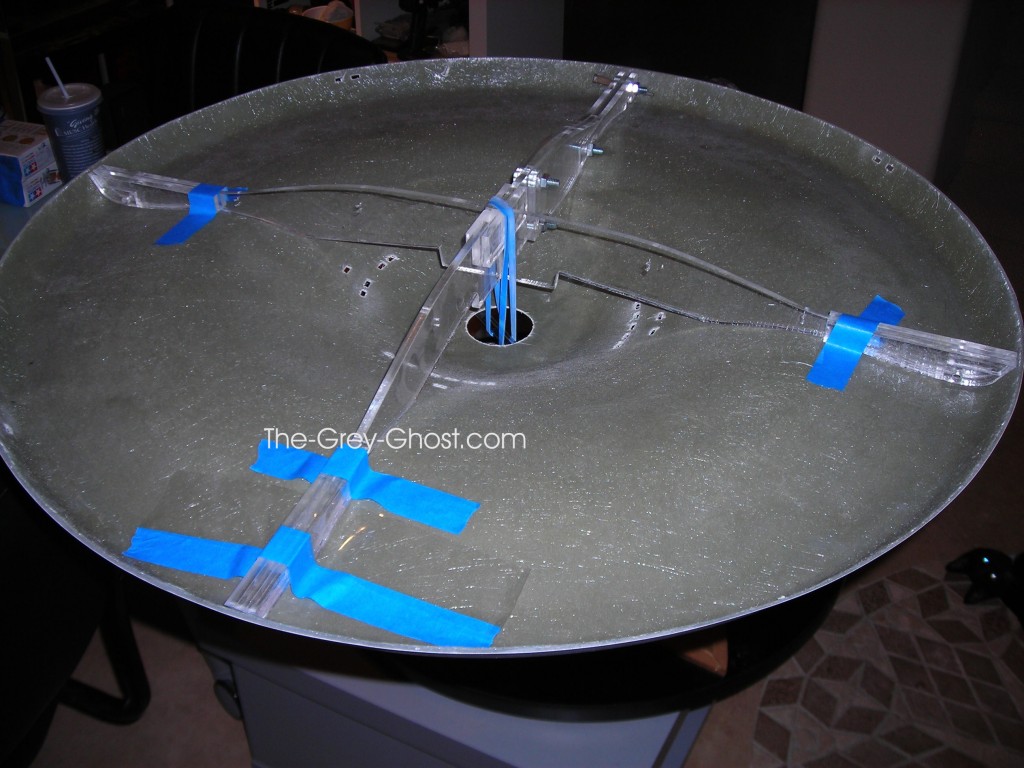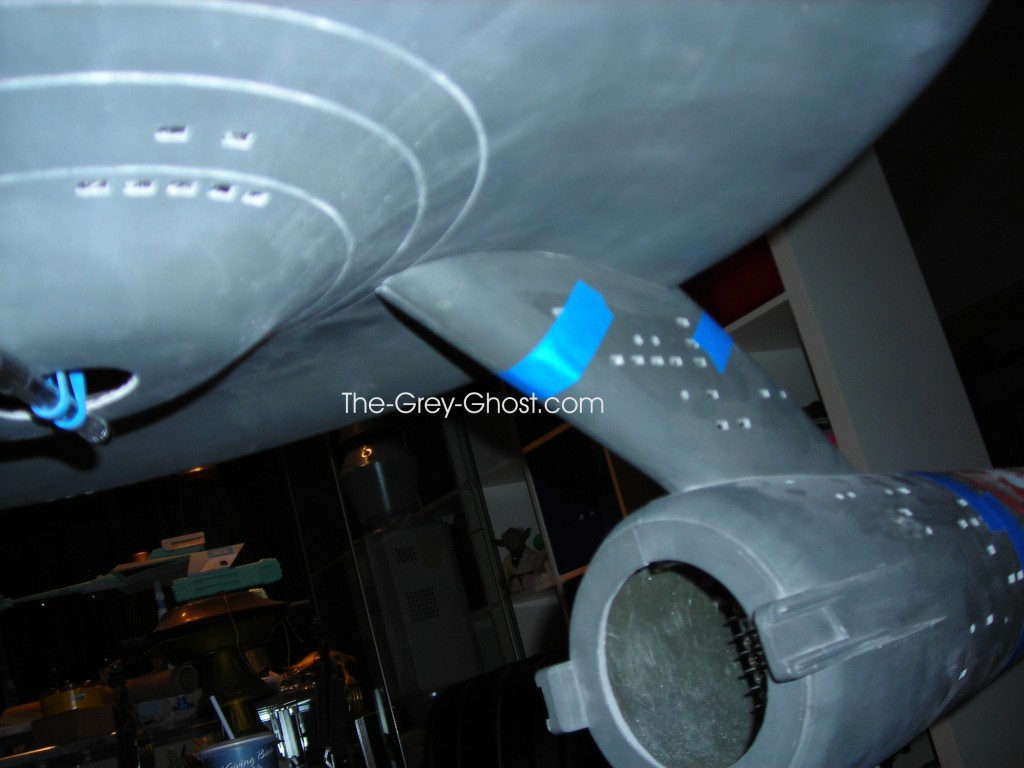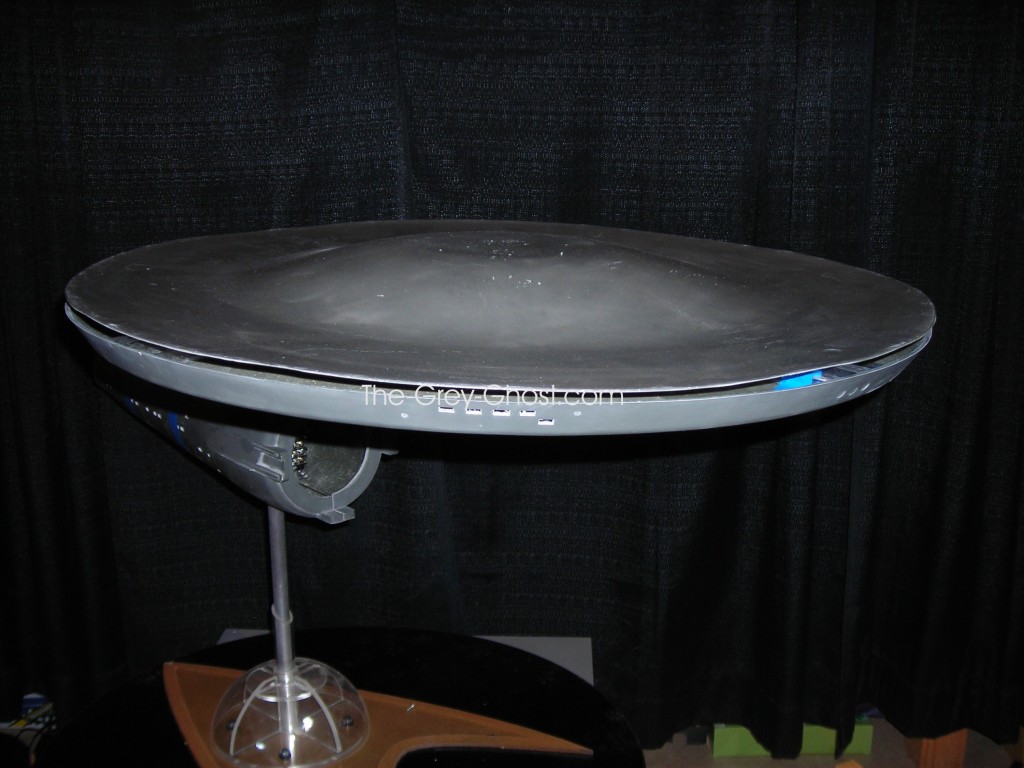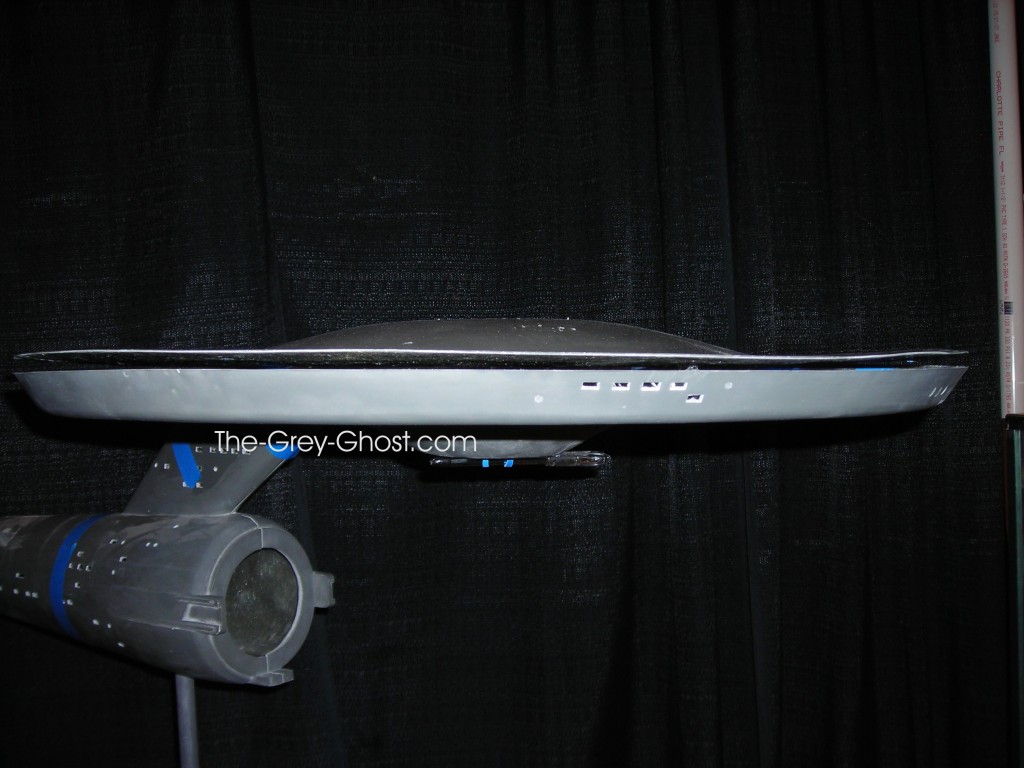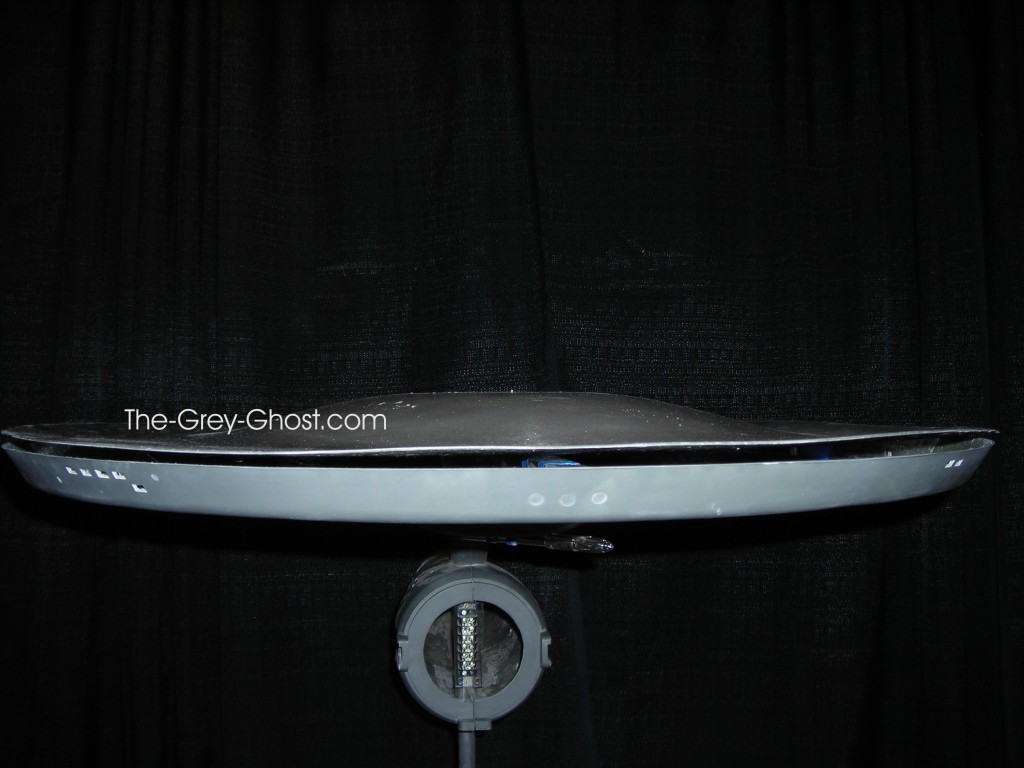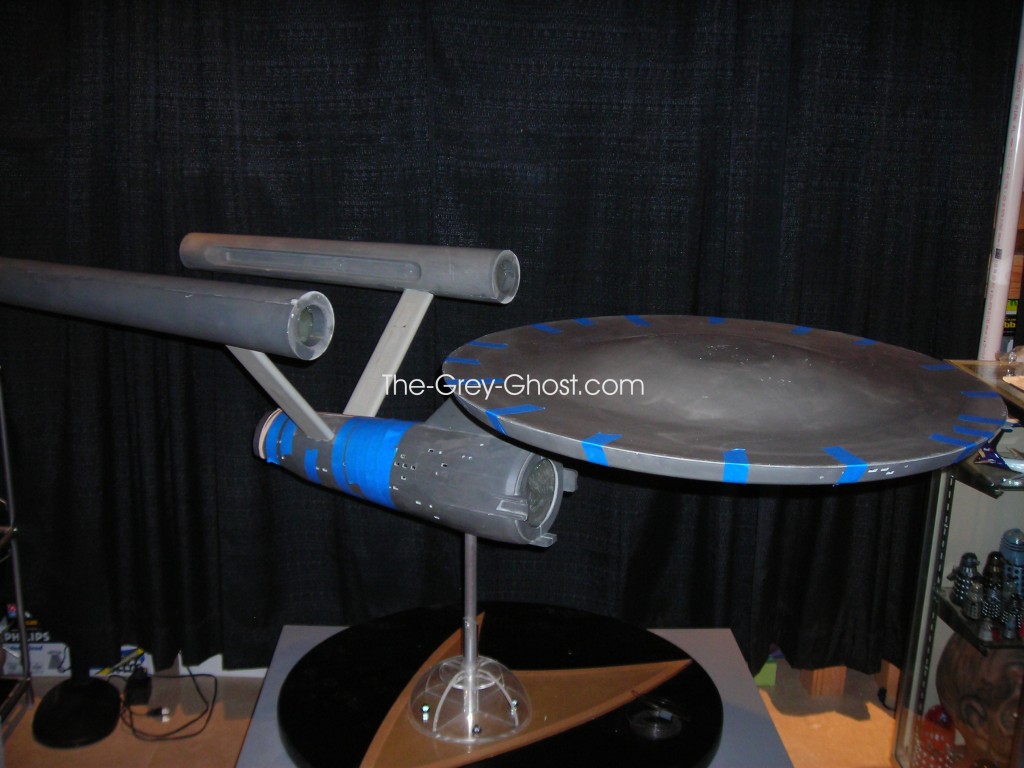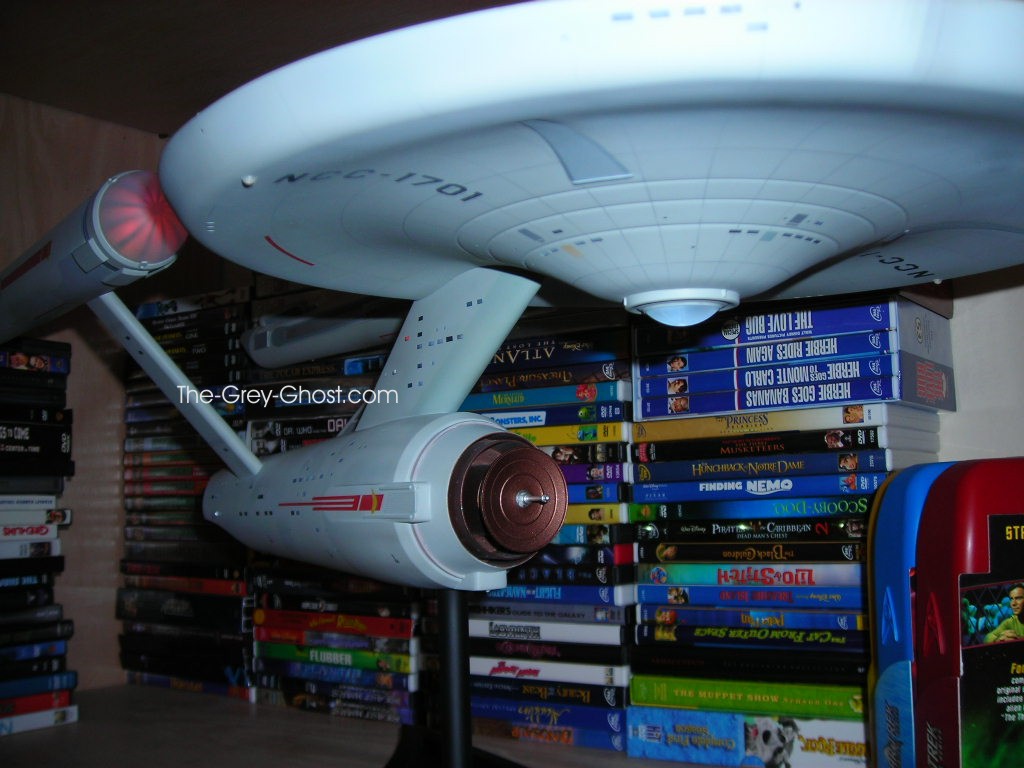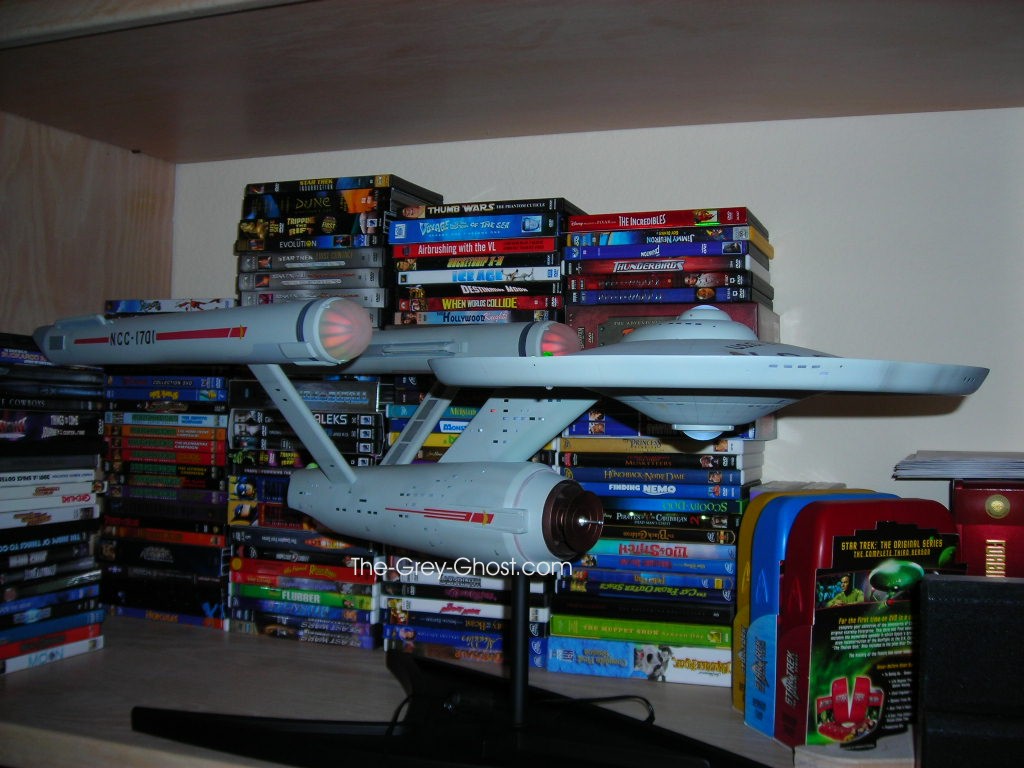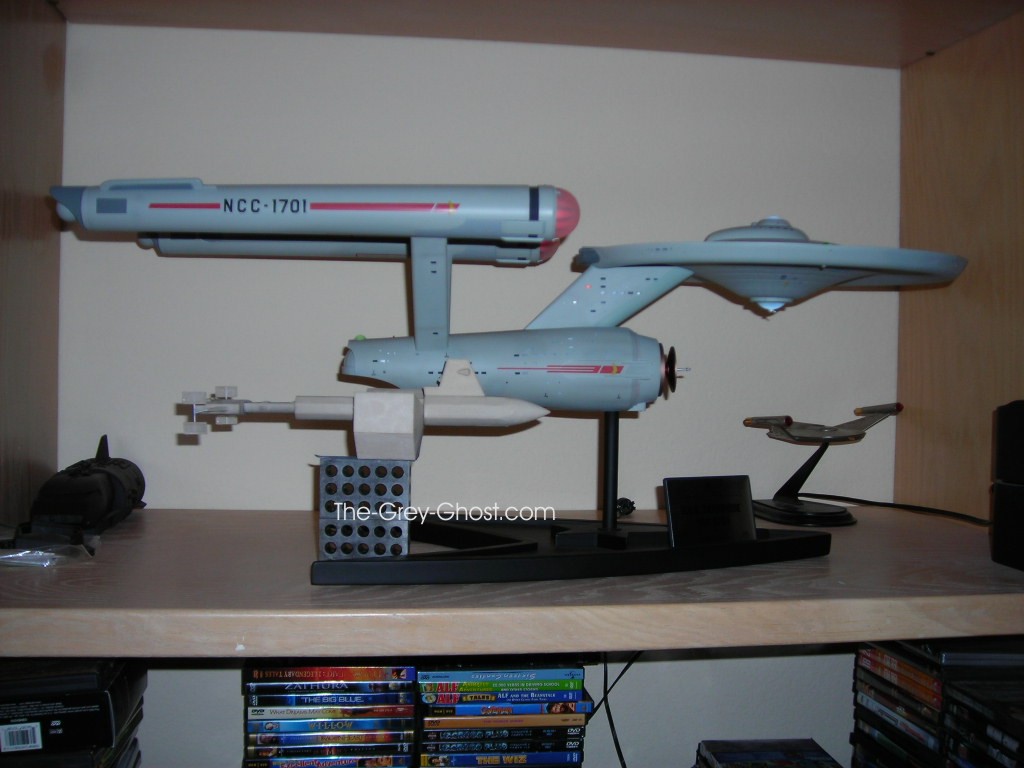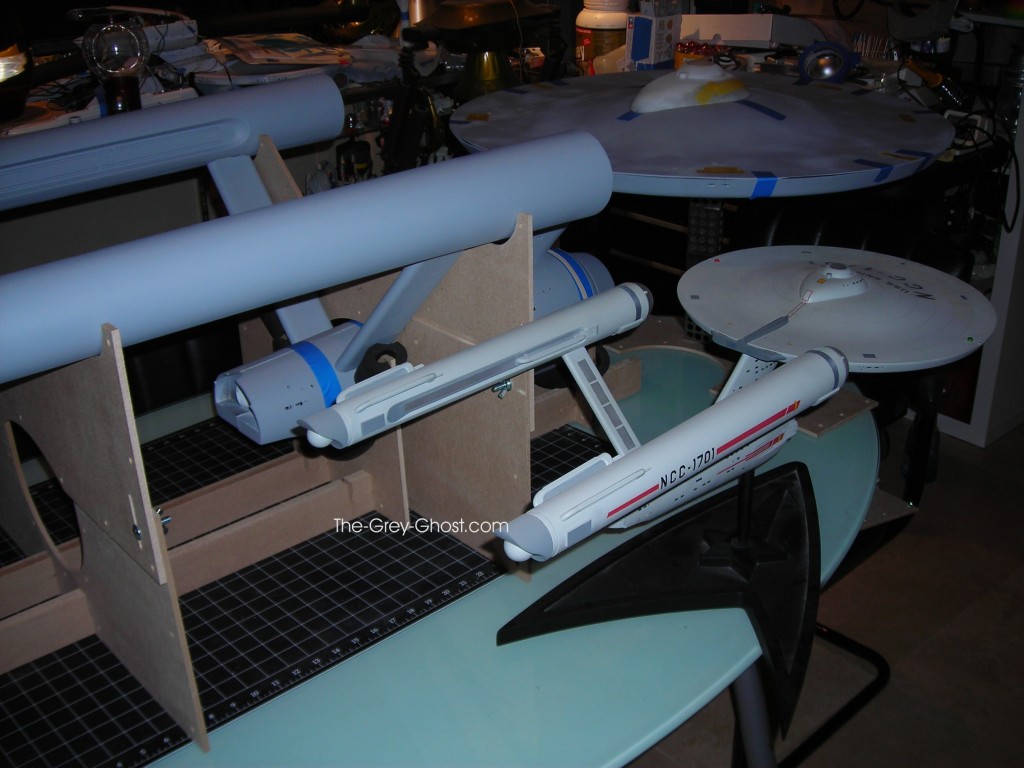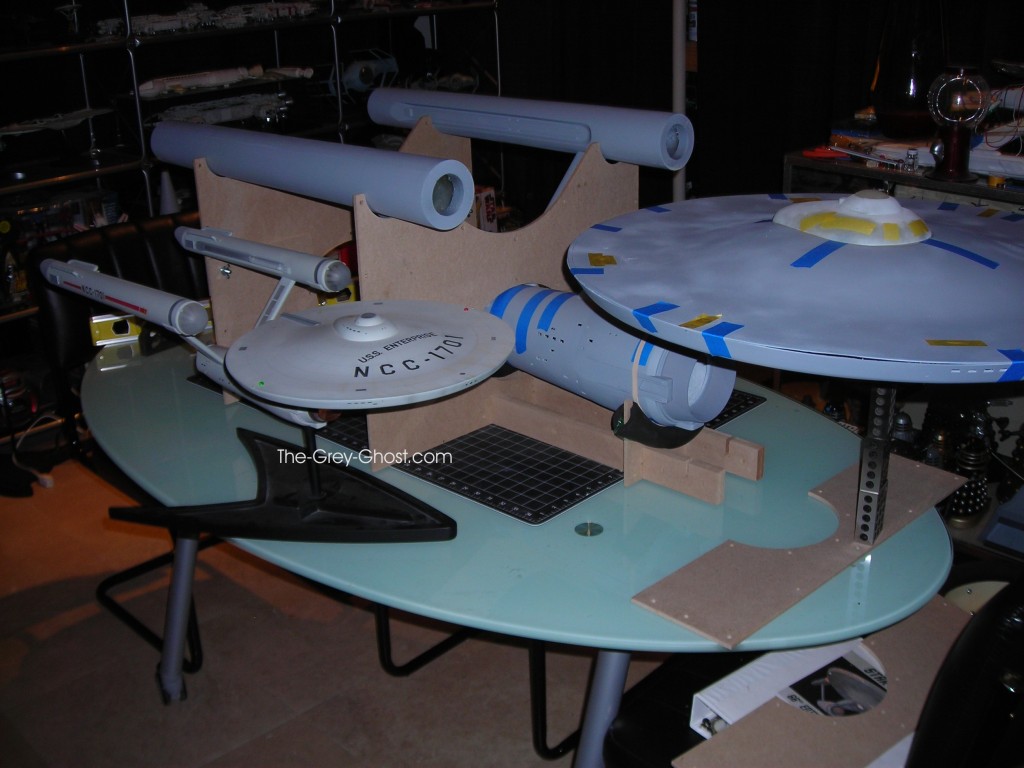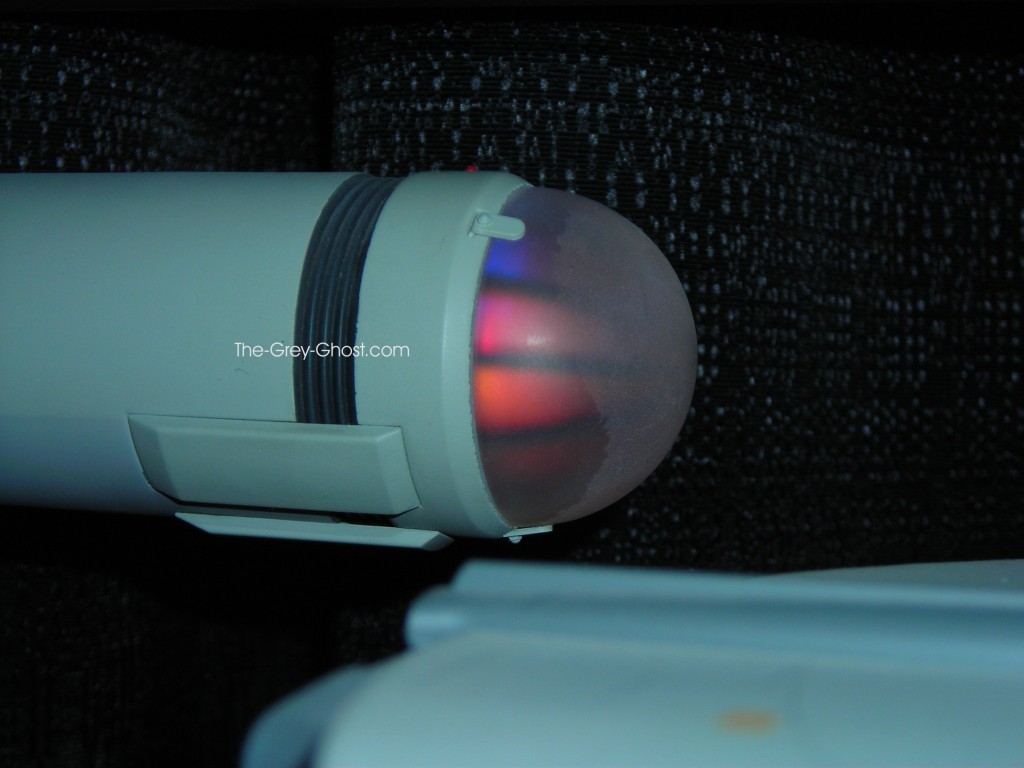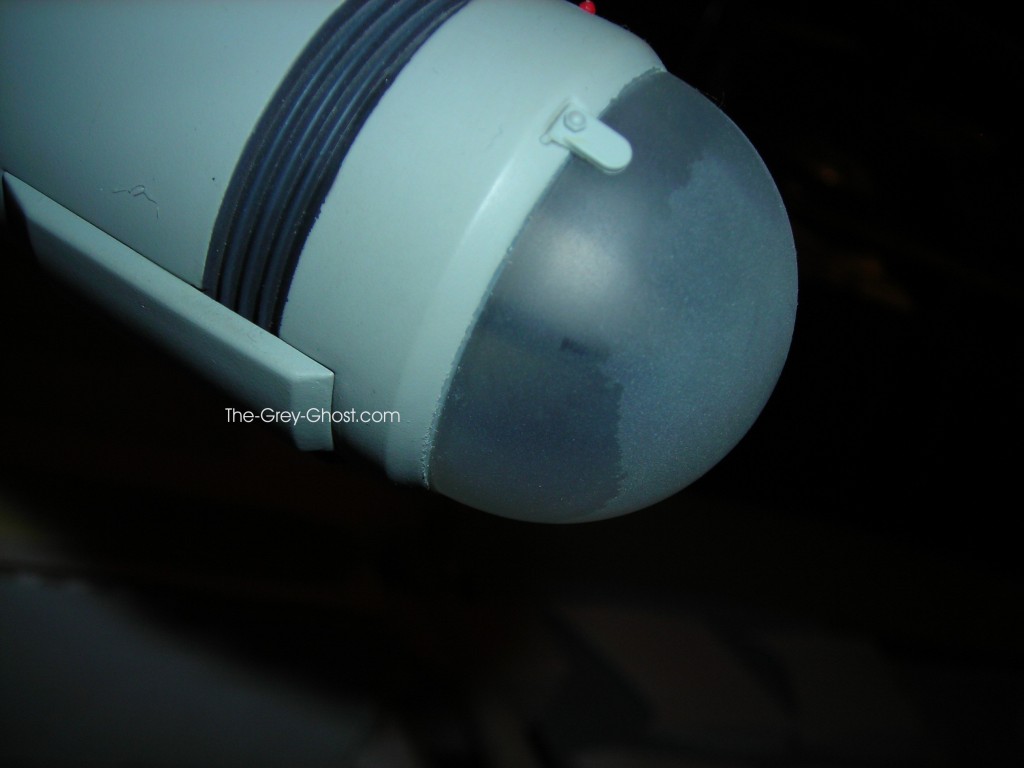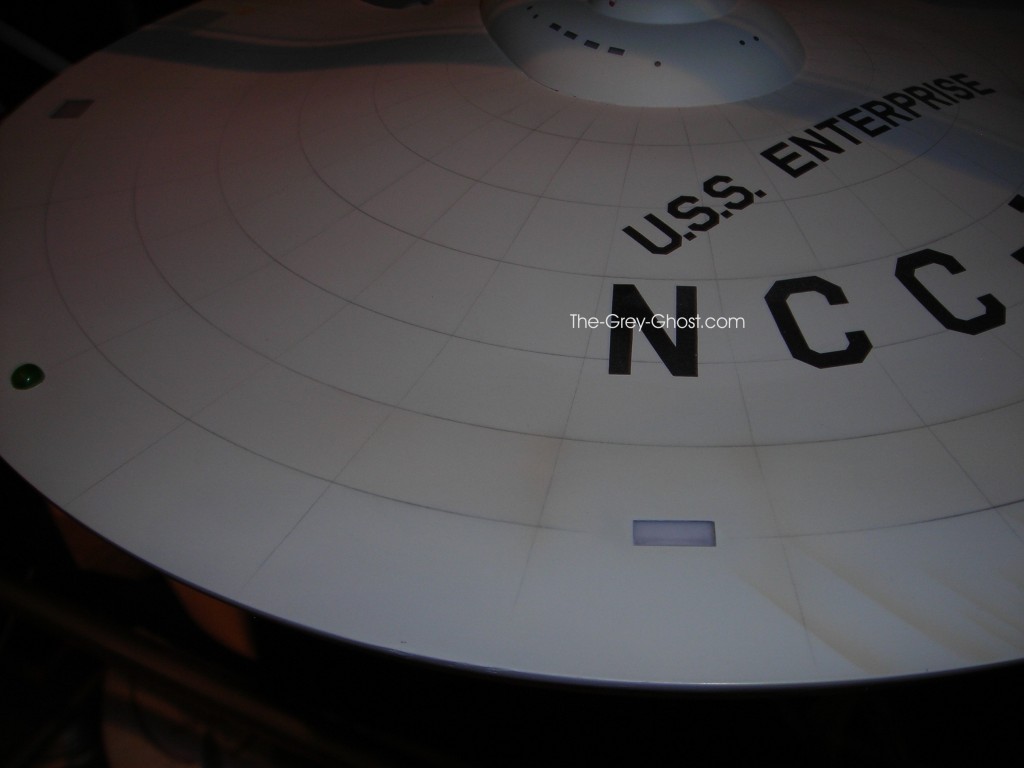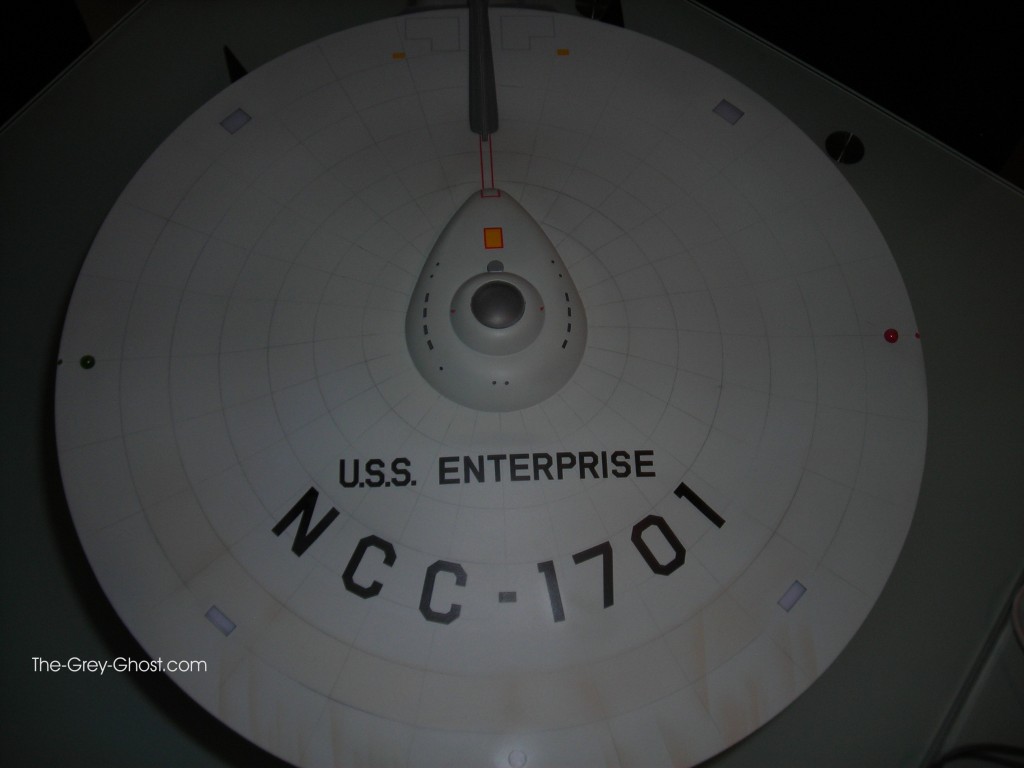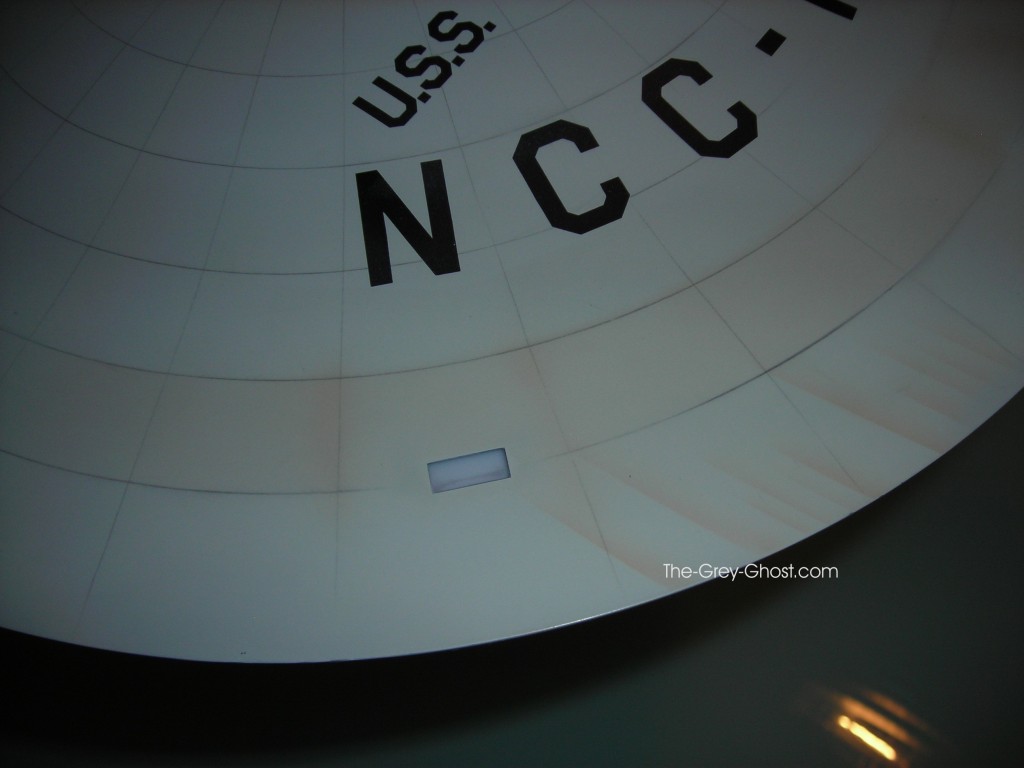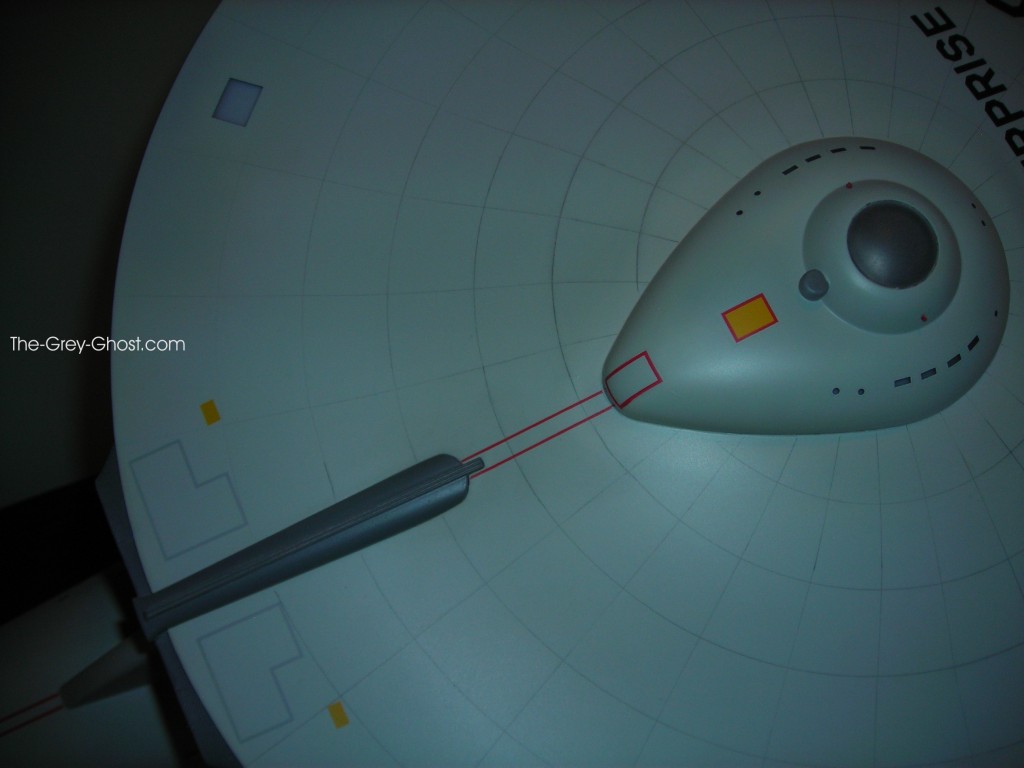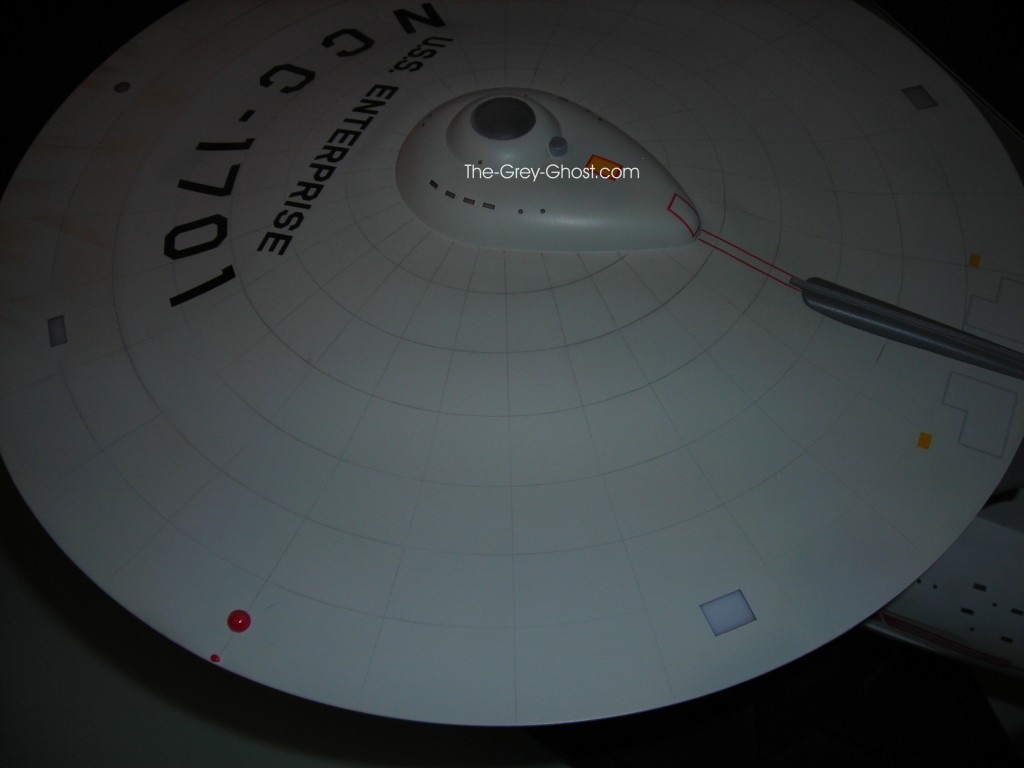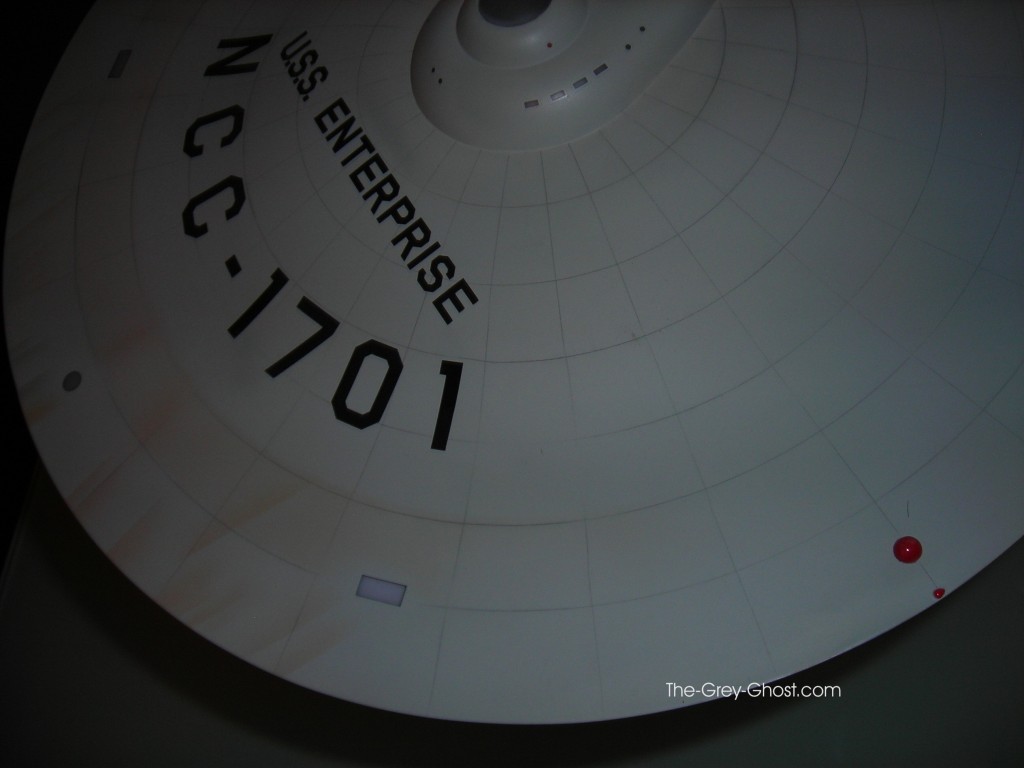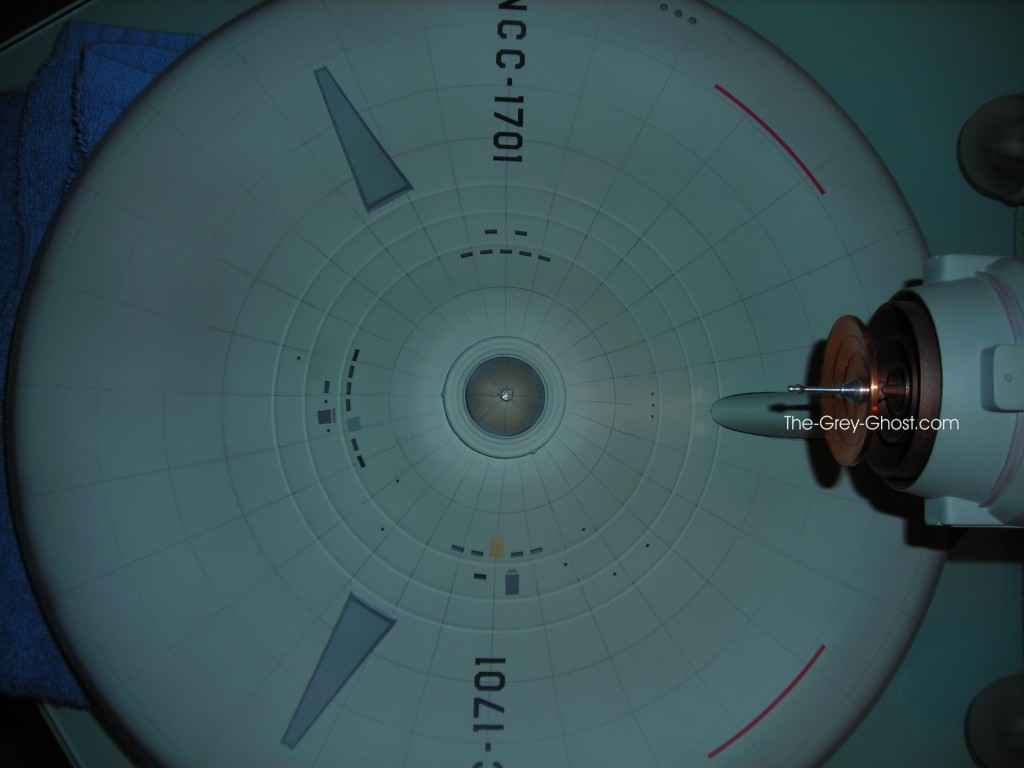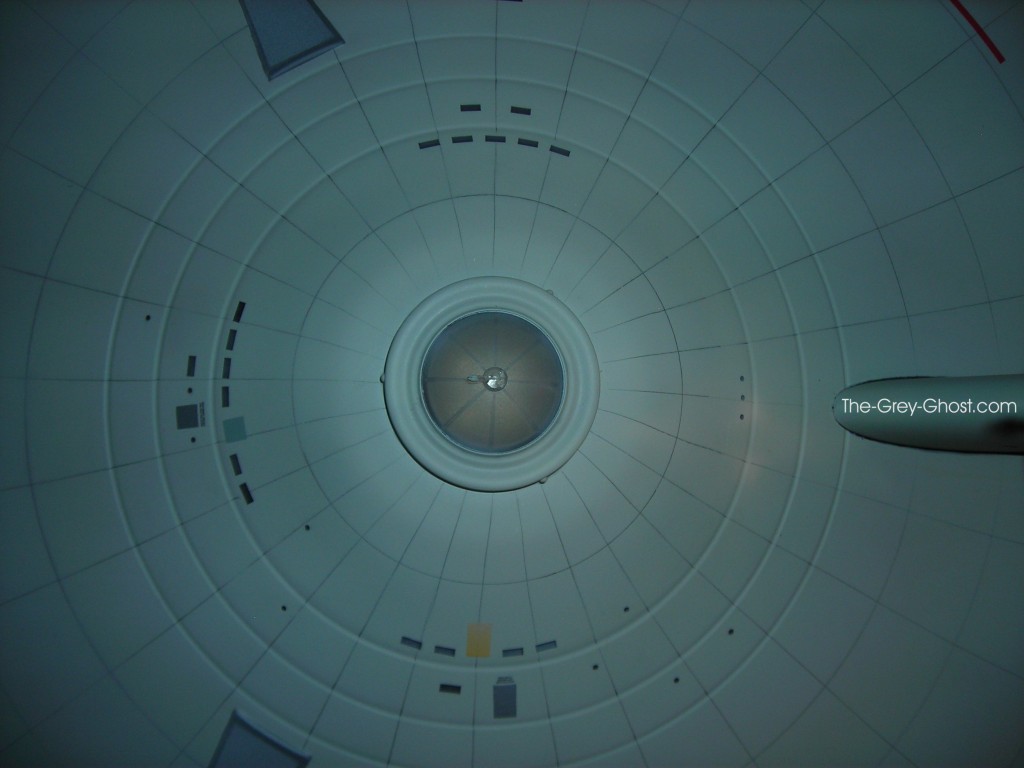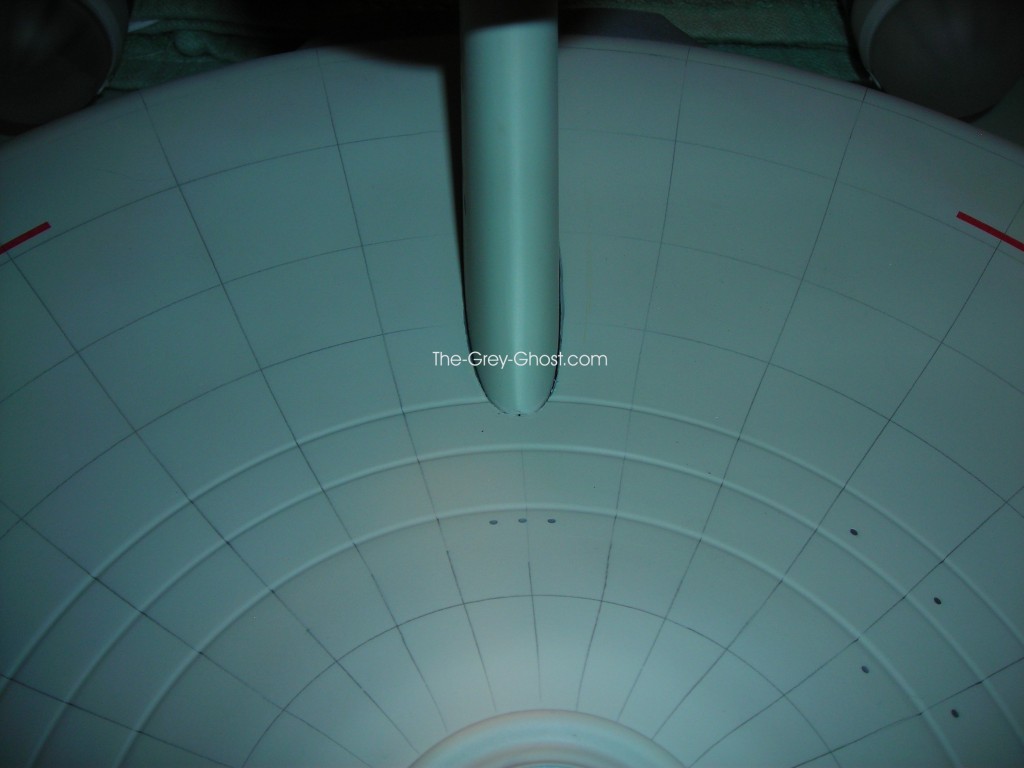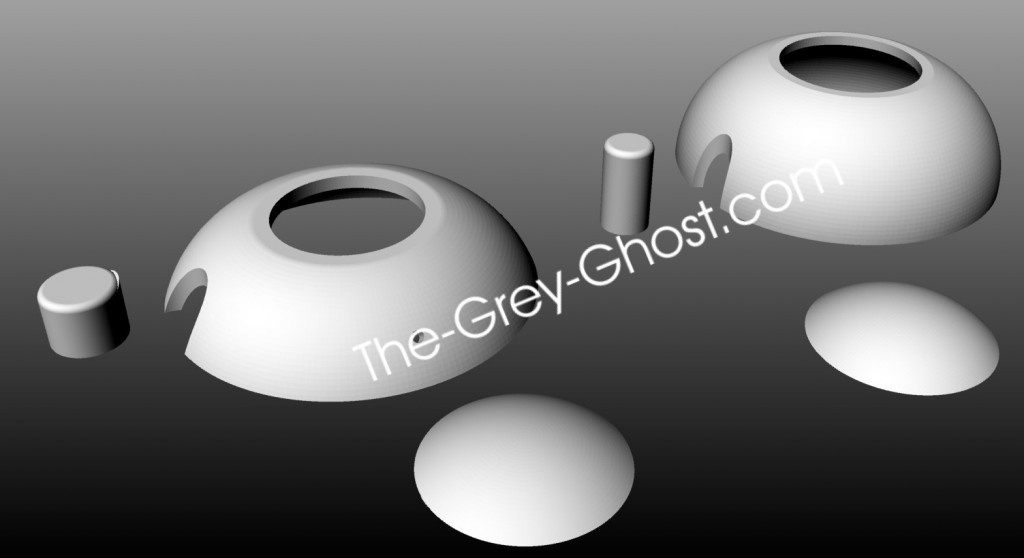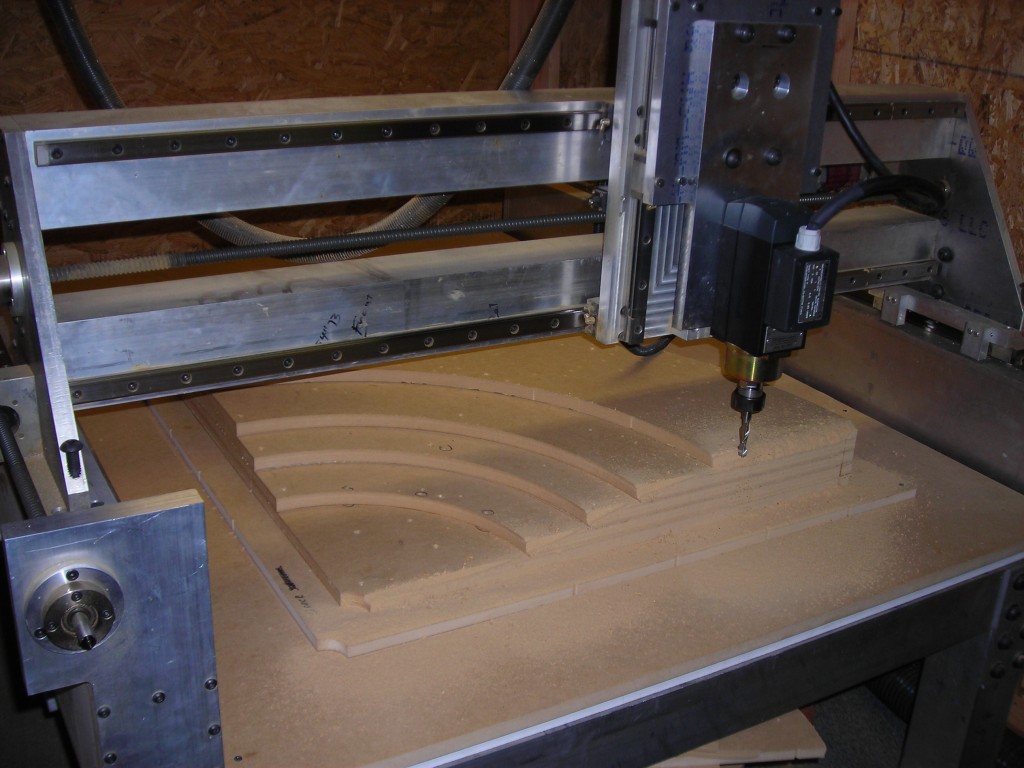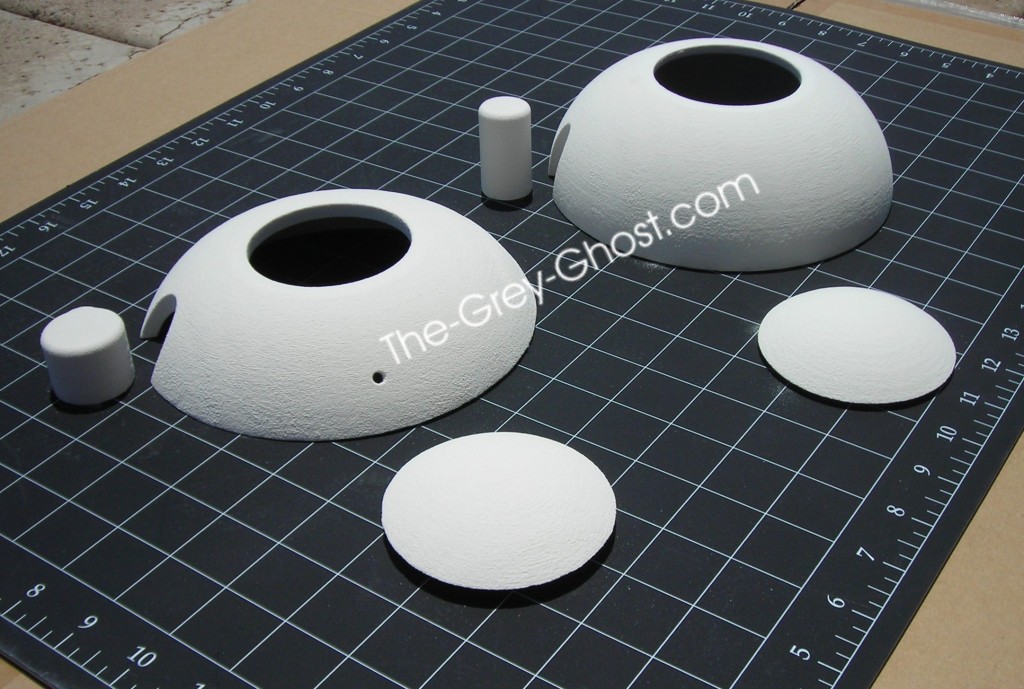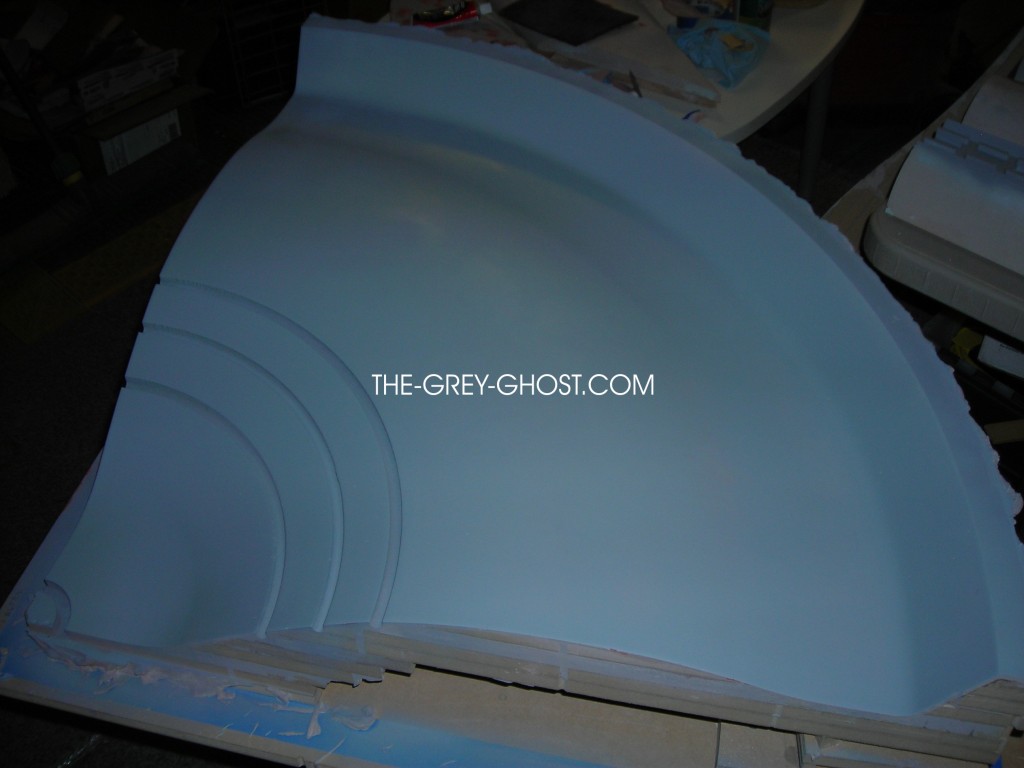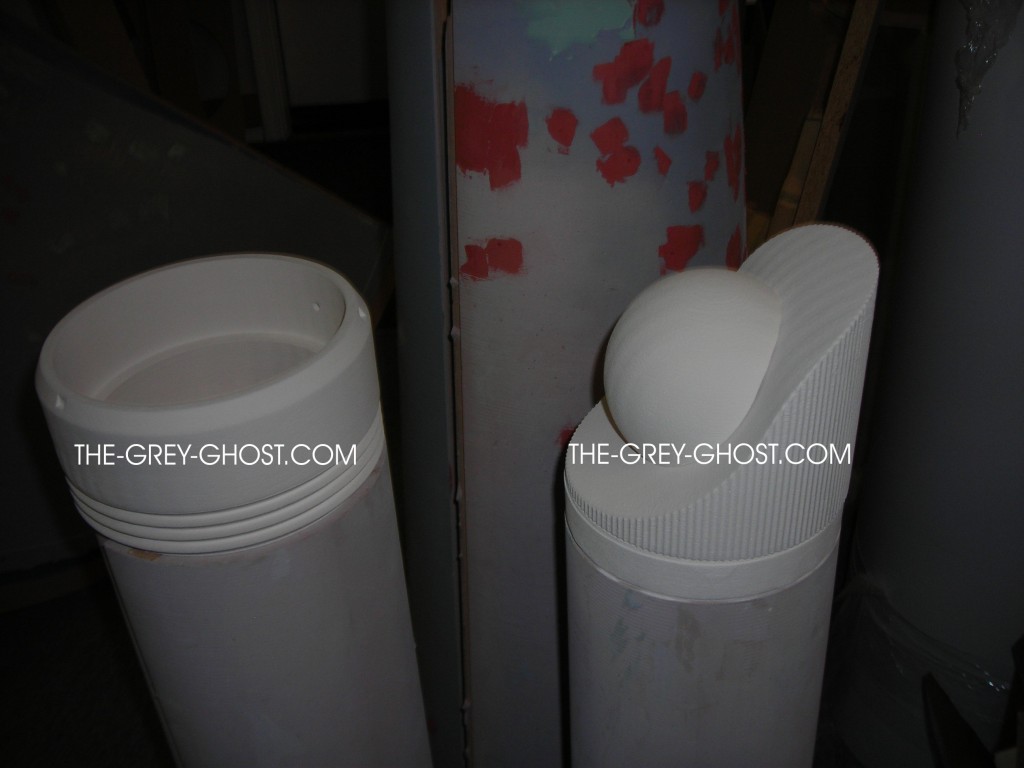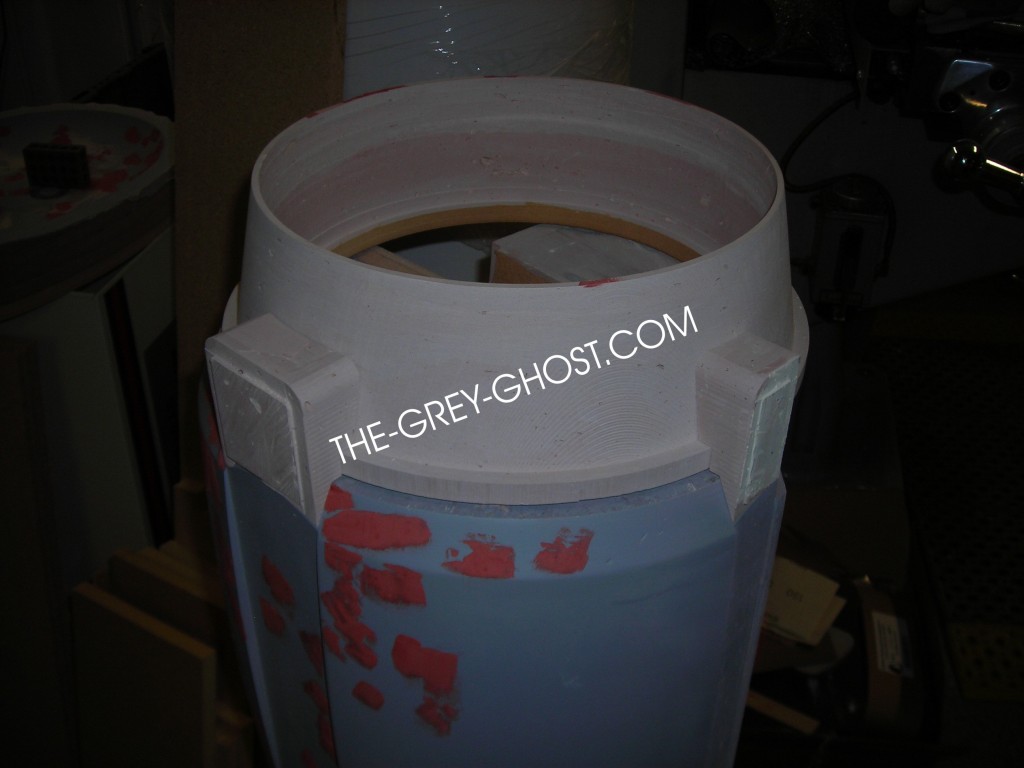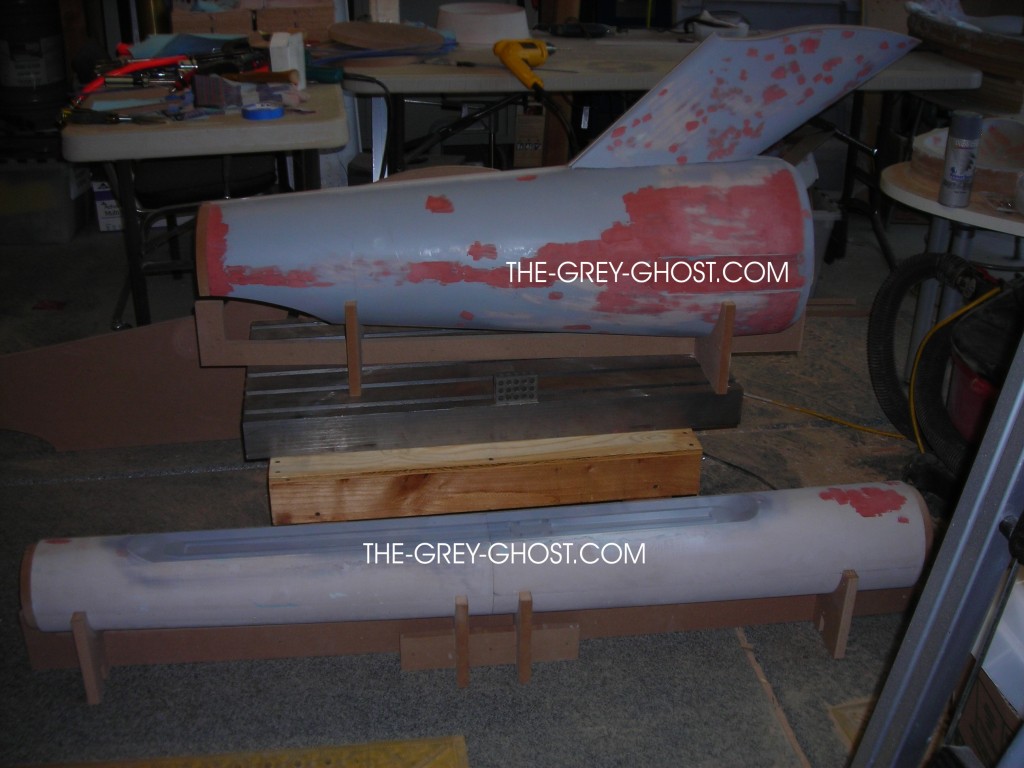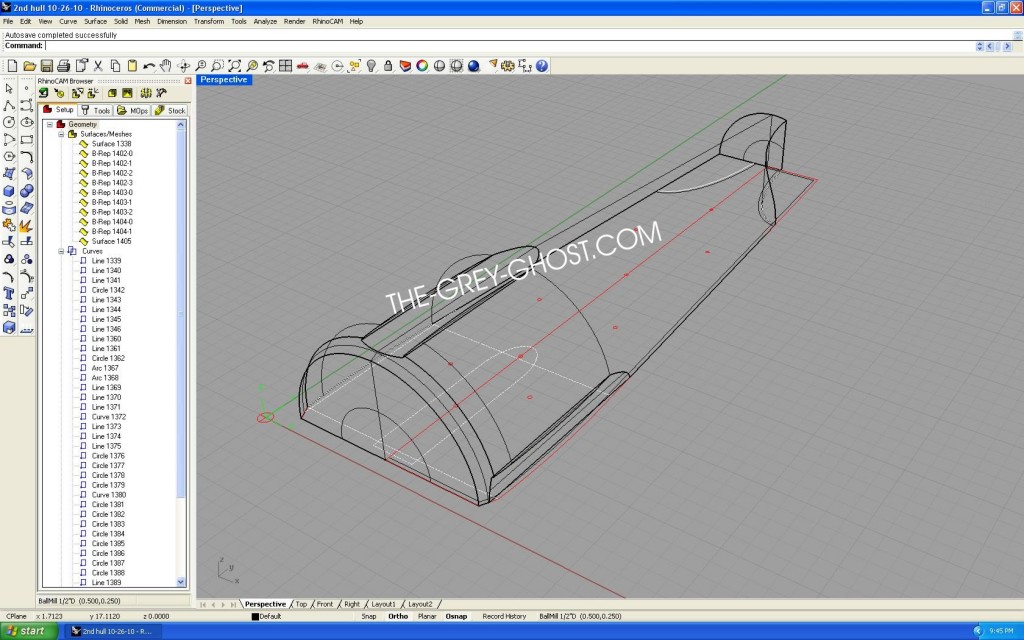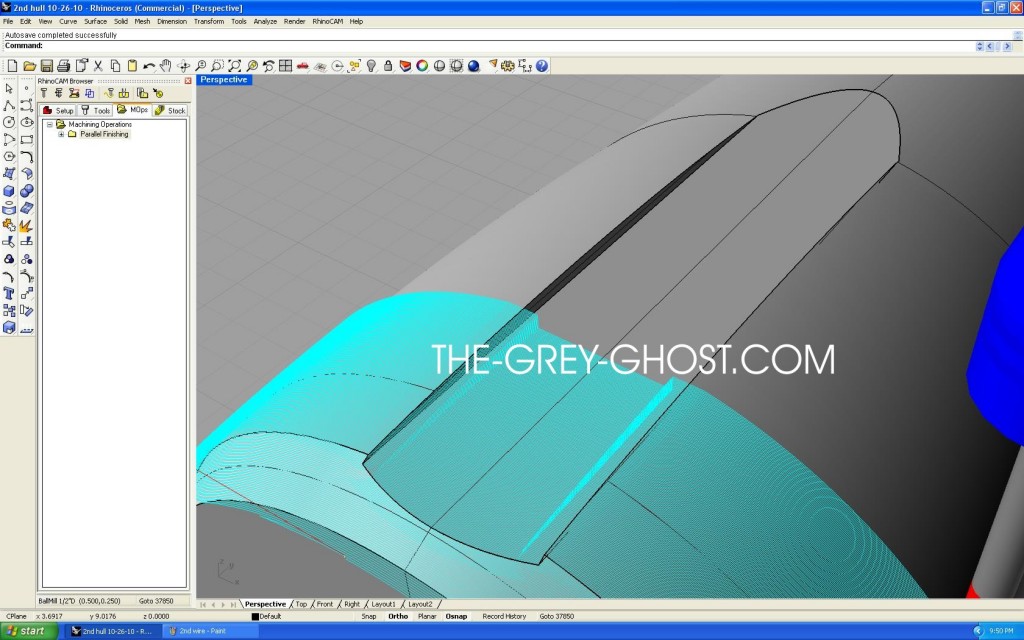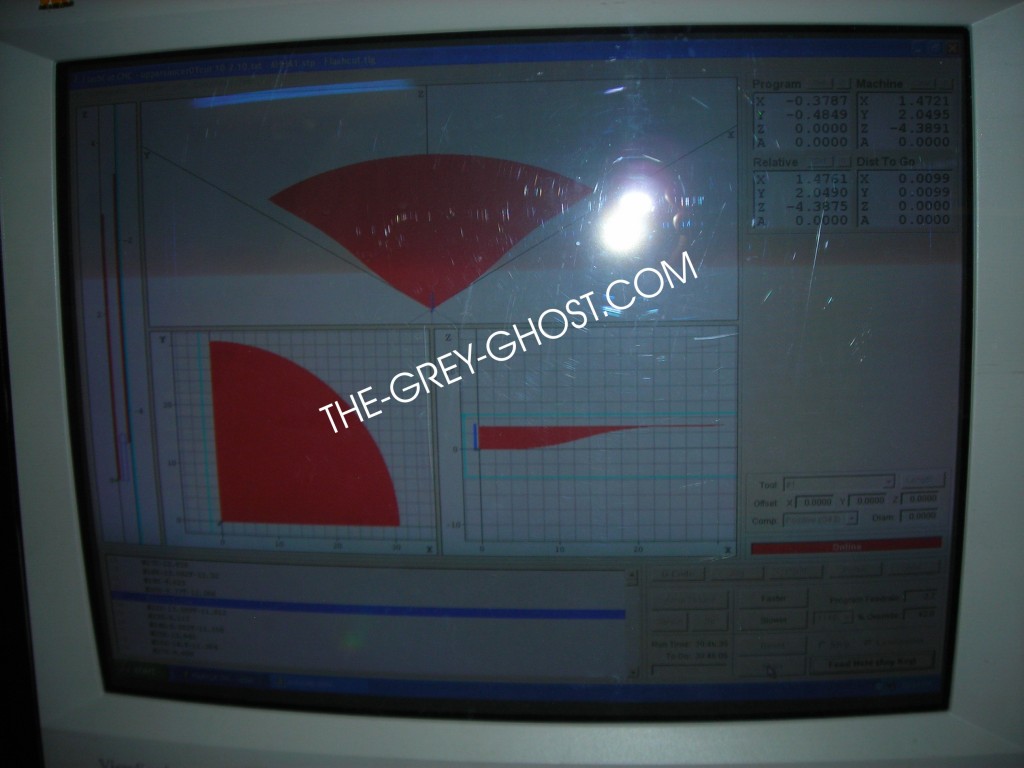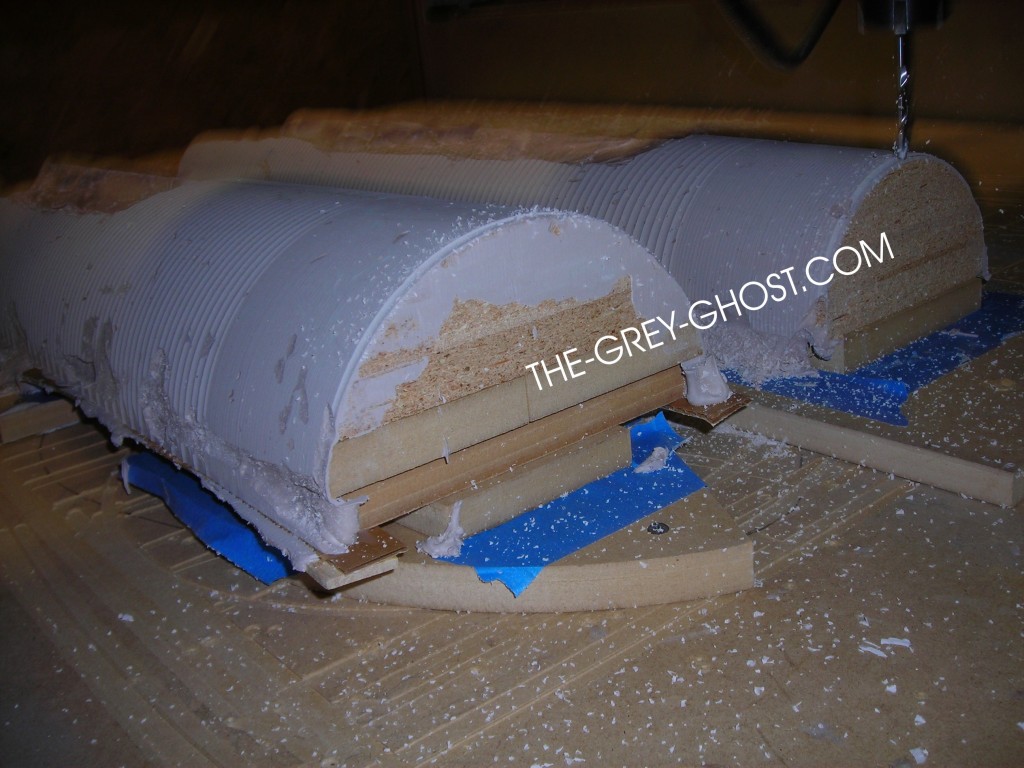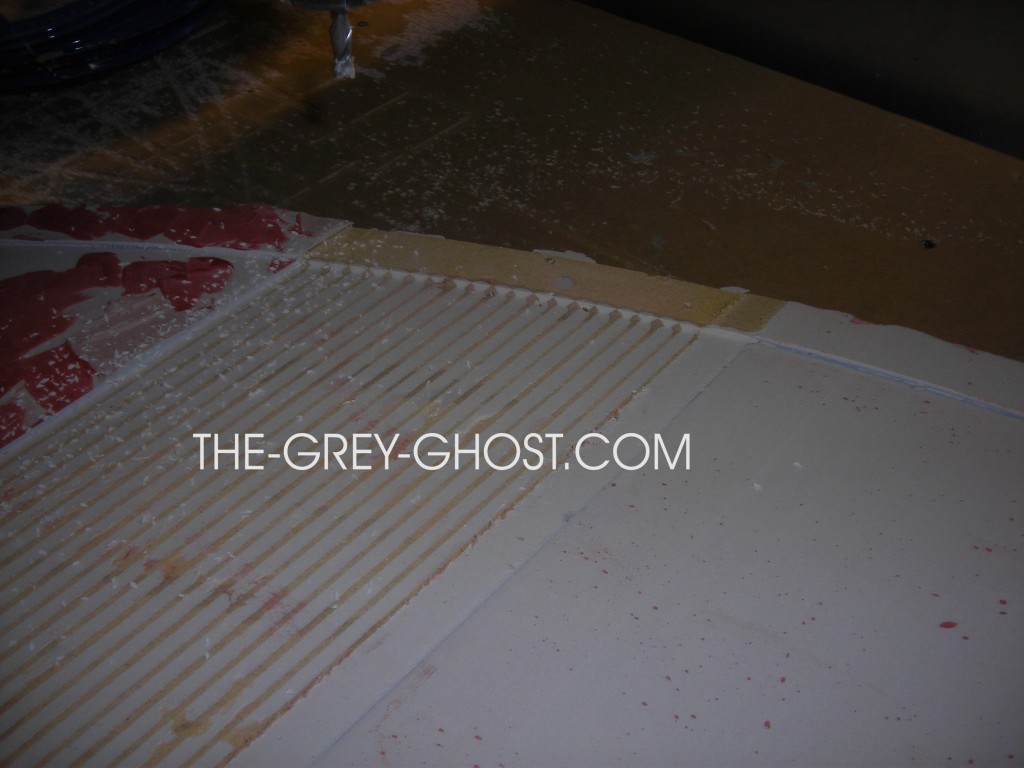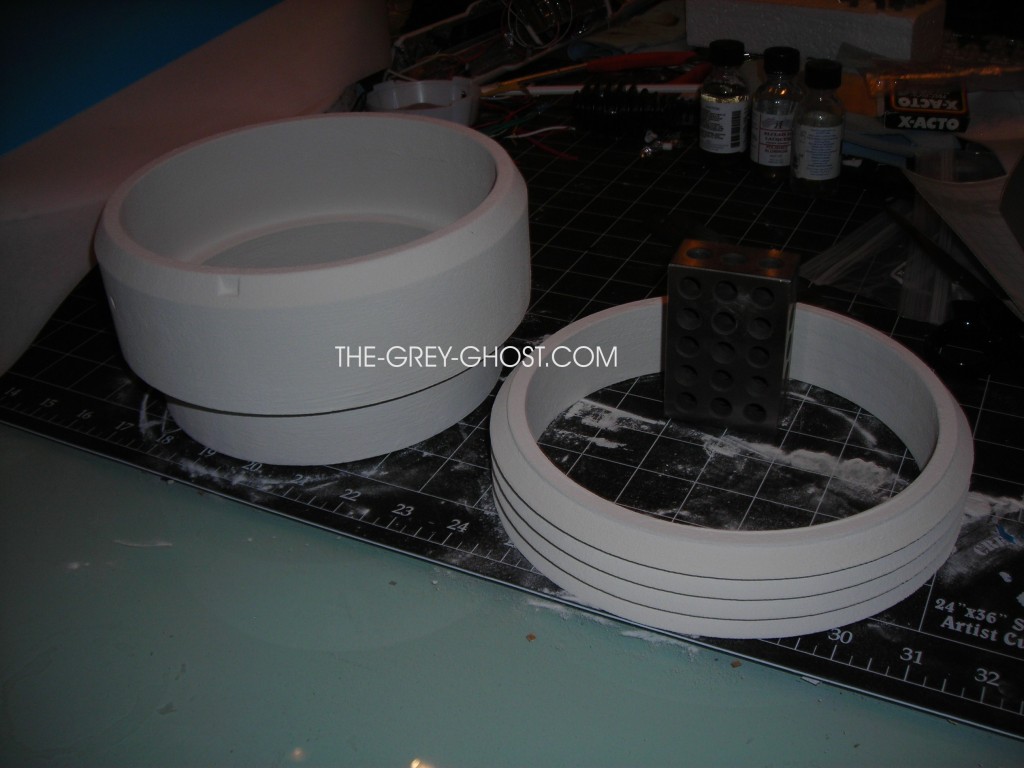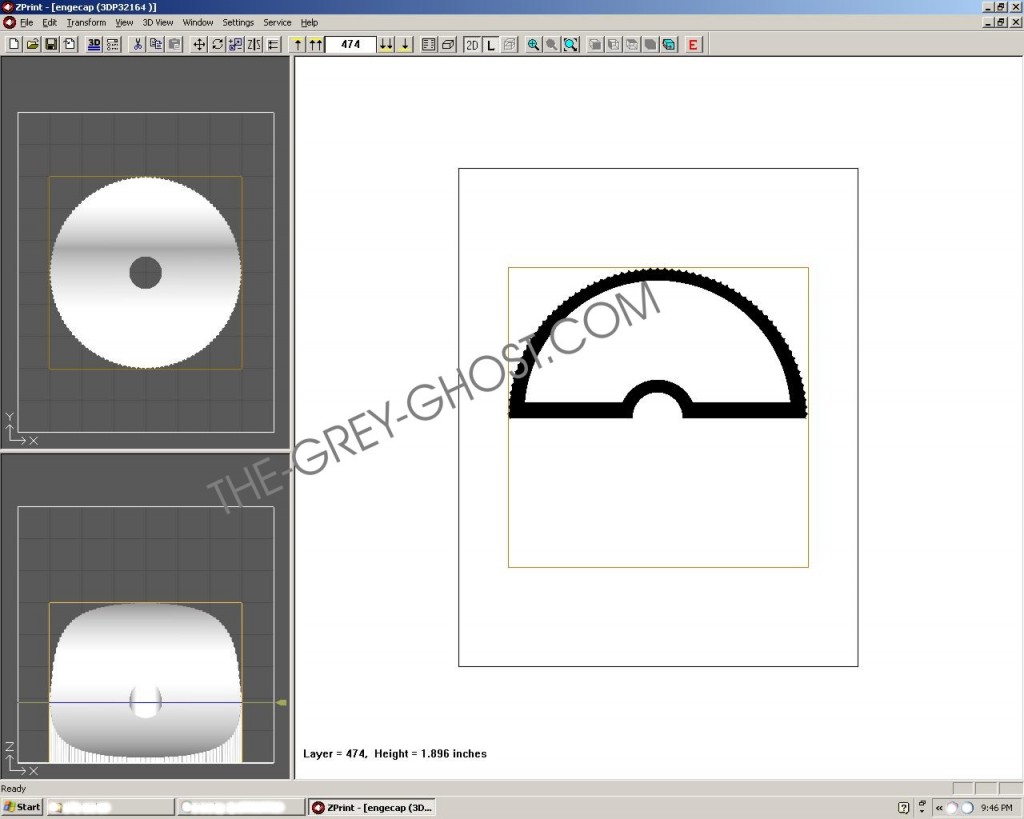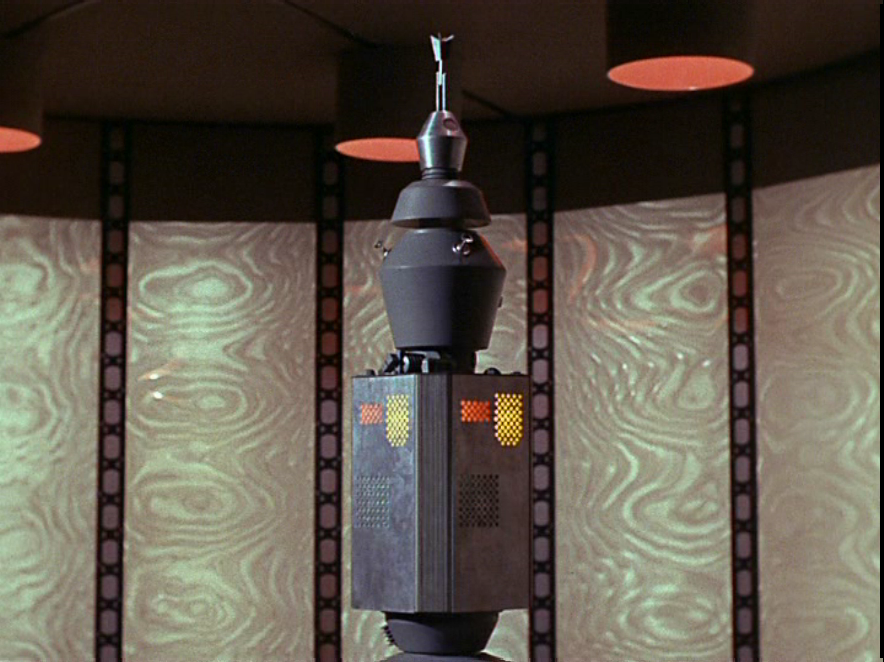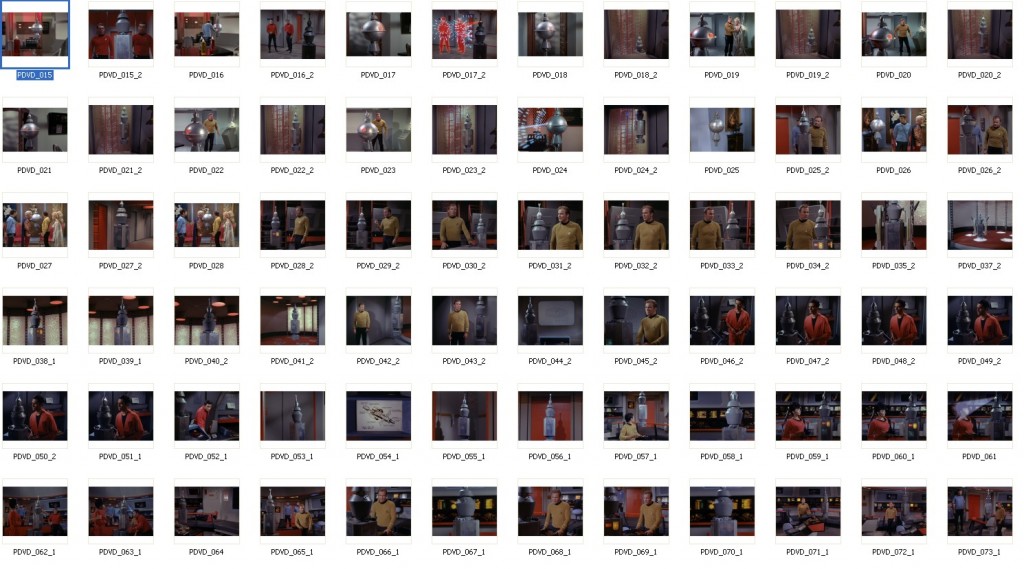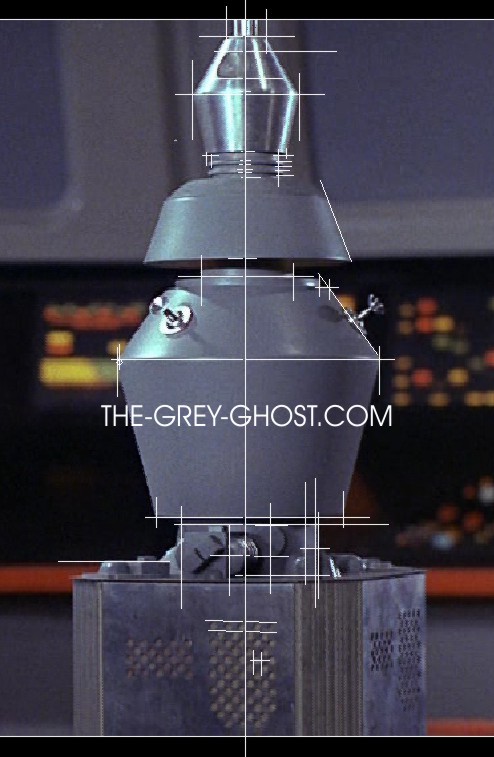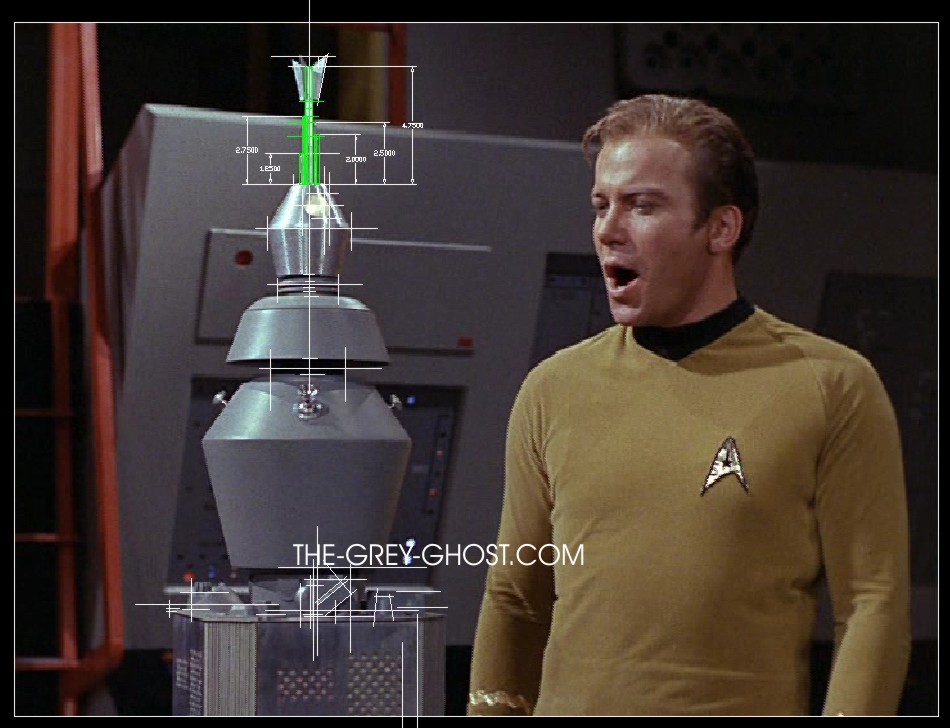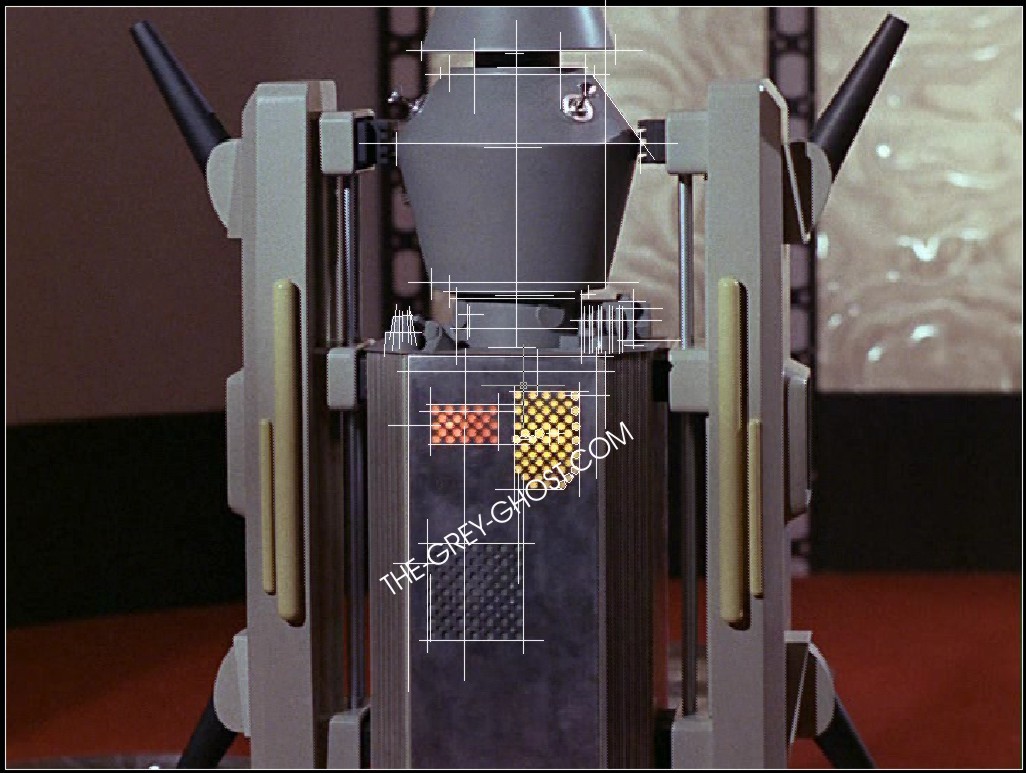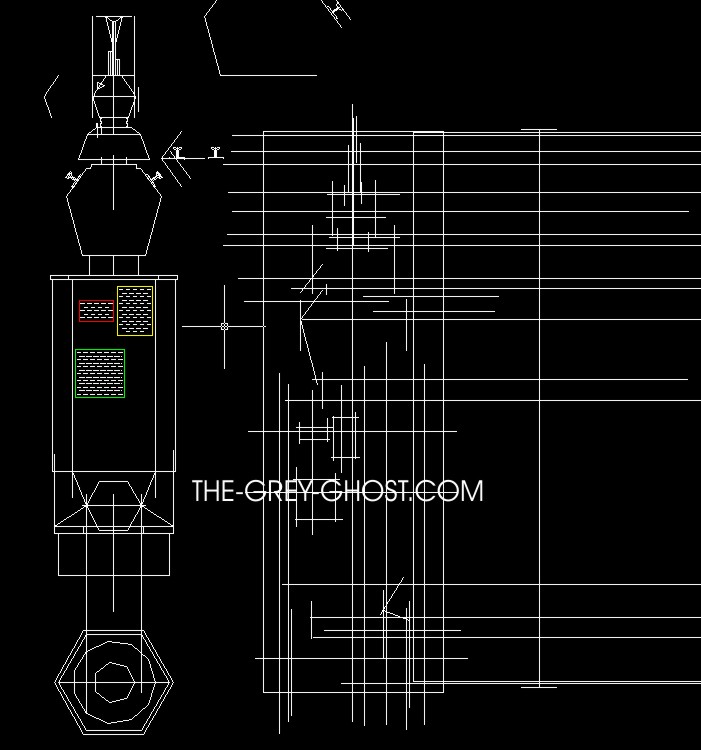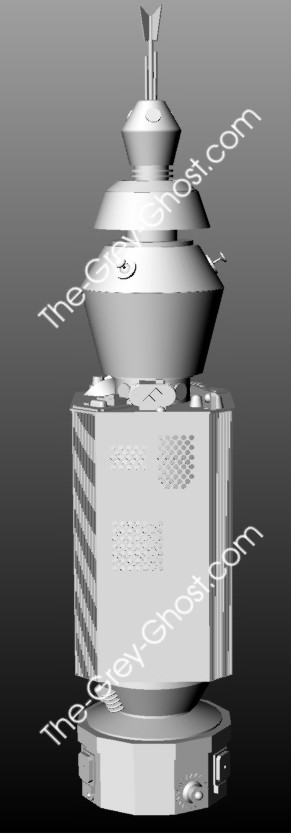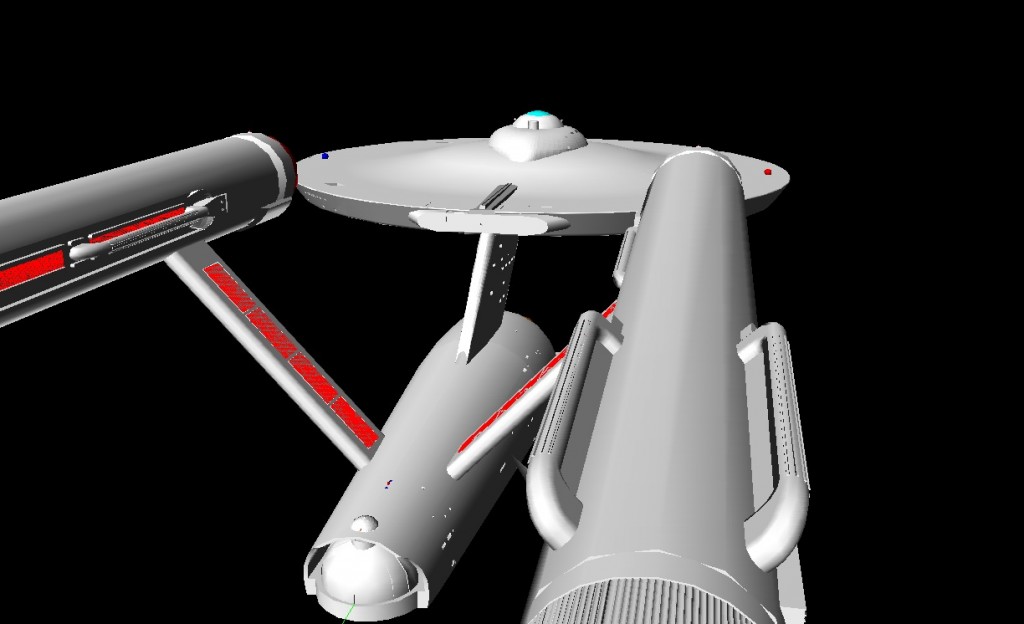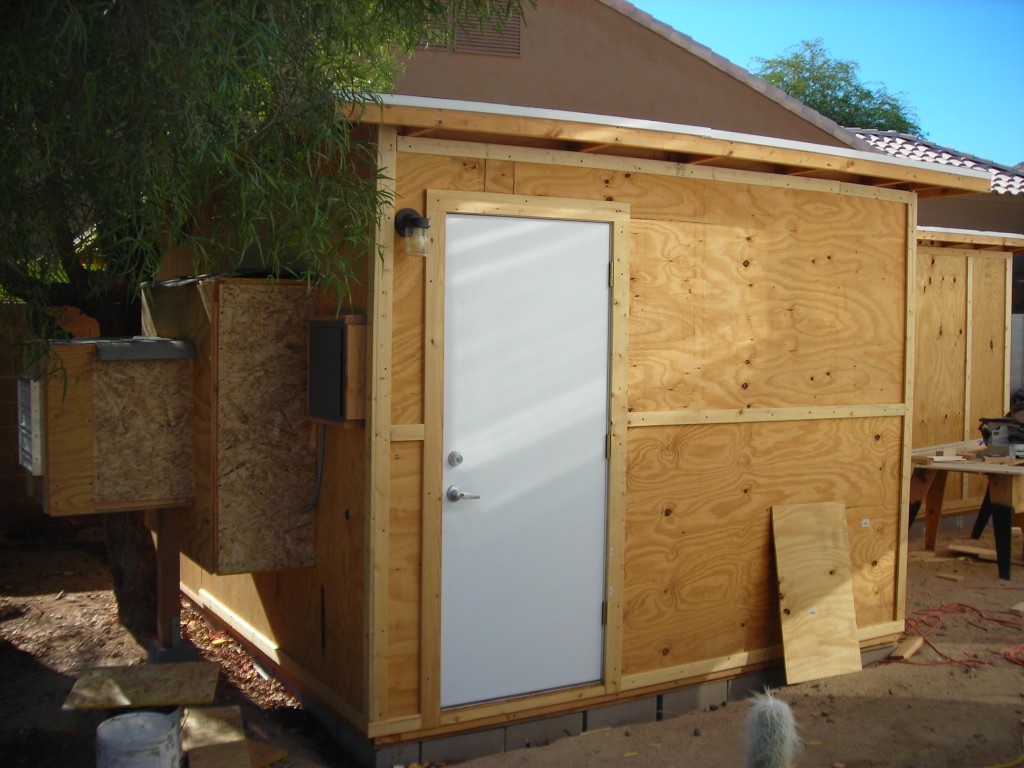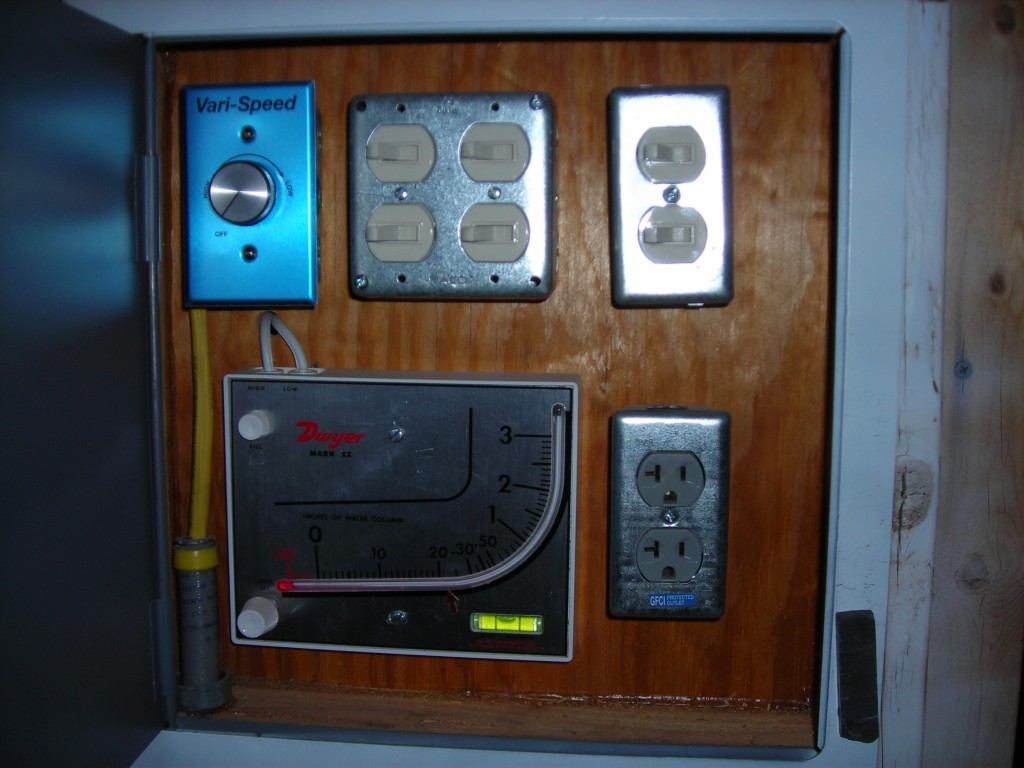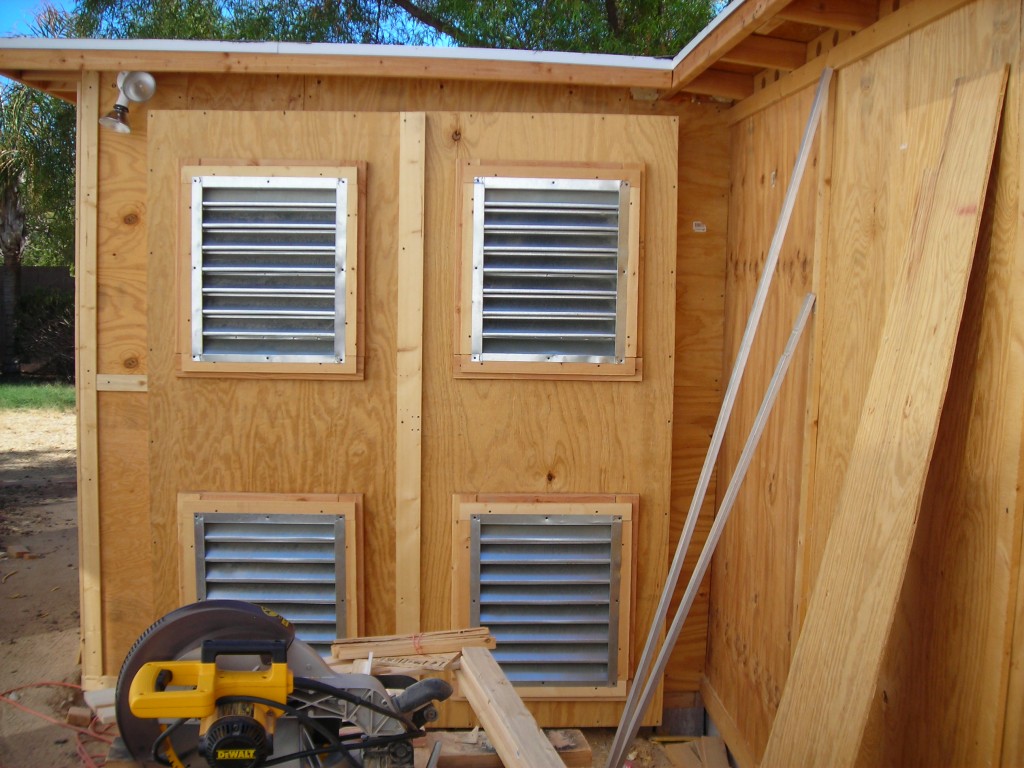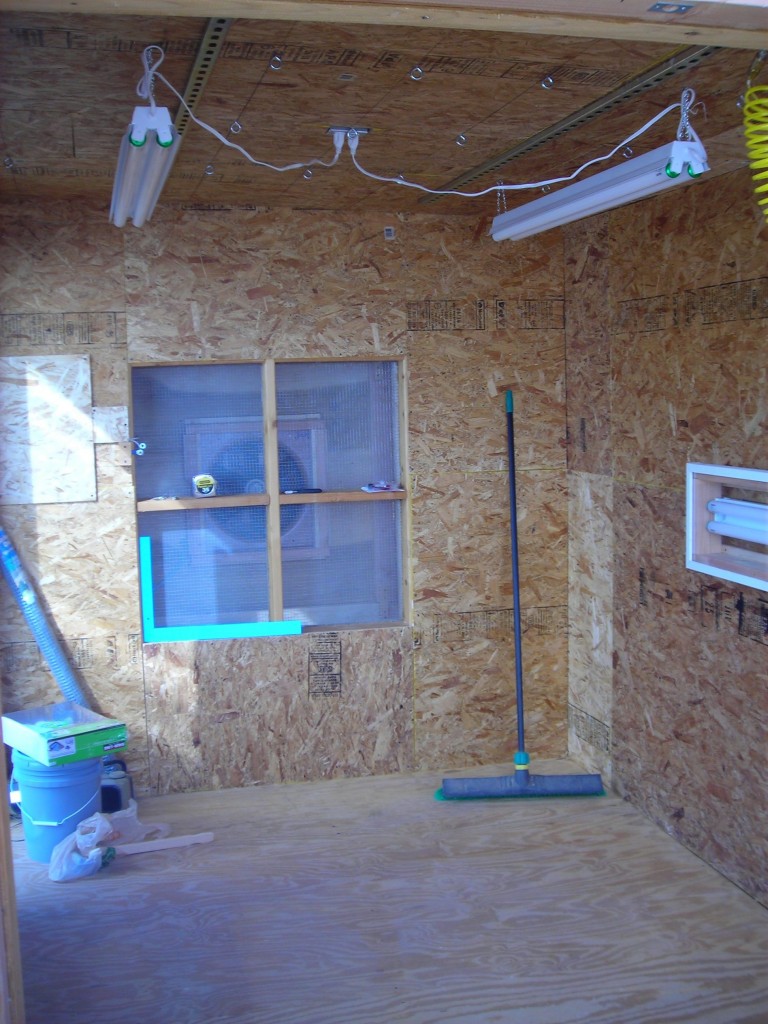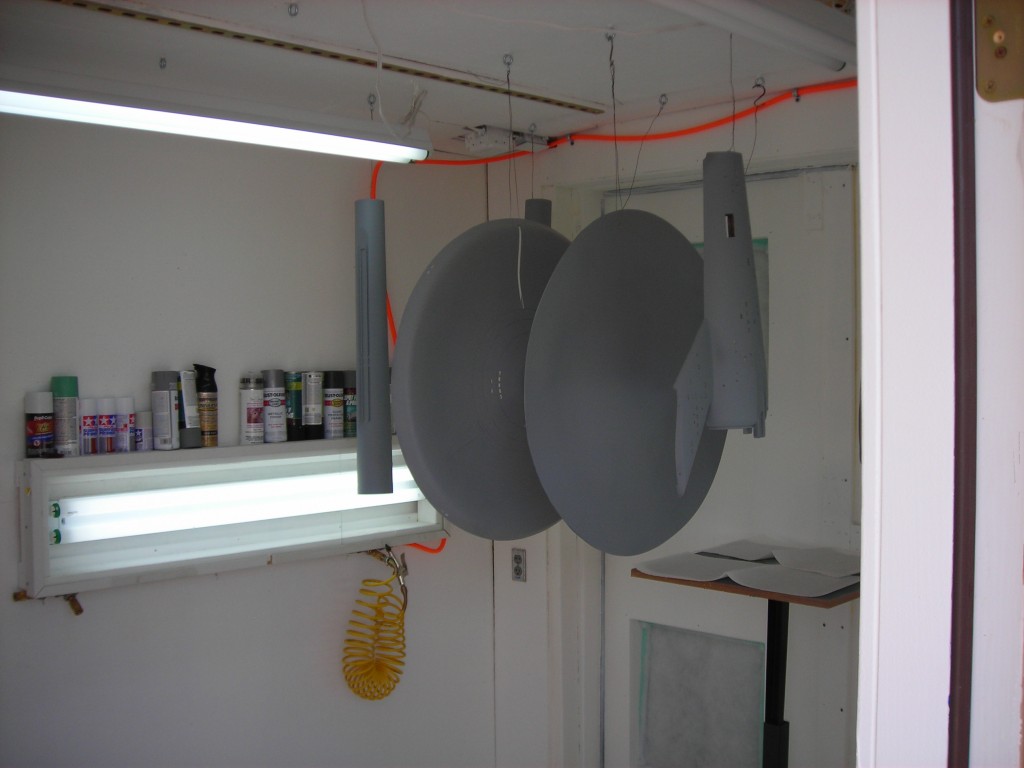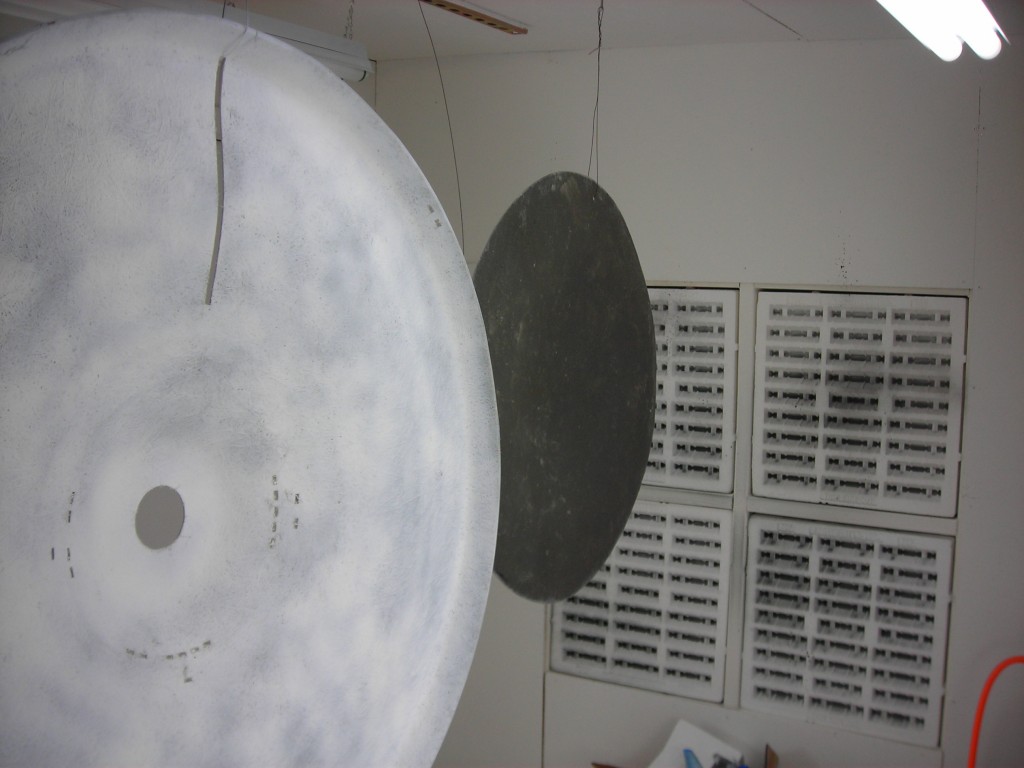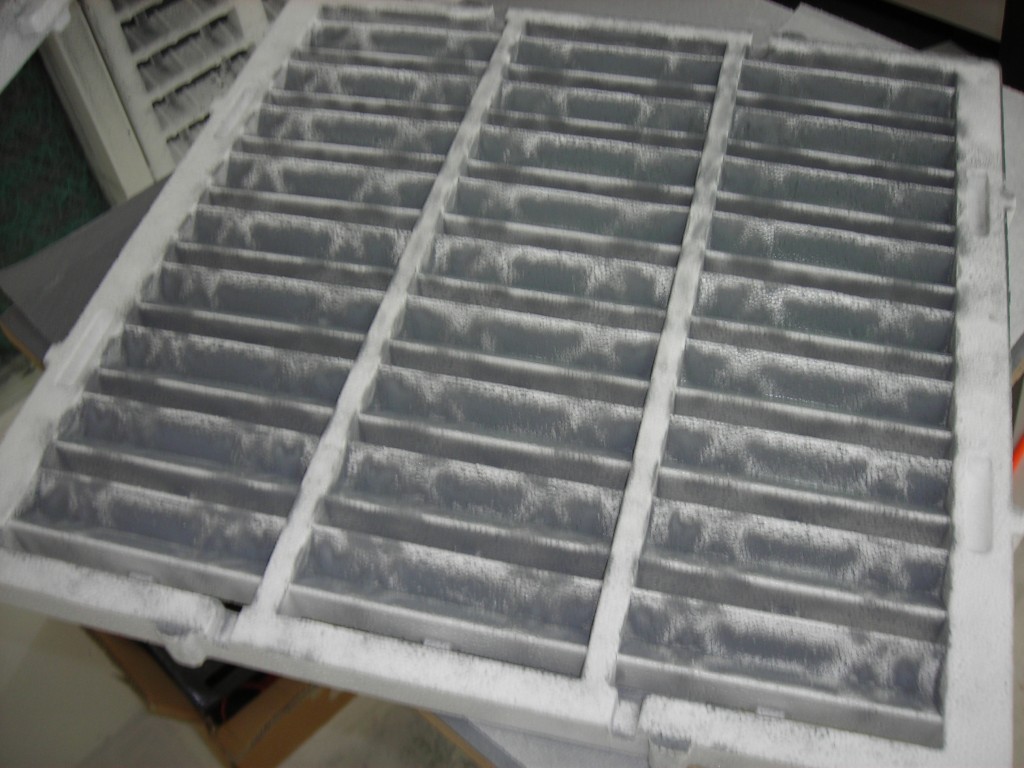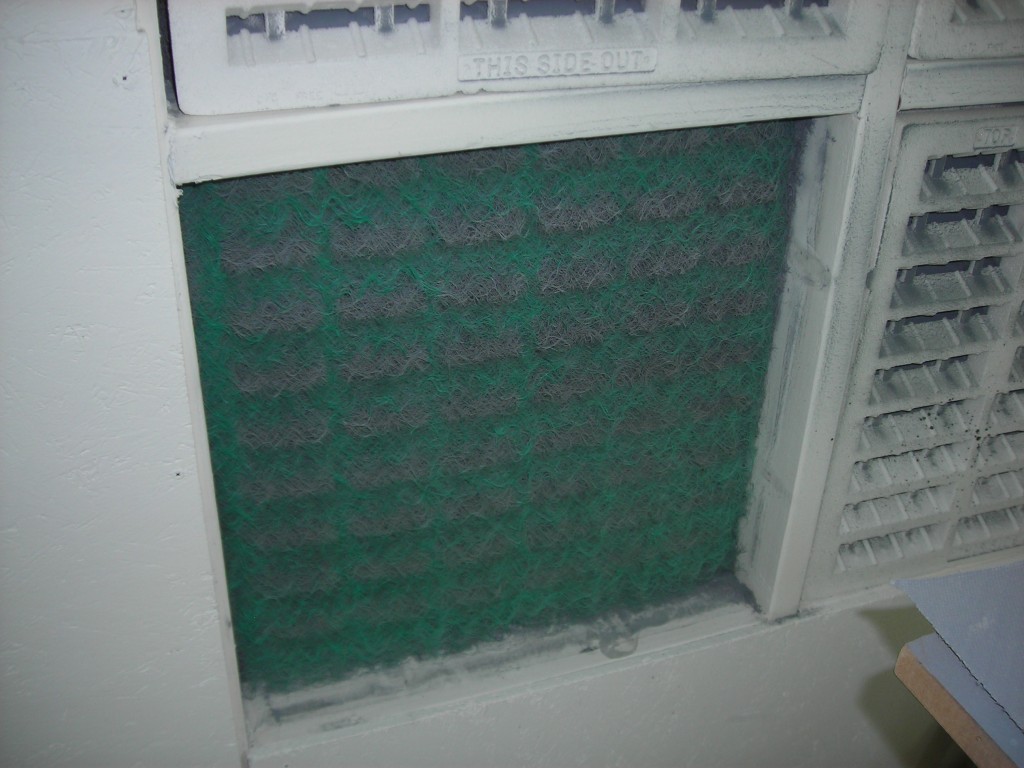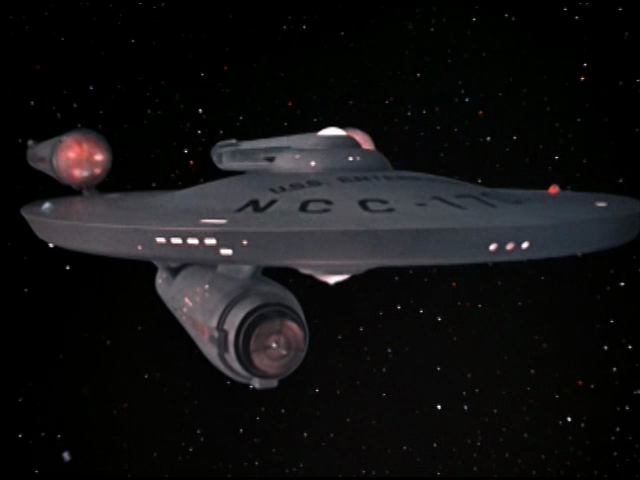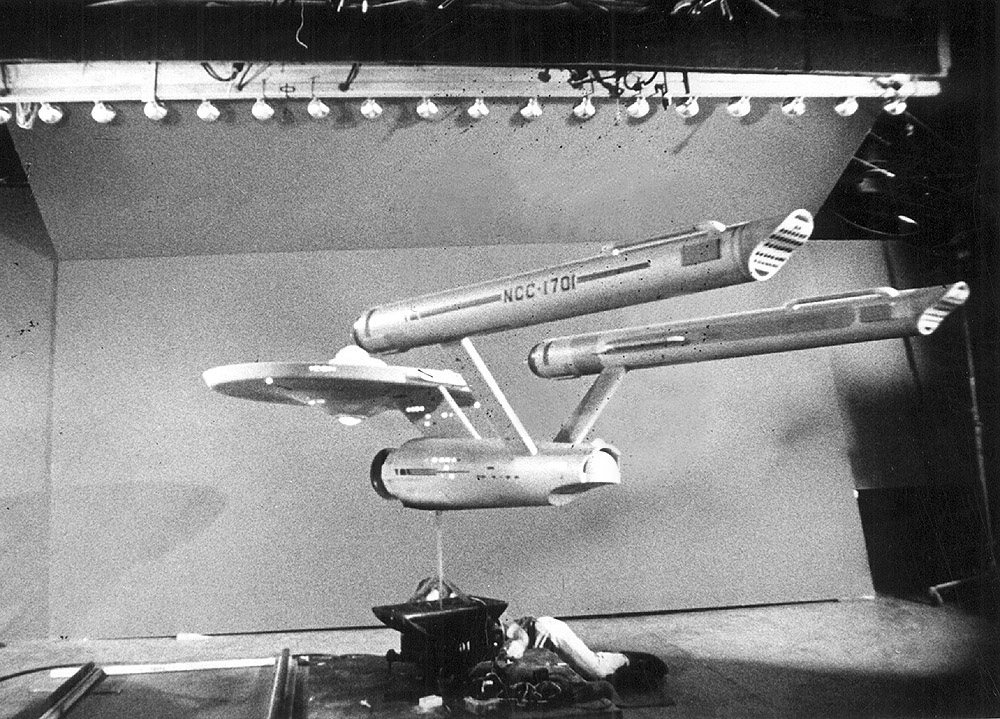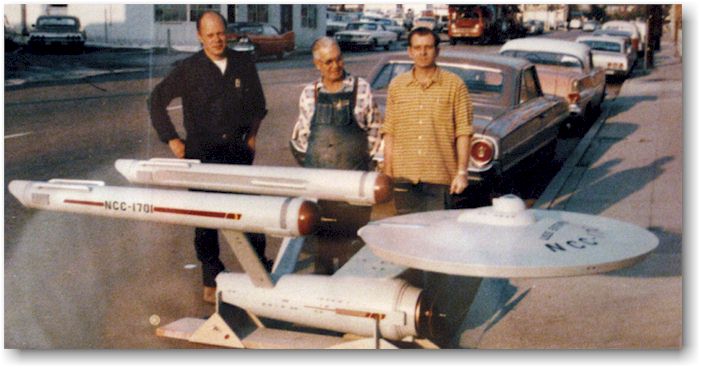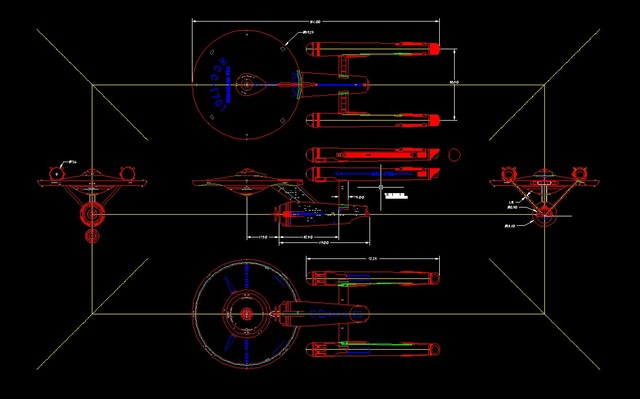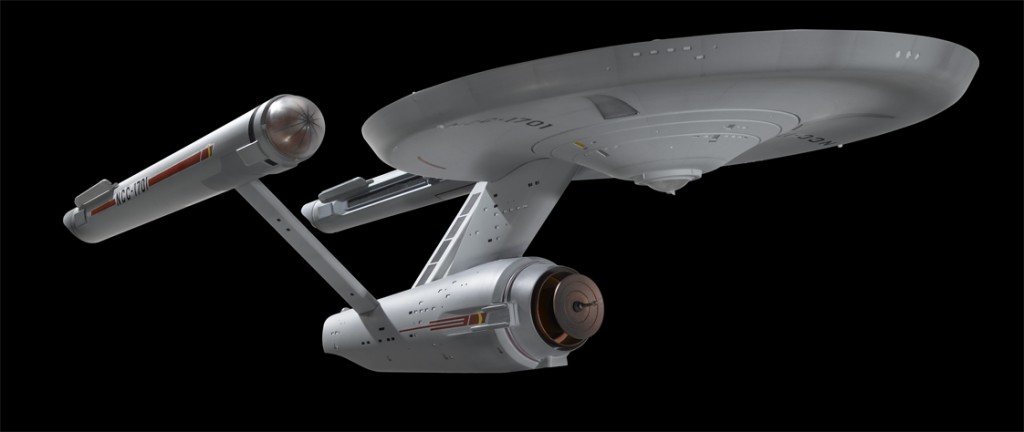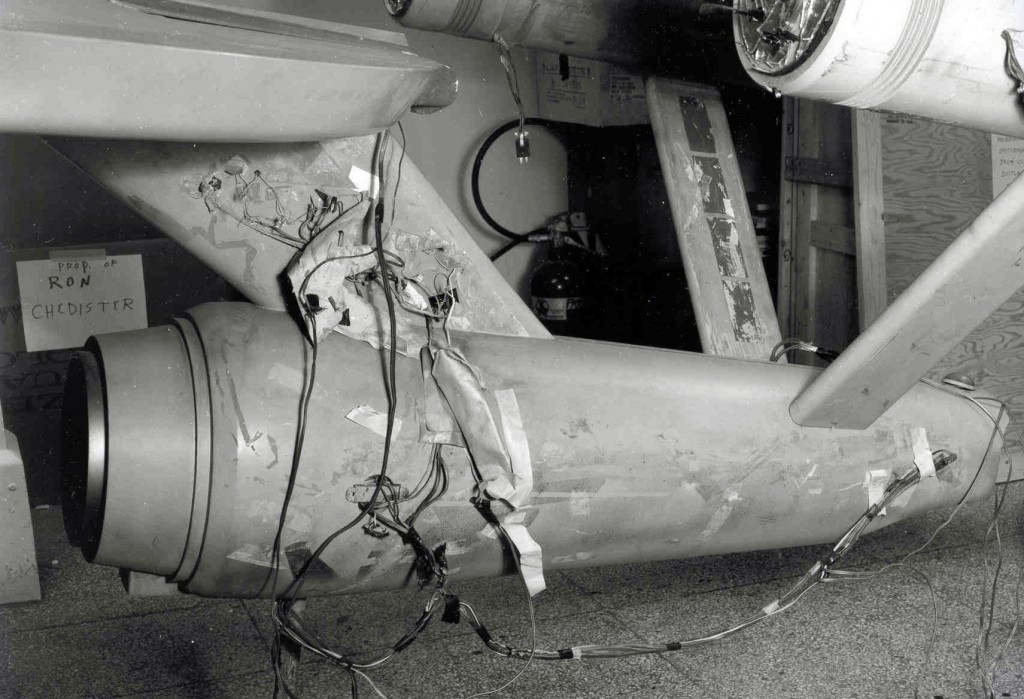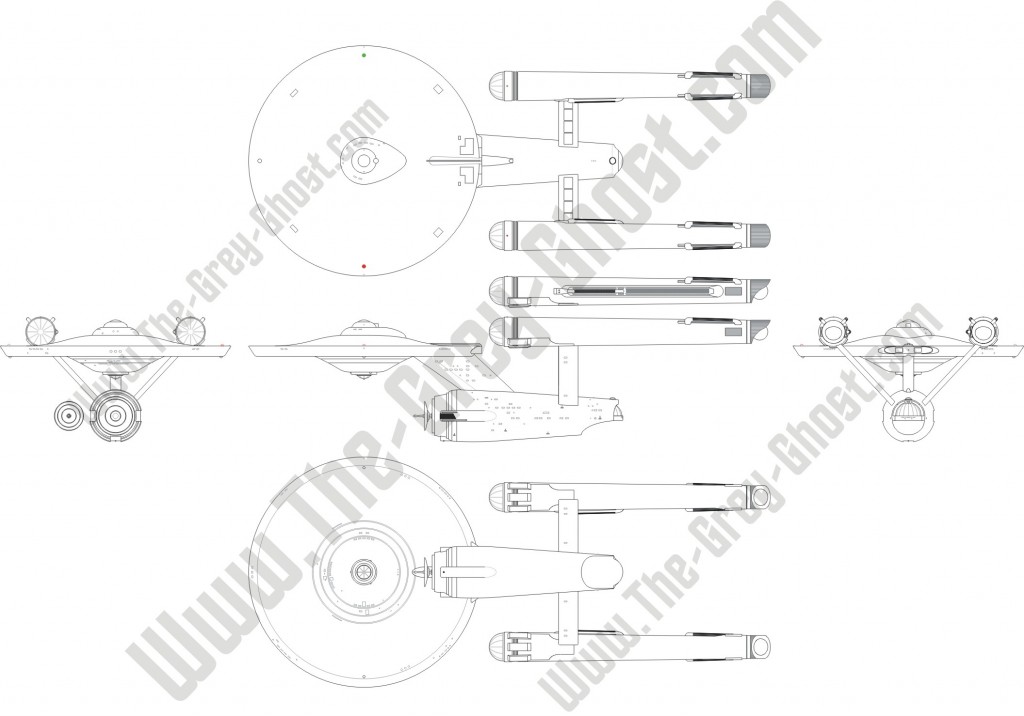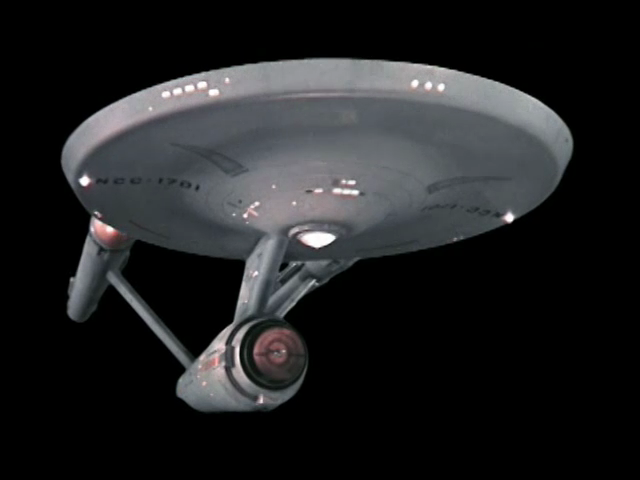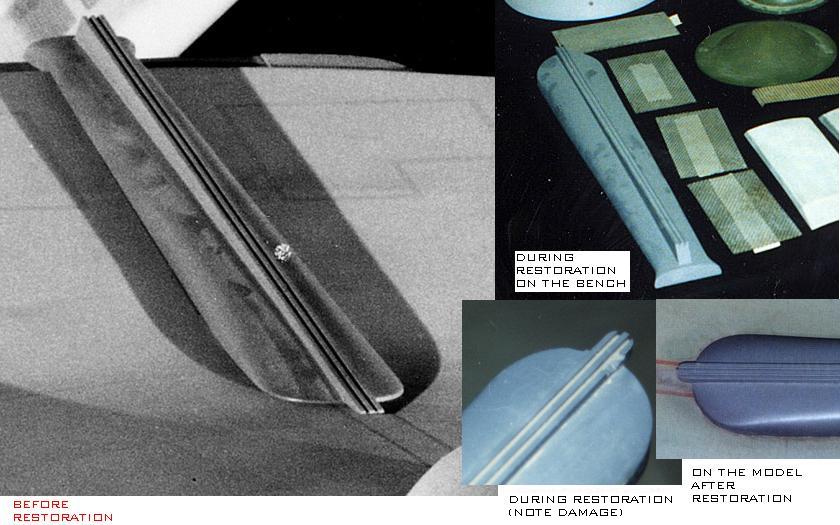After the primer stage it’s time for some assembly.
I mentioned the instructions that came with this kit is only good for a very loose guideline for building this model. (This is something for those of you out there that think you have to follow the instructions absolutely). The people that create these kits are not infallible, they can’t think of everything.
Contrary to some people’s opinions they are only human like all of the rest of us.
Here is one of the issues I found that if I followed the instructions. This task would be considerably more difficult. This pic is from Sean Sides build to illustrate my point.
Note the ends of the warp nacelles, what they are being supported on. This is what your supposed to do to align and level the engines. Along with taping across the pylons to the correct angle. Now the problems with this method are numerous, but in the hands of a pro like Sean he makes these things look very easy.
What s wrong with this method?
Your expected to support and align the engine on the ring below the endcap(pic above). It isn’t attached to the engine, according to the instructions that’s what you’re supposed to do first. I didn’t like this method because if this piece is not centered on the nacelle, the whole nacelle will be out of alignment.
If your going to align the engine you want to use the parts that are solid and hopefully straight. Where is the best place to align the nacelle?
From the long tube that makes up the nacelle, I don’t have to glue anything on to support the whole thing. But I do need to do something to support the nacelles in front of the pylons, for they can move there just as easily as they can on the other end. So I need a method to keep them in line.
Here is what I came up with.
This is called a jig, it’s used to align parts so you can put them where you want them. These sort of things are common in industry, so why not with models. The rails below the model have slots to accommodate the jig apparatus. There are six slots for this model, the first is a stop, the second supports the 2nd hull, the third supports the engines and aligns the pylons, the fourth supports the hull under the pylons, the fifth does the same job as the 3rd, and the last supports the nacelles.
The parts that support the nacelles can be adjusted, to level the nacelles.
Here is the part that supports the nacelles, and aligns the pylons.
Here is a way not to level the nacelles. Since they are tapered it would be pointless to do this. because the results would not be desirable. You will see there is one more slot position on the end of the rails. These are the positions indicated by Custom Replicas to support the nacelles(which are redundant, now). Now that I have a jig for the hardest part of the model to align, is there anywhere else on this model that could use a jig.
The answer is yes.
This jig is used to align the parts at the end of the nacelle, it works for both sides.
It provides a stop so the parts are placed into position.
It does something else, it aligns the troubled endcap. 
Lucky the ends of the nacelles are more or less the same size. That isn’t the case with the forward parts of the nacelles.
The fronts of the nacelles were different sizes, so I couldn’t make one jig for both sides. The funny thing was the manual stated, “The correct diameter of the front of the nacelle tube is 3.685″.” When I measured the parts, I didn’t get that number on either of the nacelles. After all it is a garage kit, to expect that kind of precision is ignorant or delusional.
These jigs were only for the dome shields. I’ll go into how I aligned the bussard mounts later(That’s just as easy).
I realized I needed something to support the saucer, it’s shimmed to get it to the right height.
After some time I made changes to the jig.
I shortened the rails and…
allotted for the flux chiller, there is a stabilization rail to keep the nacelle jigs in line.
If anybody want’s one of these jigs for this model, contact me at “commandermax@the-grey-ghost.com”. It makes building this kit a lot easier.
The next thing is the lighting, it has been taking me forever. But the results are amazing.

